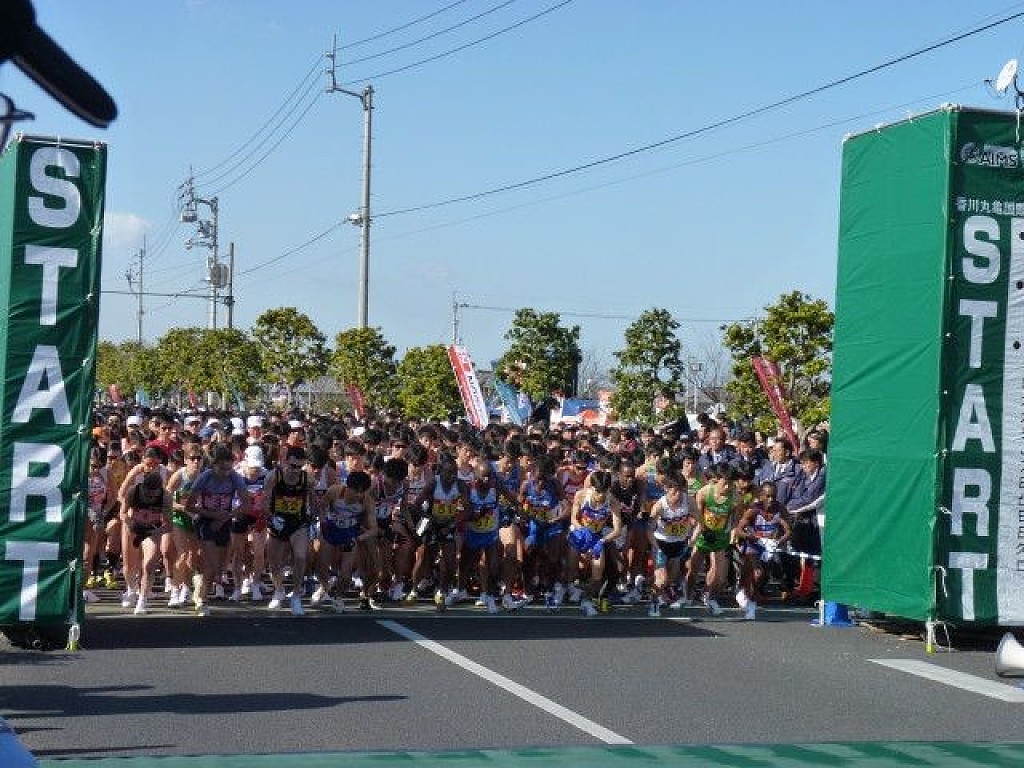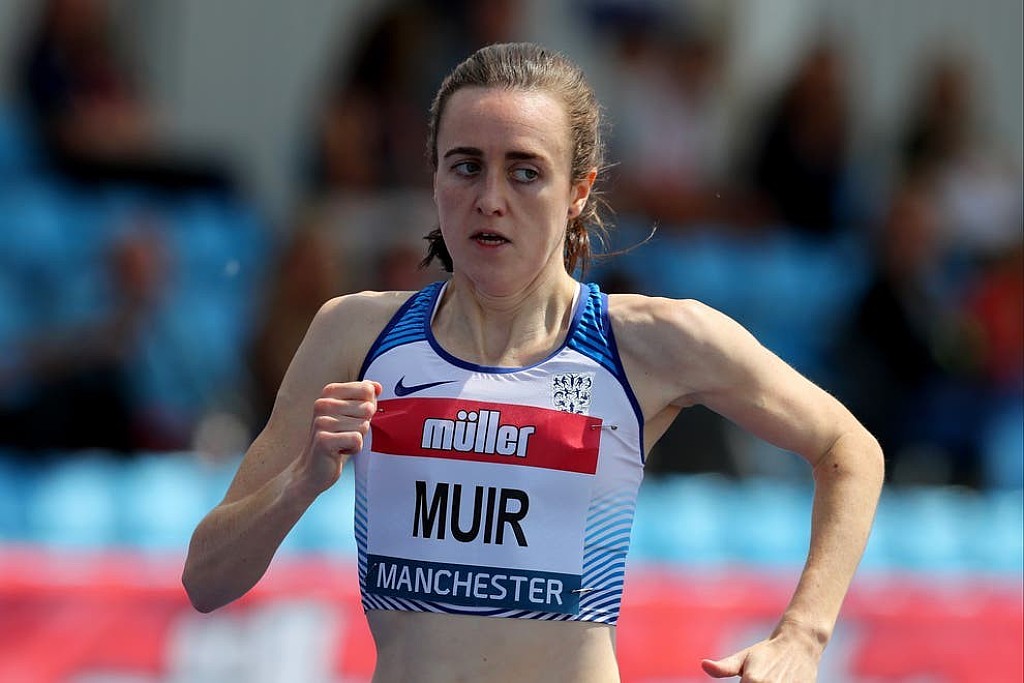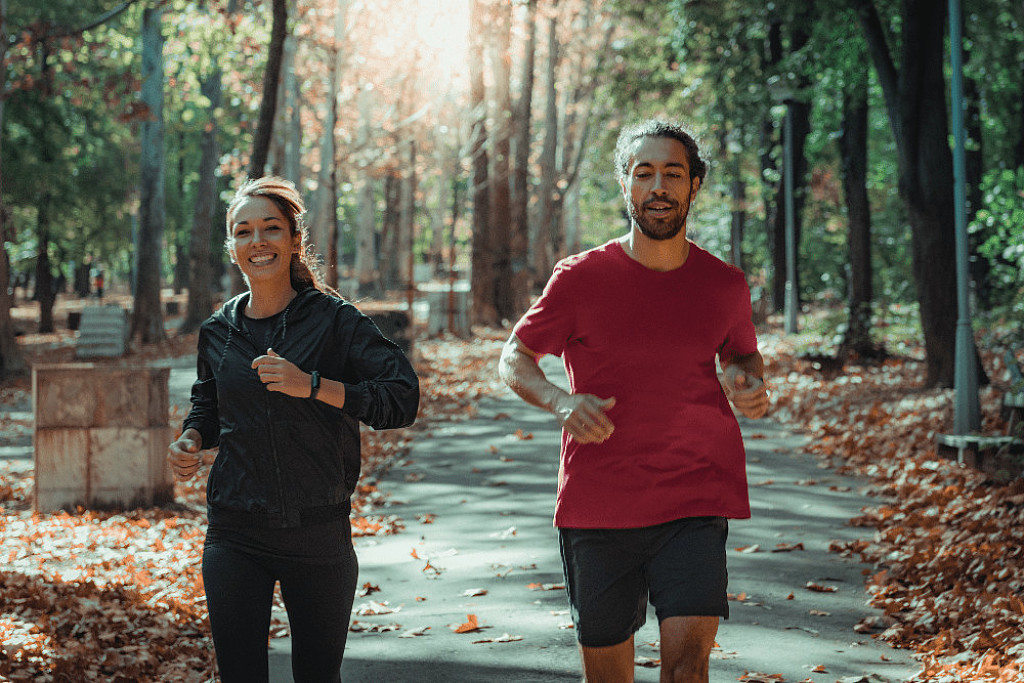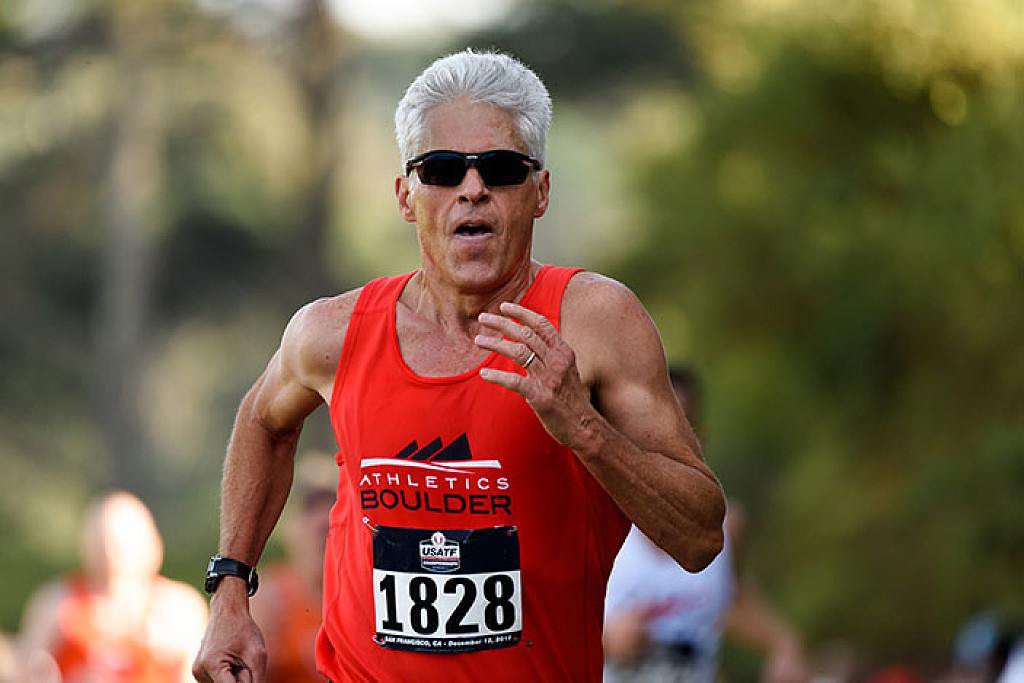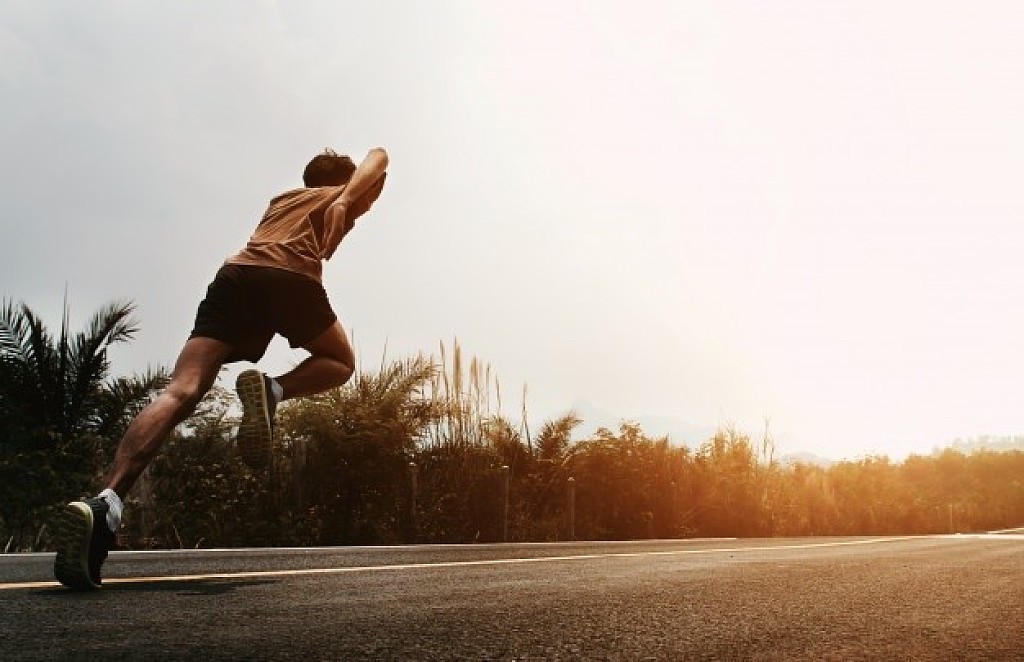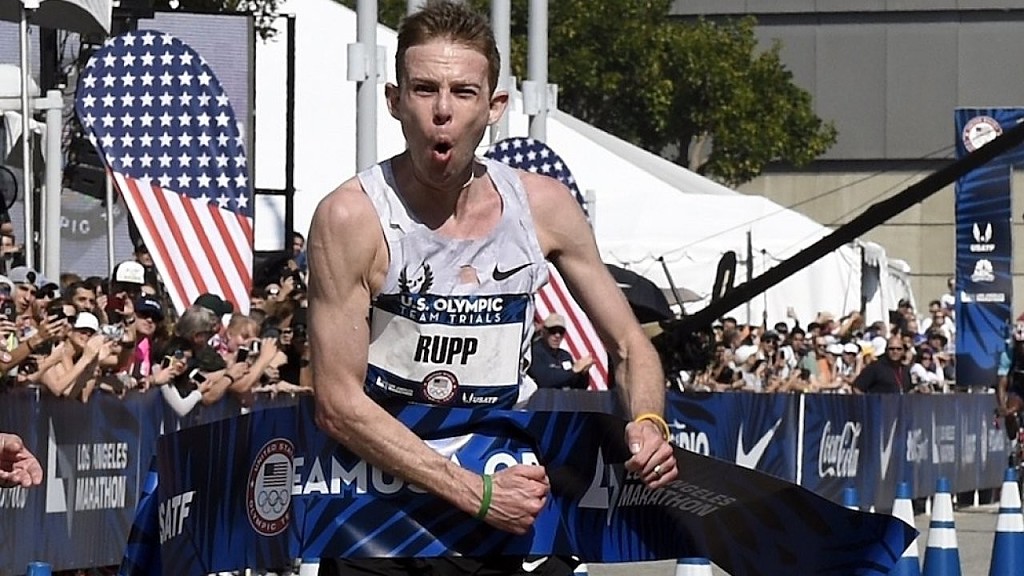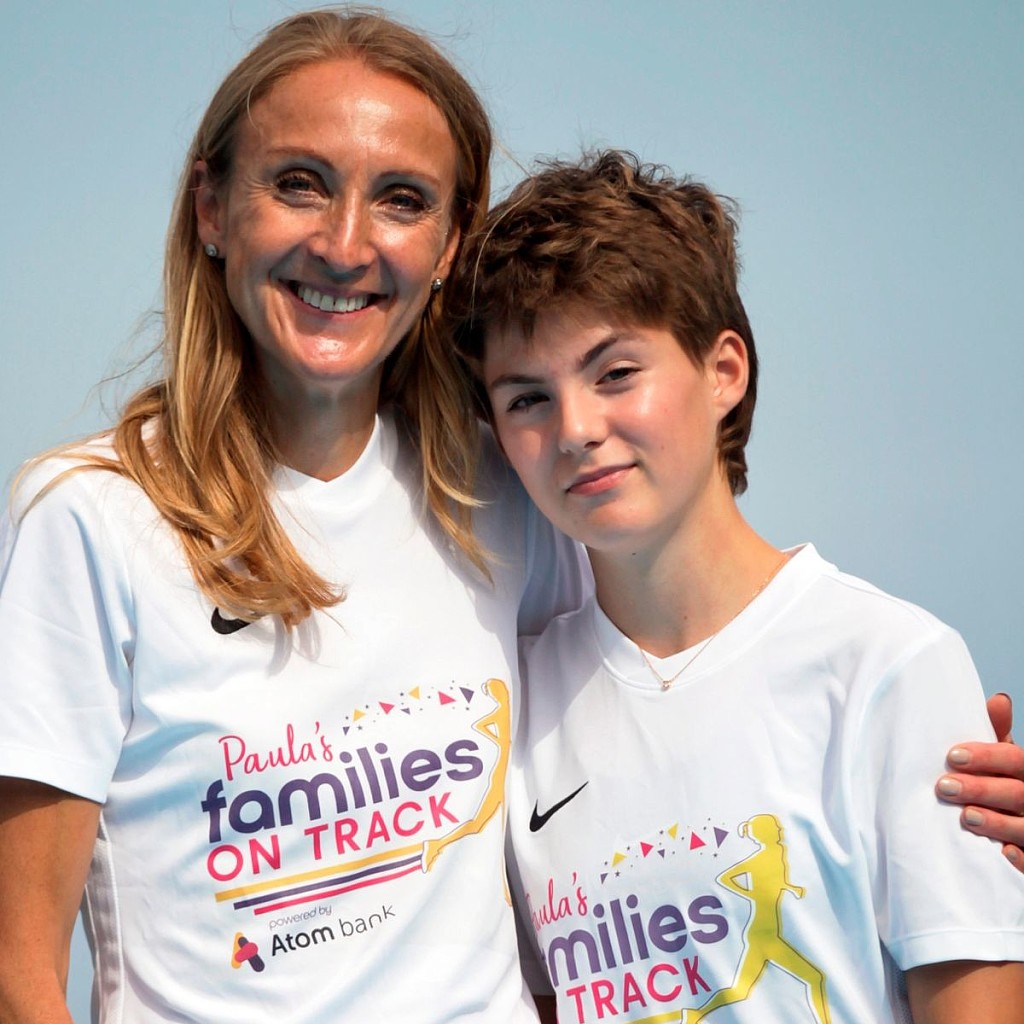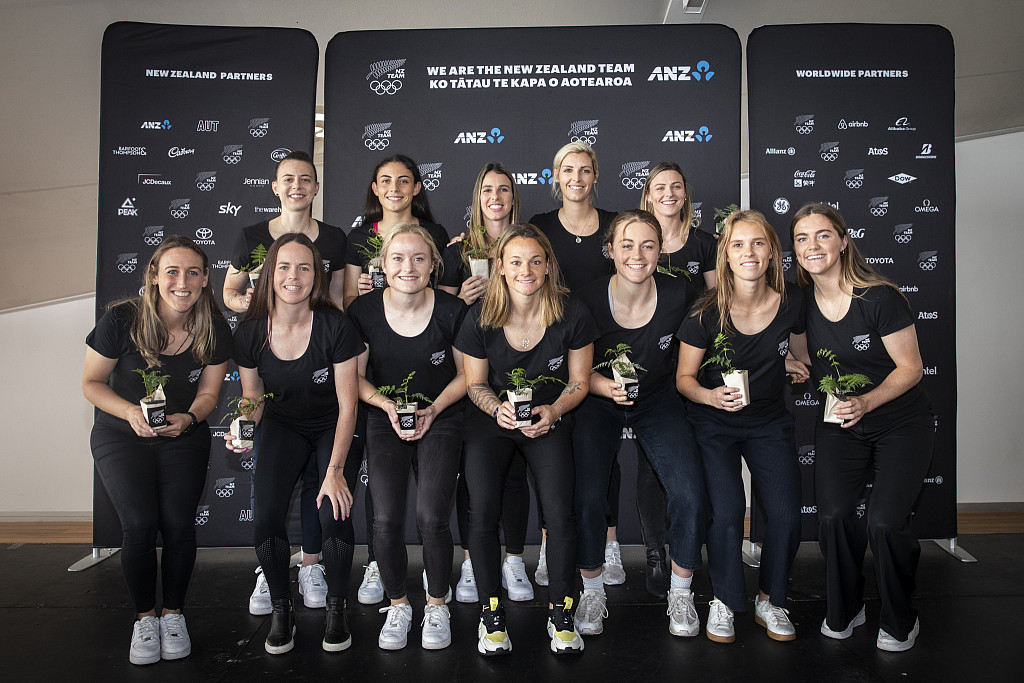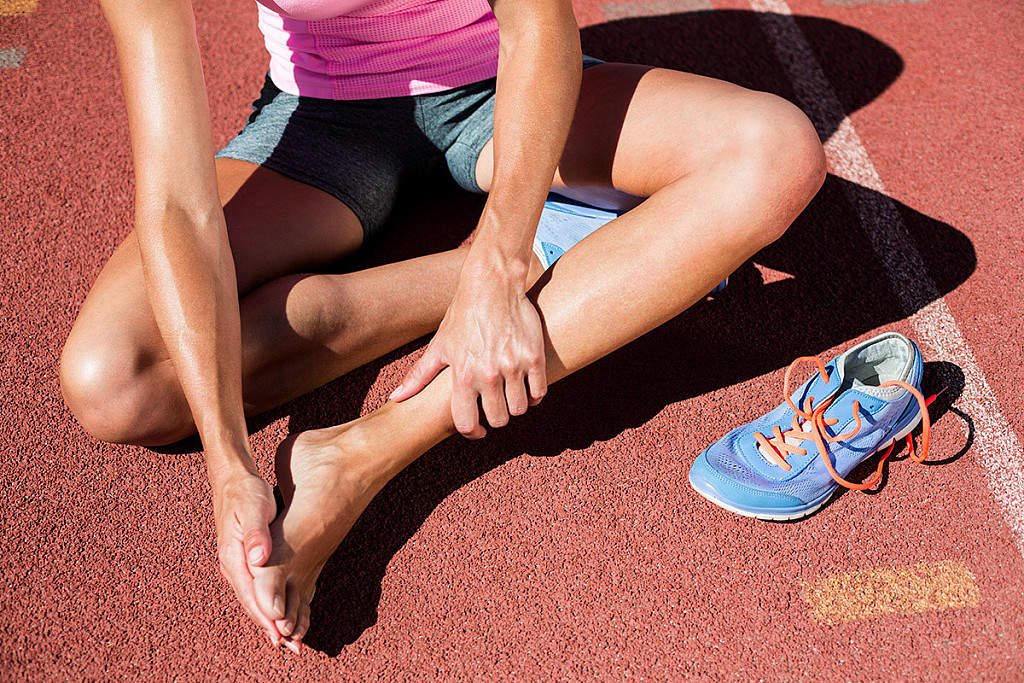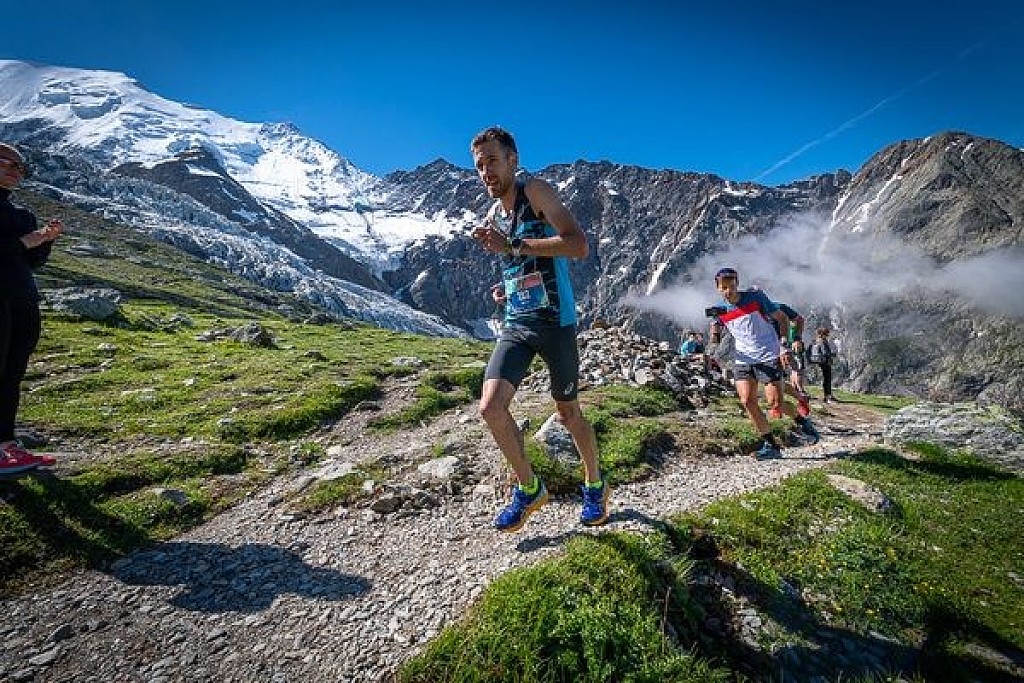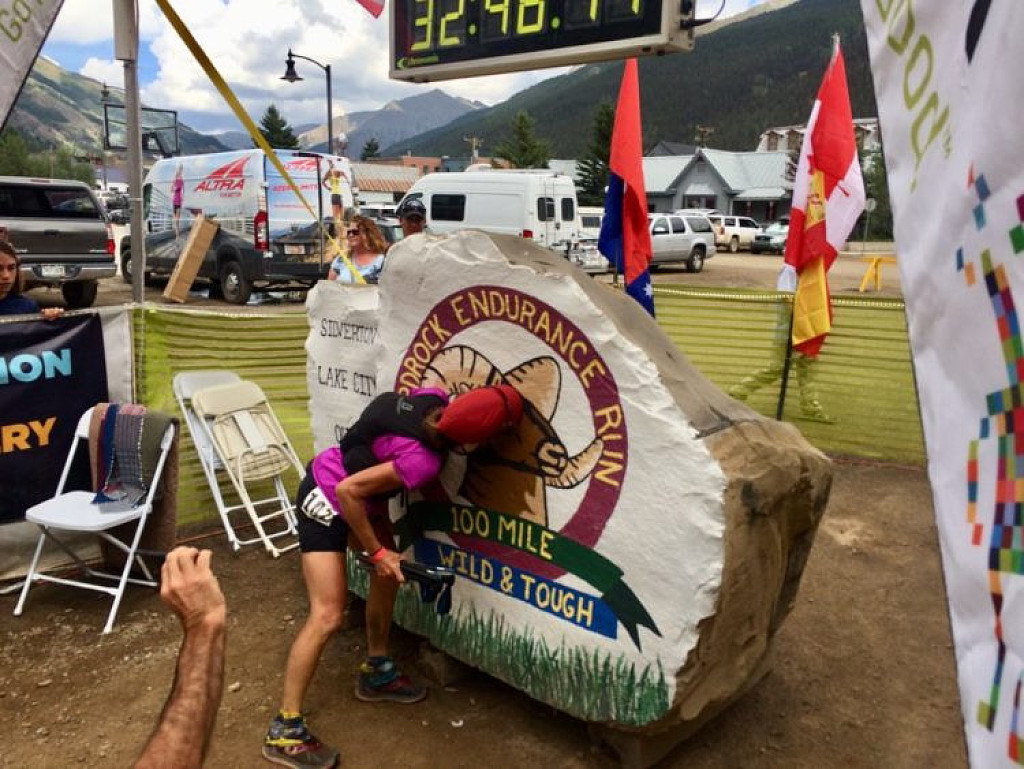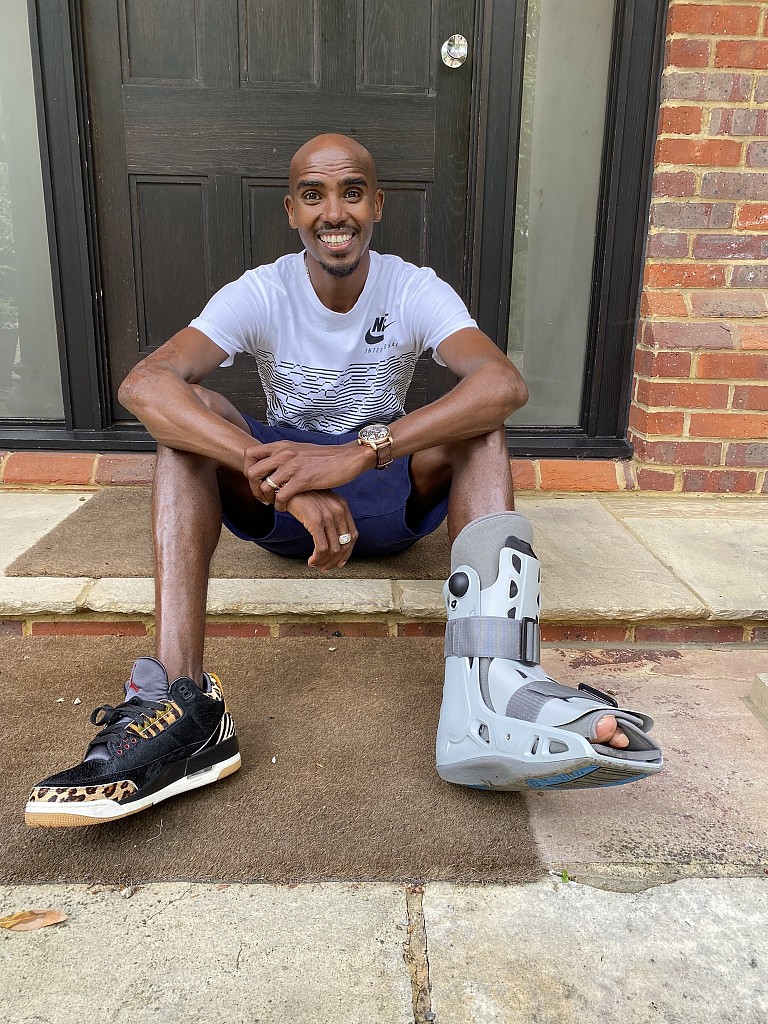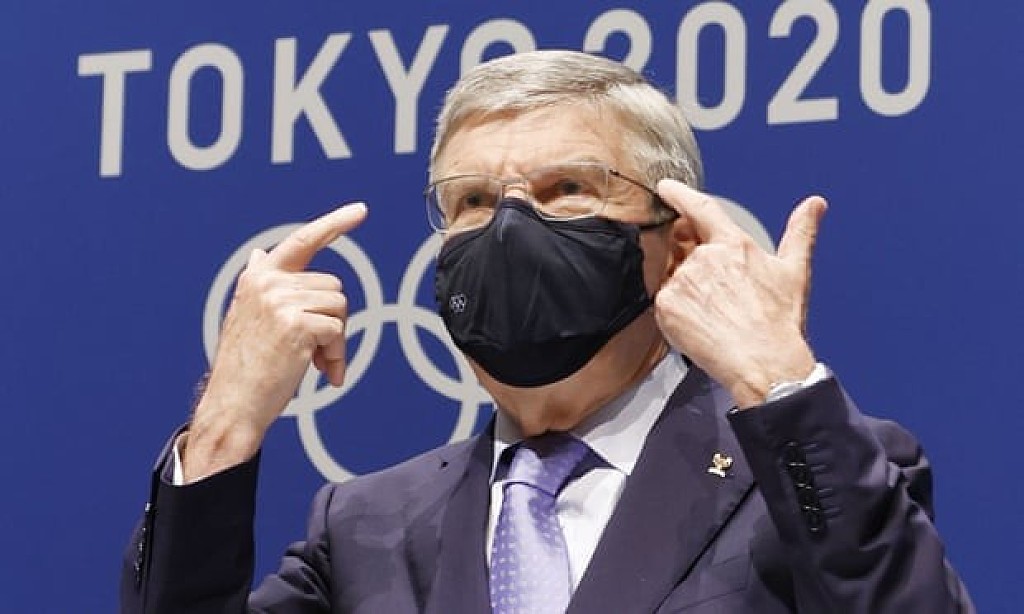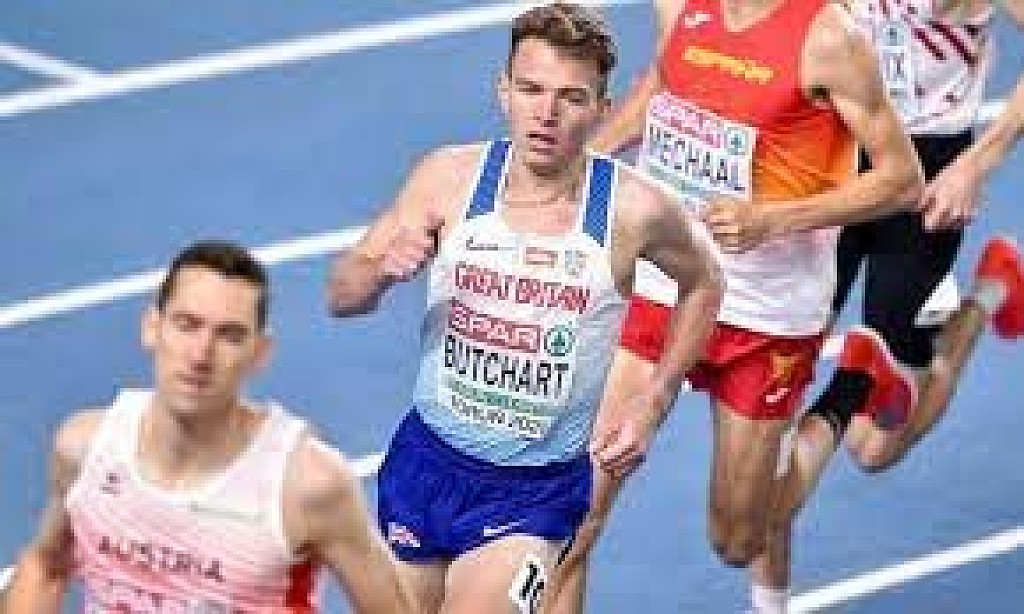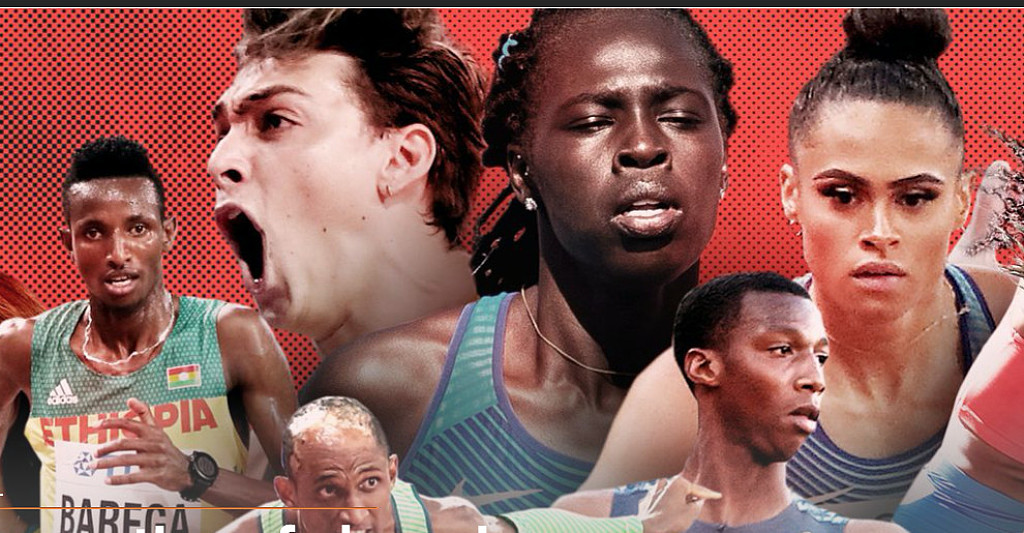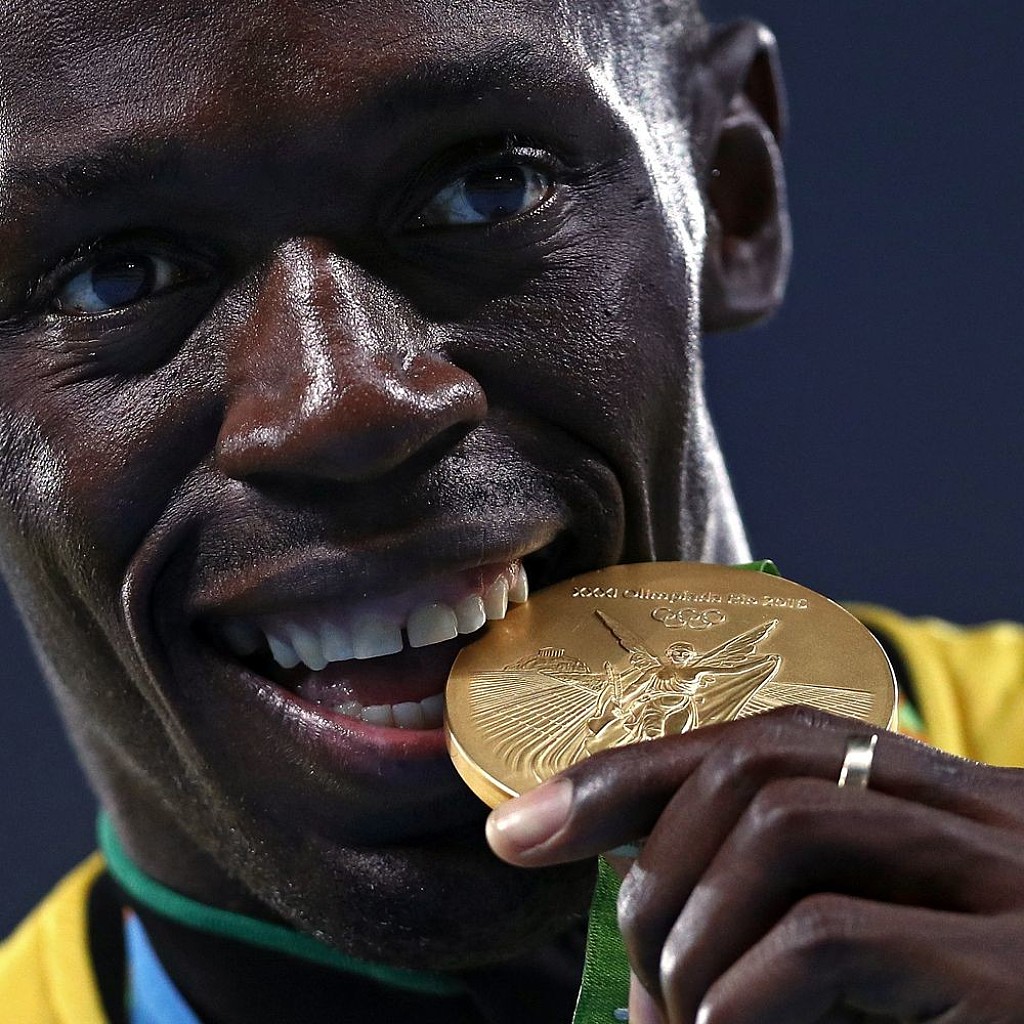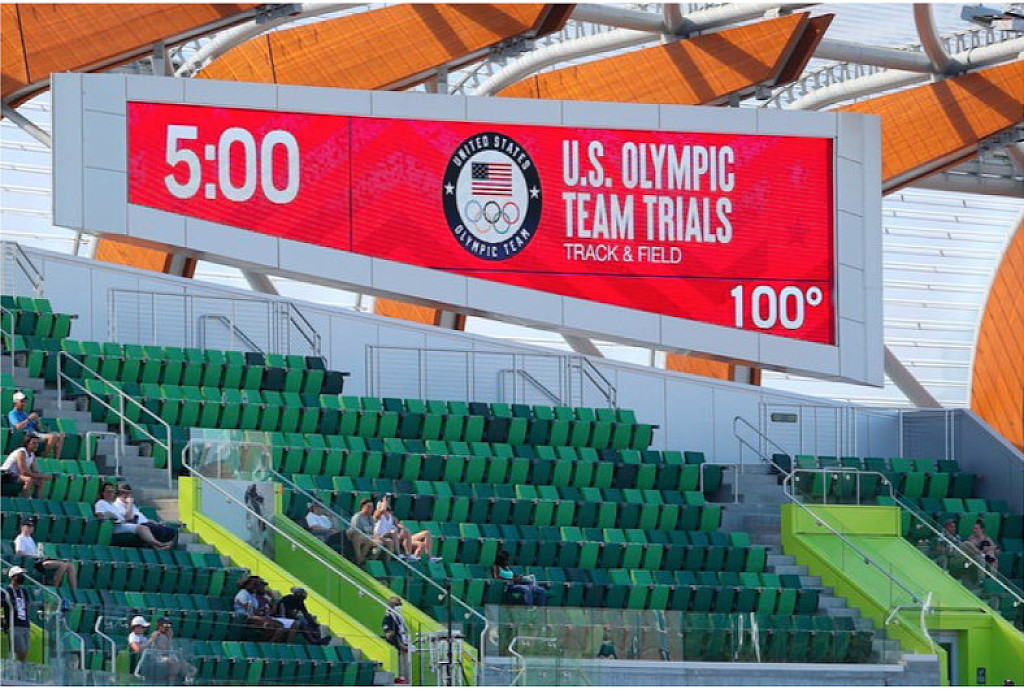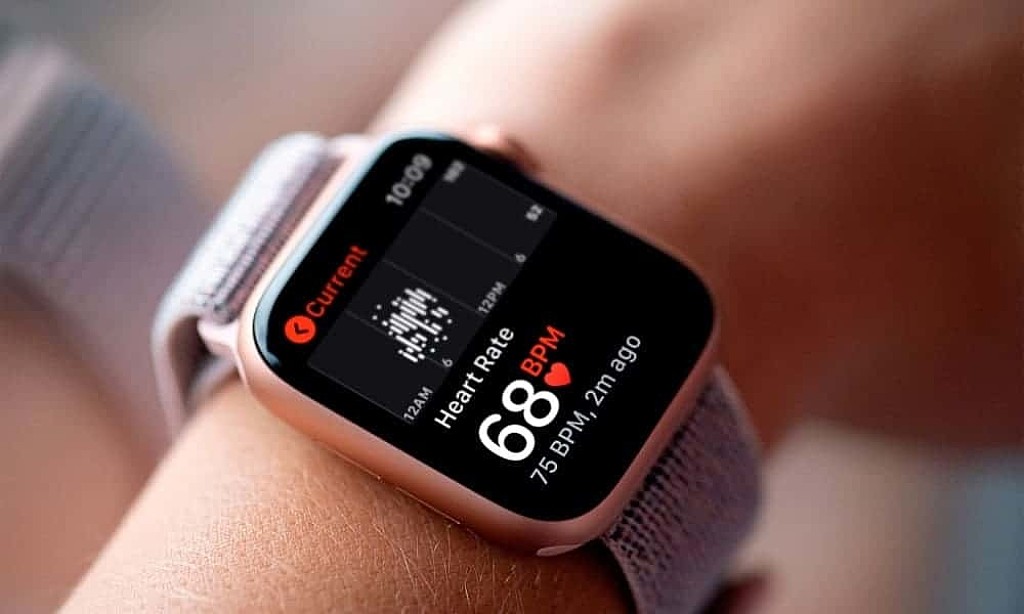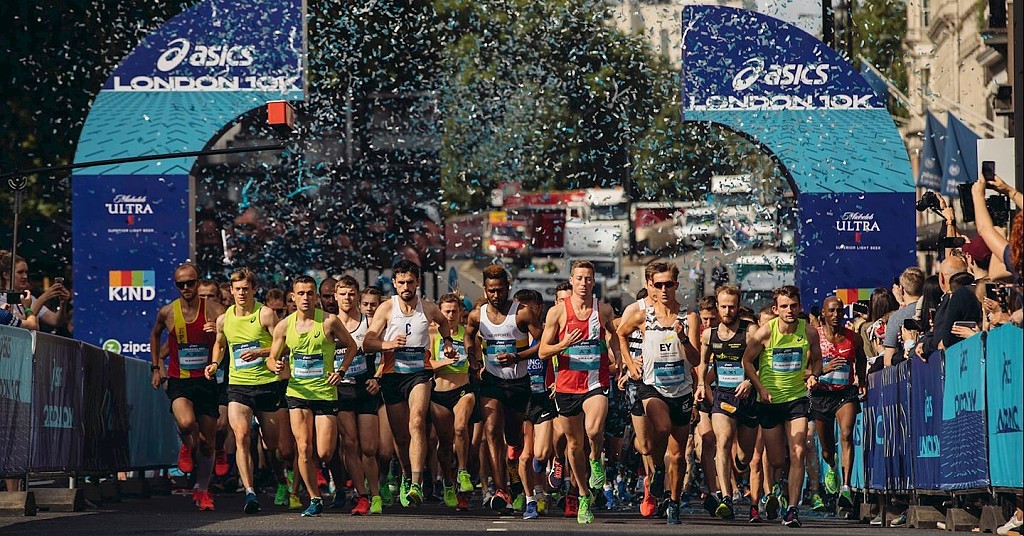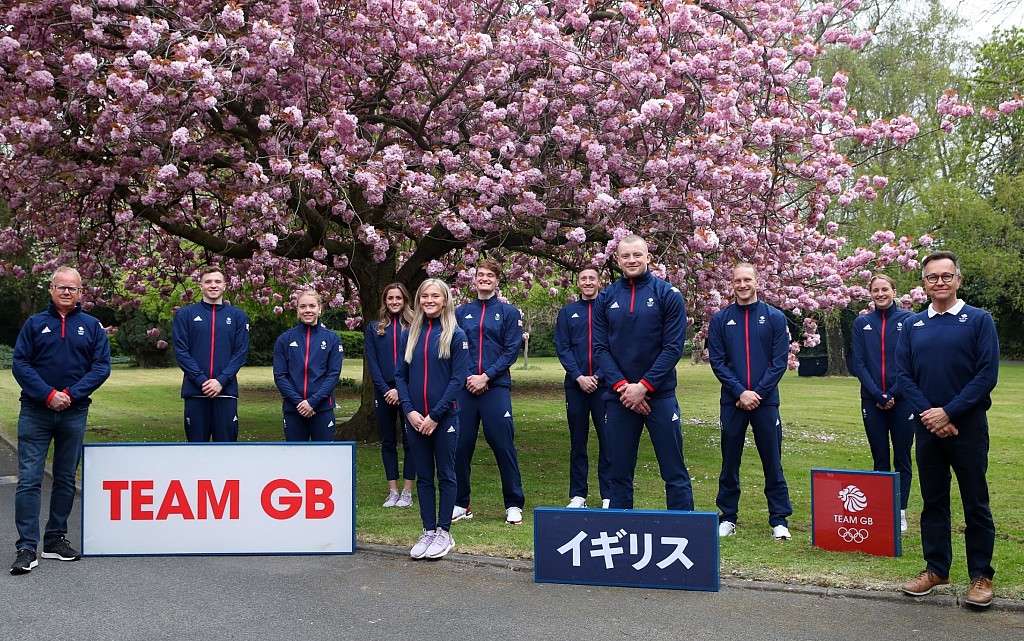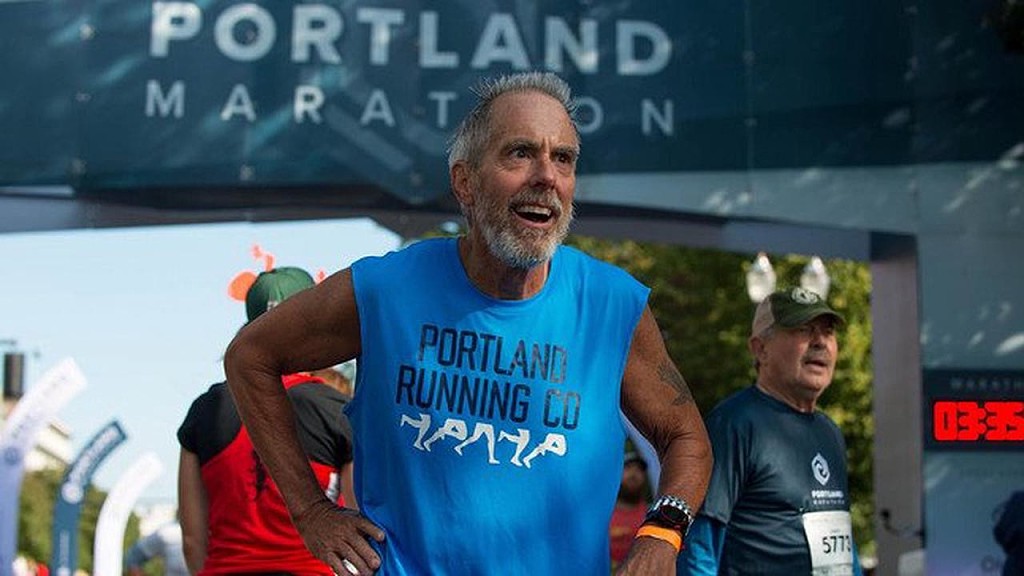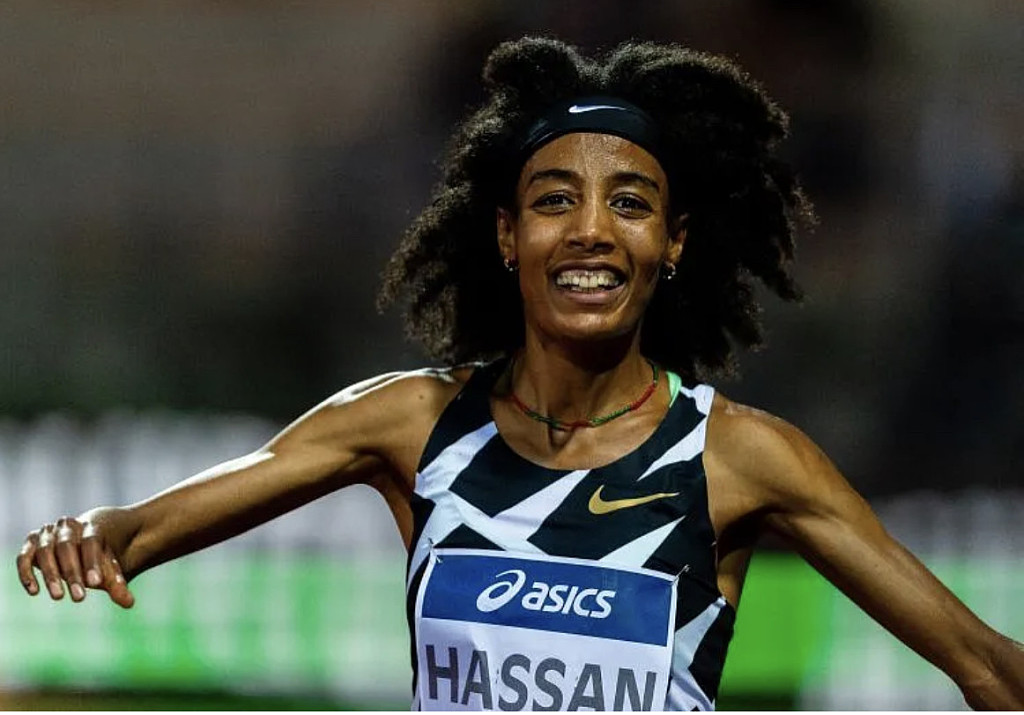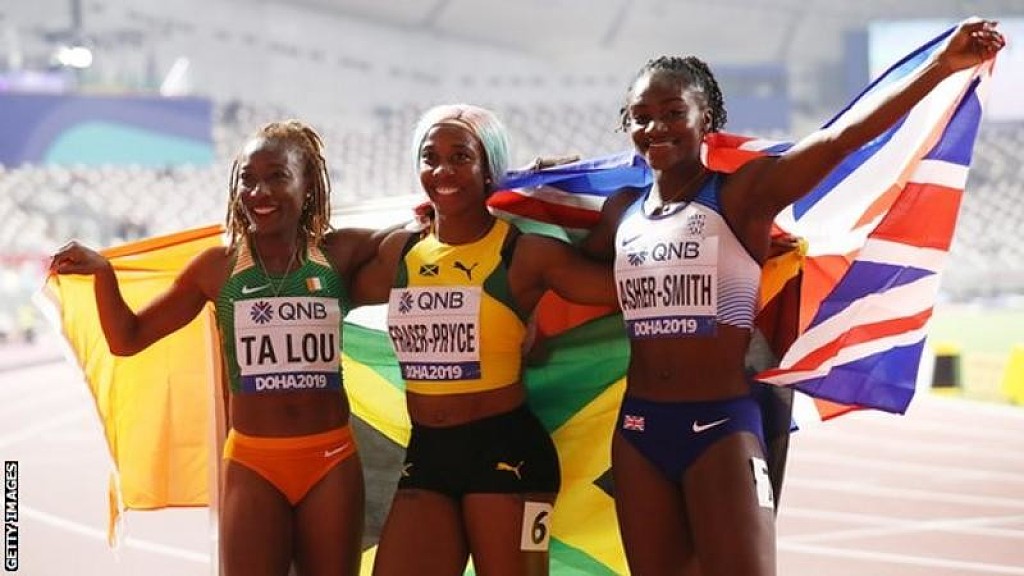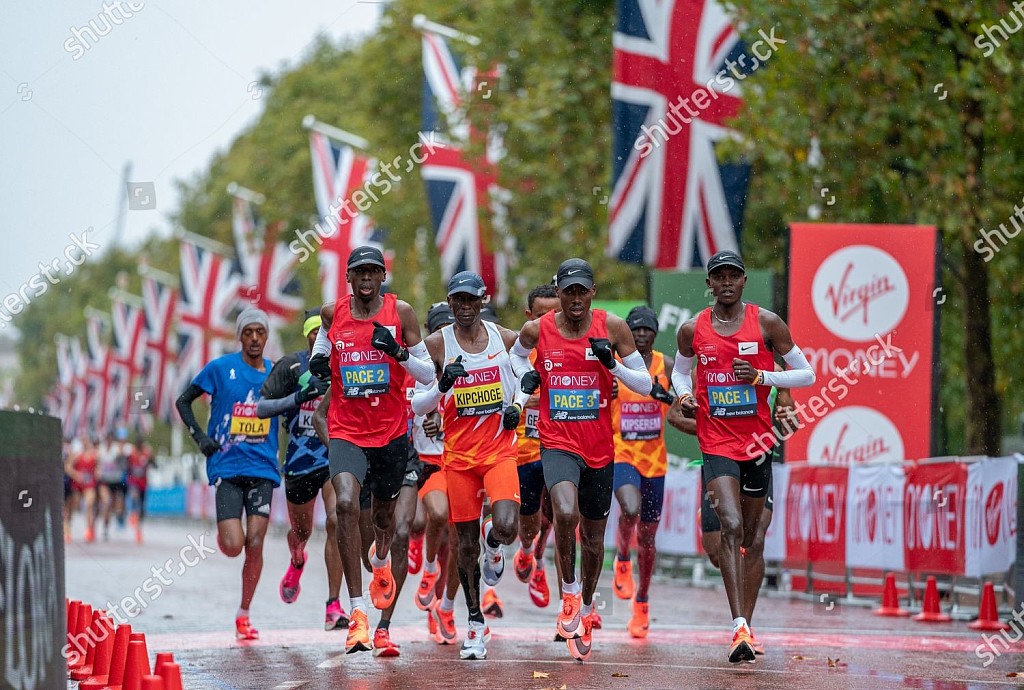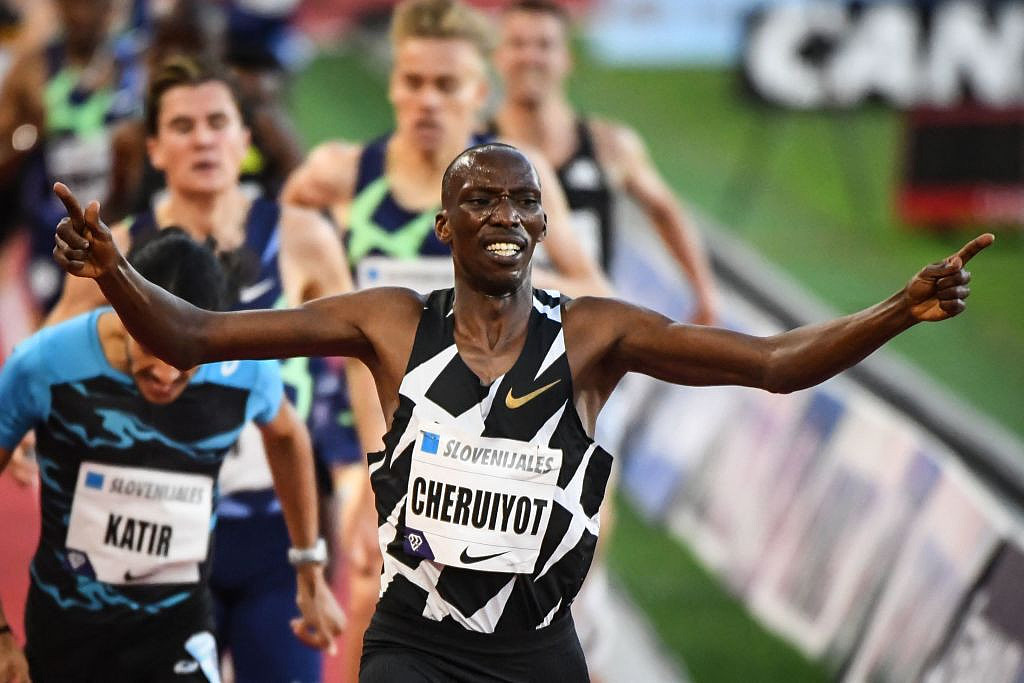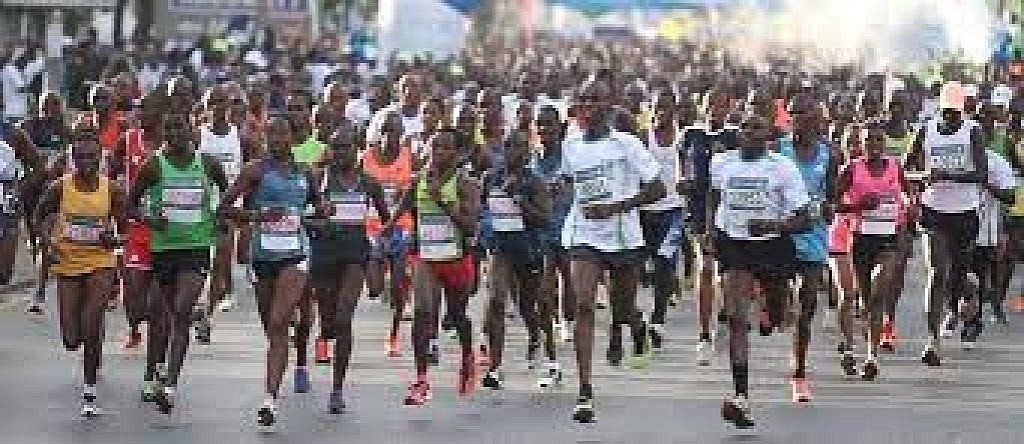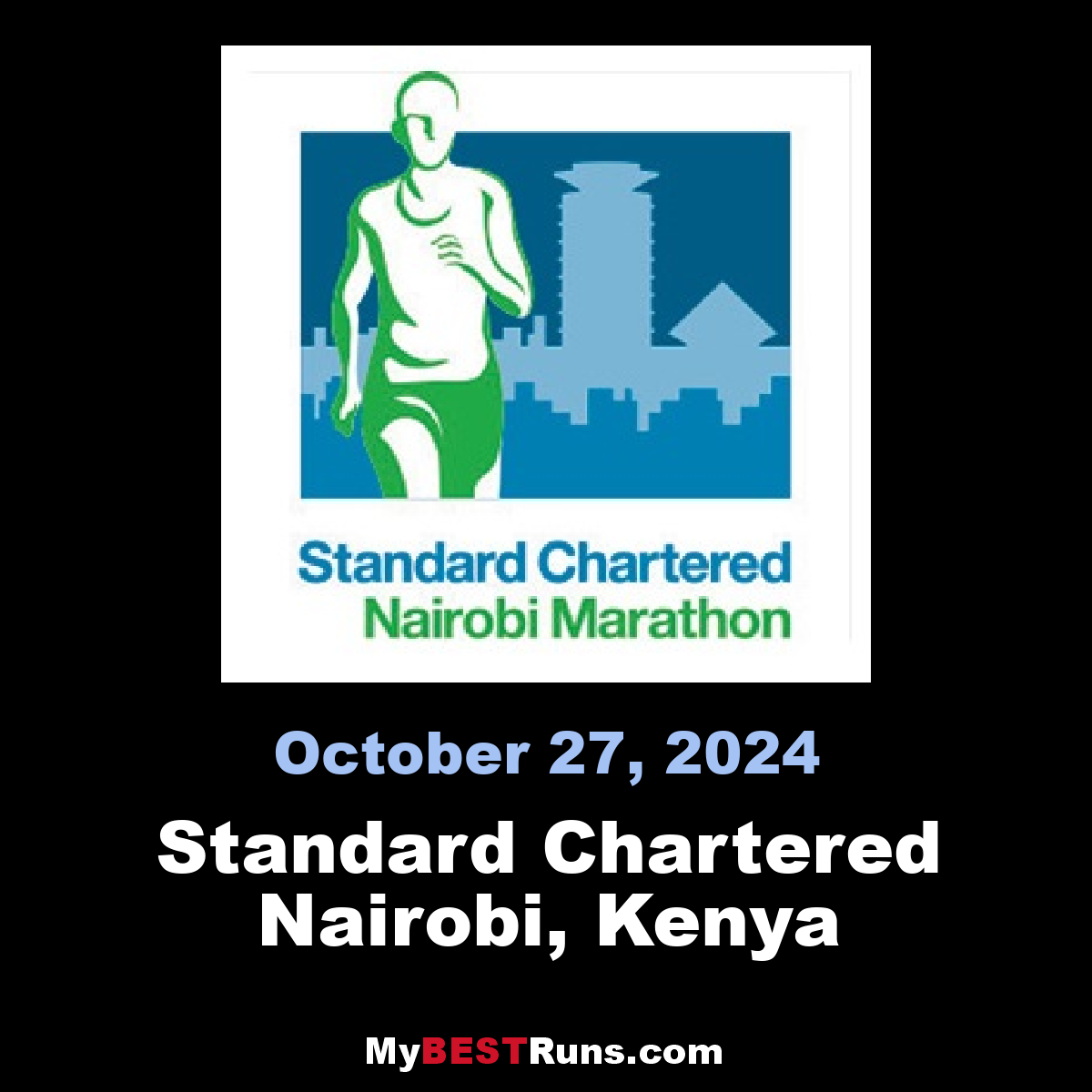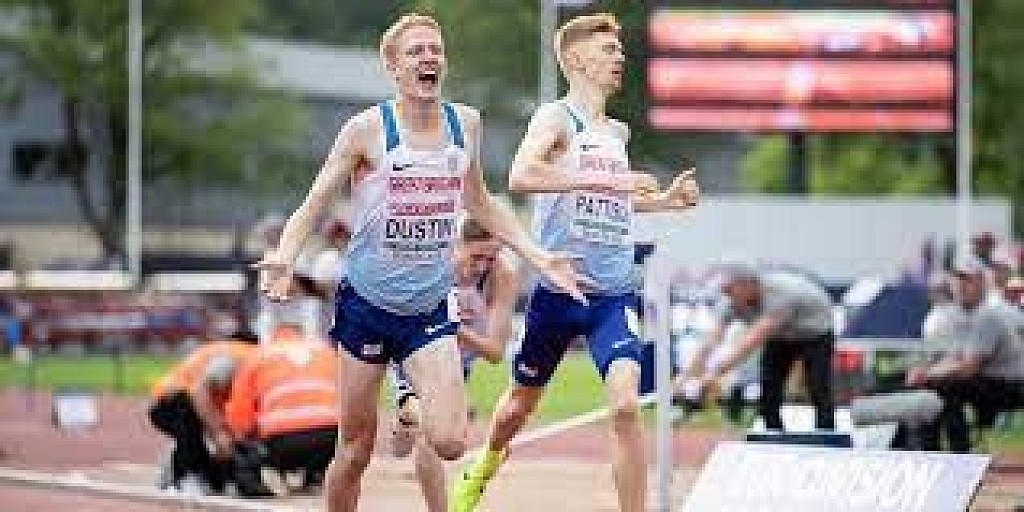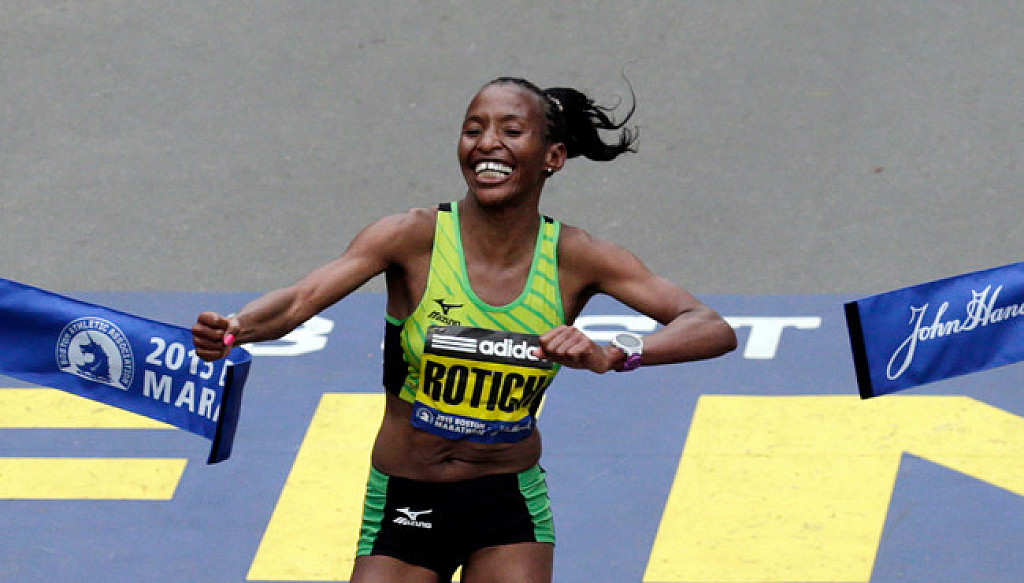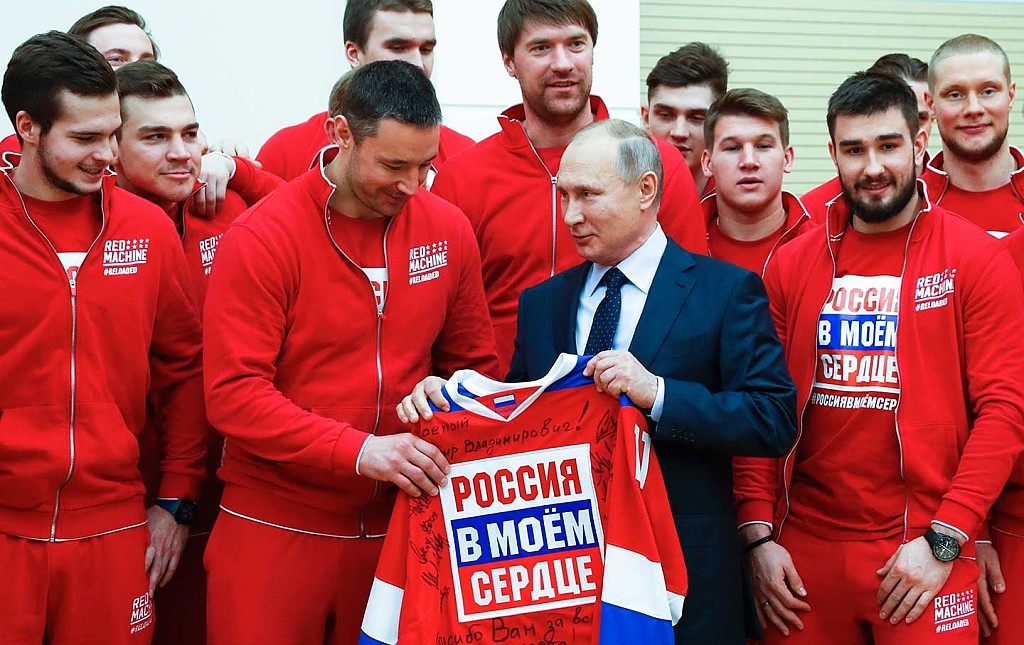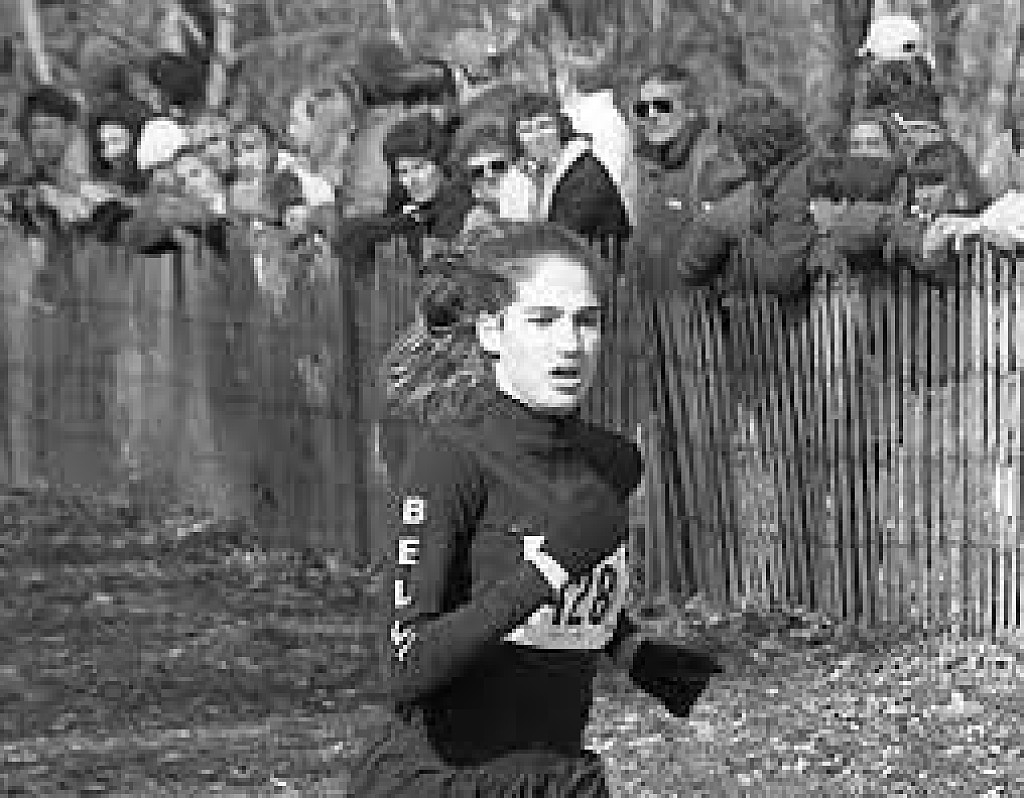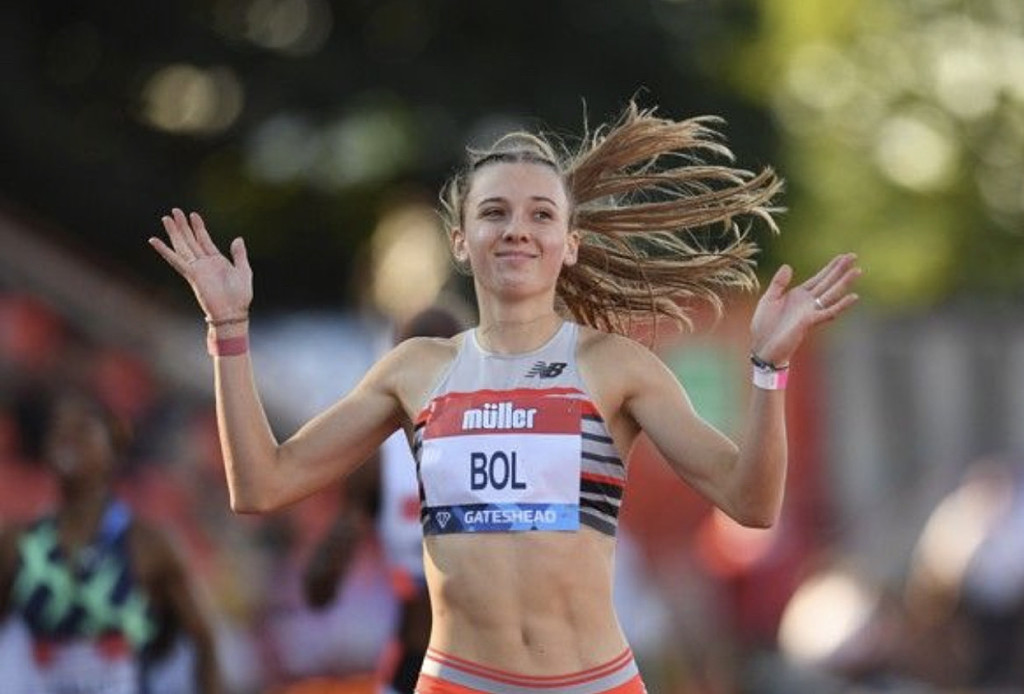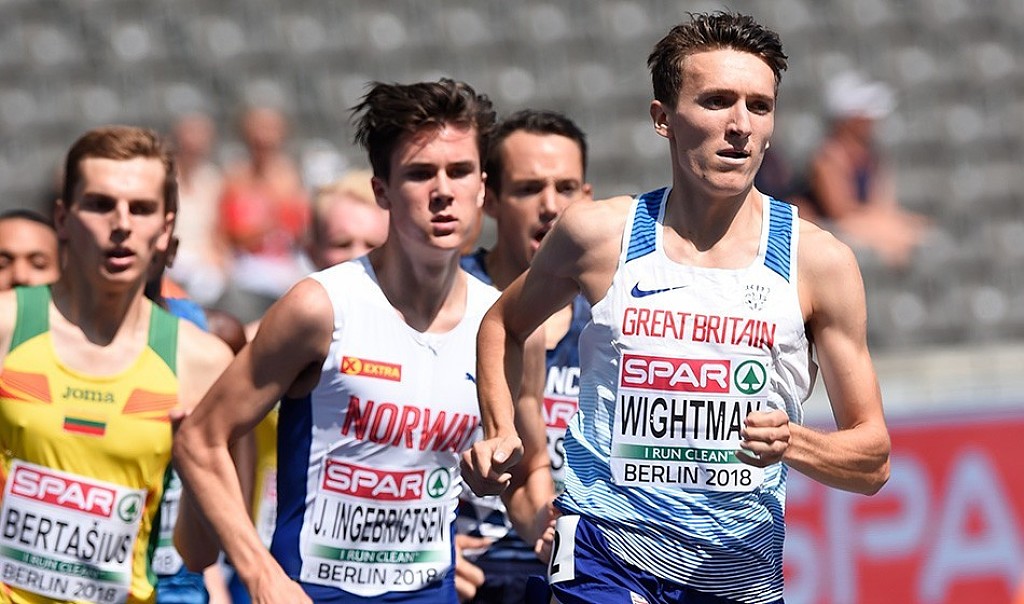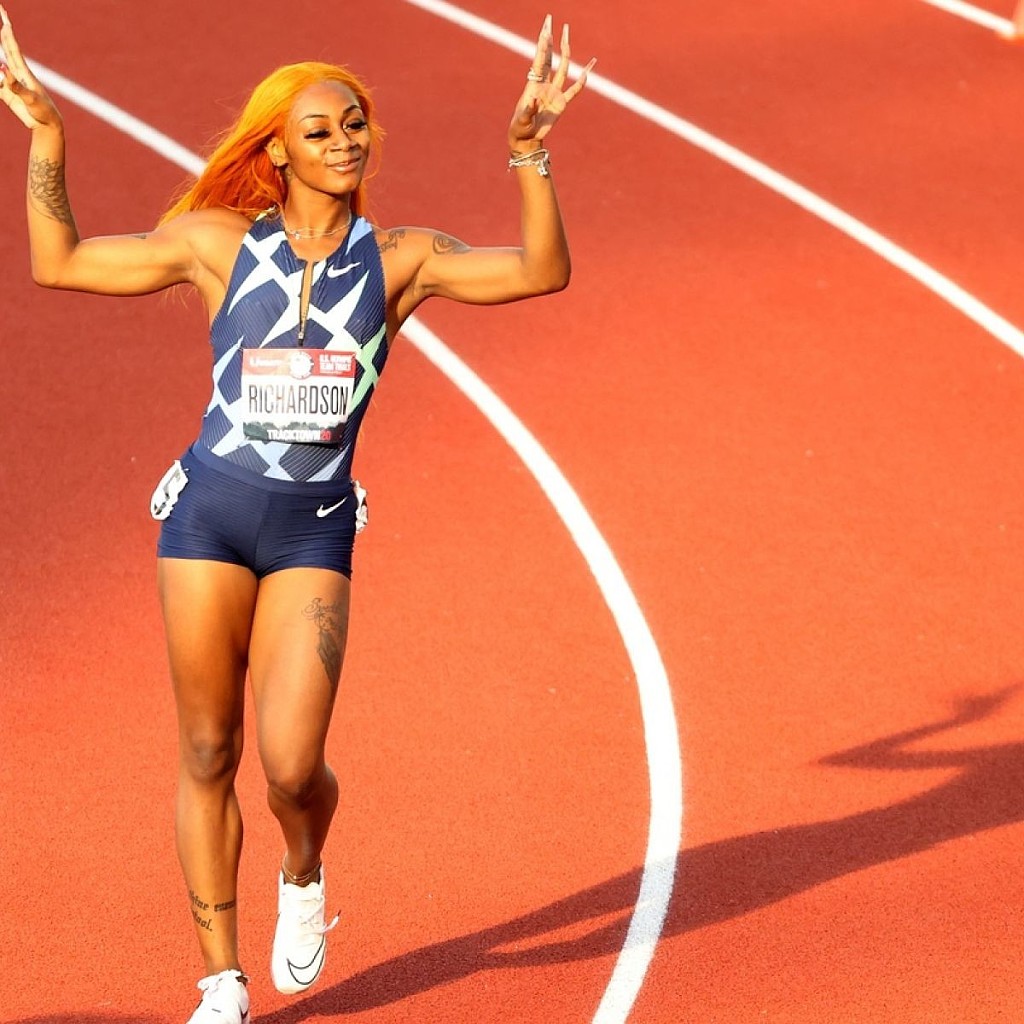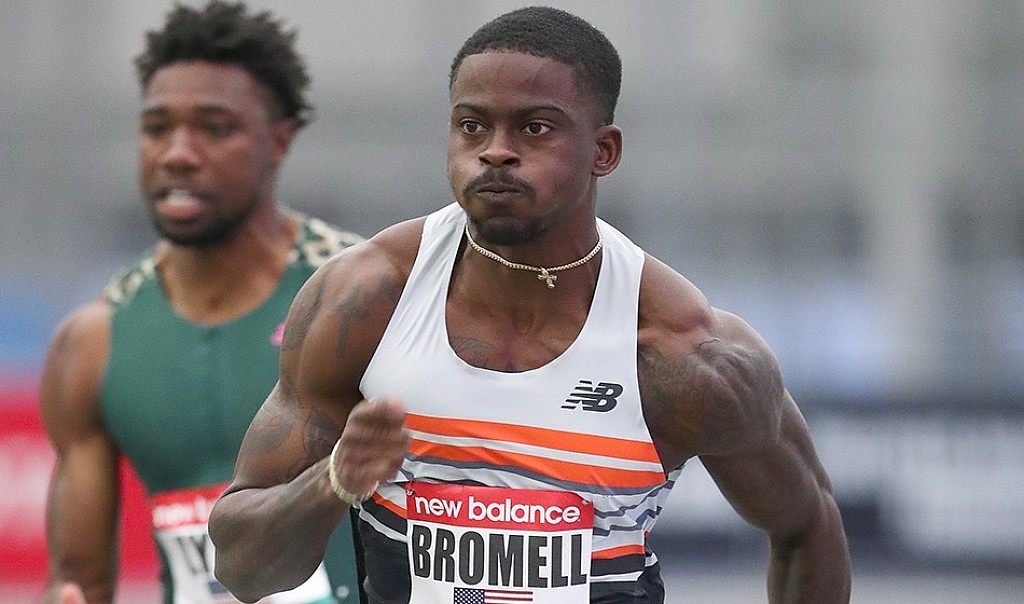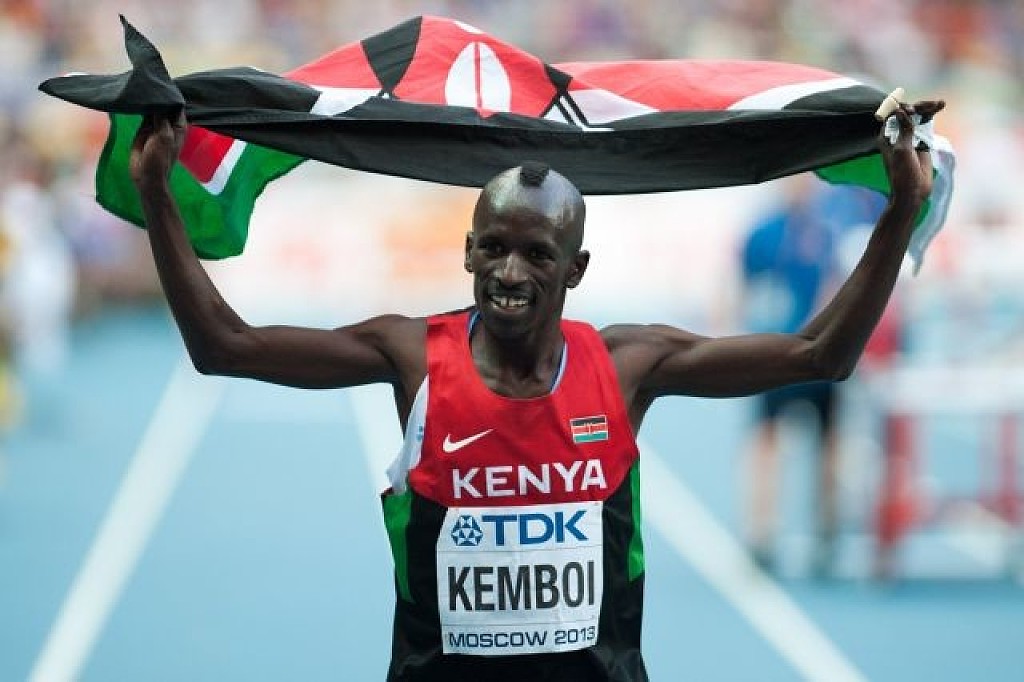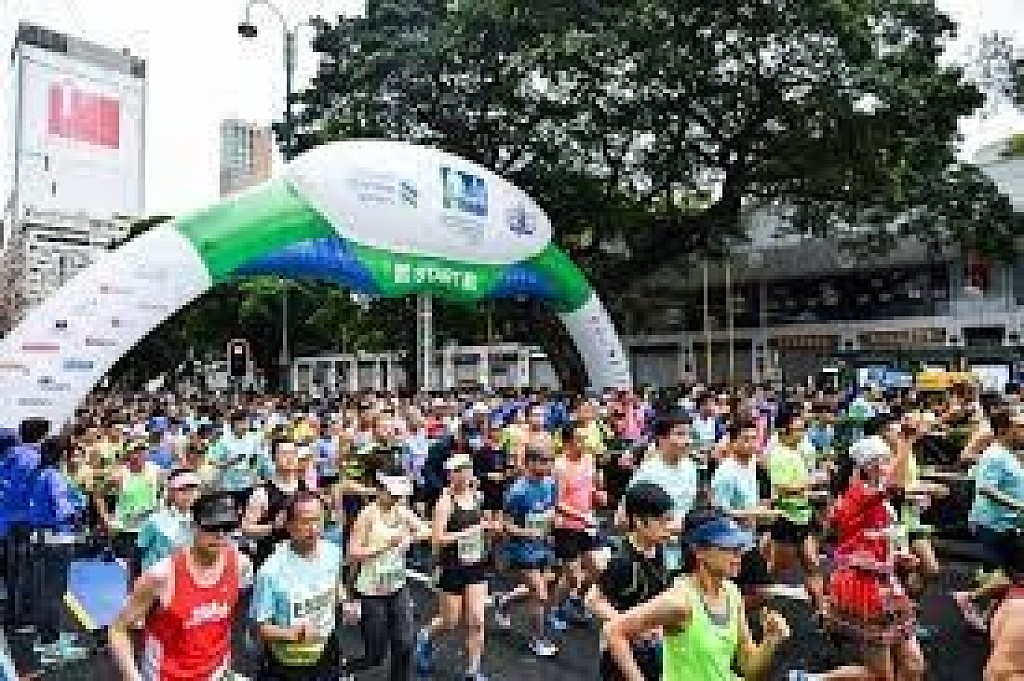Running News Daily
Running News Daily is edited by Bob Anderson in Mountain View, California USA and team in Thika Kenya, La Piedad Mexico, Bend Oregon, Chandler Arizona and Monforte da Beira Portugal. Send your news items to bob@mybestruns.com Advertising opportunities available. Over one million readers and growing. Train the Kenyan Way at KATA Running Retreat Kenya. (Kenyan Athletics Training Academy) in Thika Kenya. Opening in june 2024 KATA Running retreat Portugal. Learn more about Bob Anderson, MBR publisher and KATA director/owner, take a look at A Long Run the movie covering Bob's 50 race challenge.
Index to Daily Posts · Sign Up For Updates · Run The World Feed
2016 Olympic gold medalist triathlon Gwen Jorgensen is Leaving Bowerman Track Club
After four years at the Nike-sponsored club coached by Jerry Schumacher, Gwen Jorgensen announced today that she’s leaving Bowerman Track Club to be coached by Bobby McGee, who she has worked with in the past.
In a video uploaded to her YouTube channel, Jorgensen explained that a mix of career and family goals led to this decision. “I’ve had two marathons that just haven’t proven I can do it,” she said. “I want to just have a marathon, that’s like, OK, I can run this.” She and her husband, Patrick Lemieux, are also looking for a new place to live and are considering having more children.
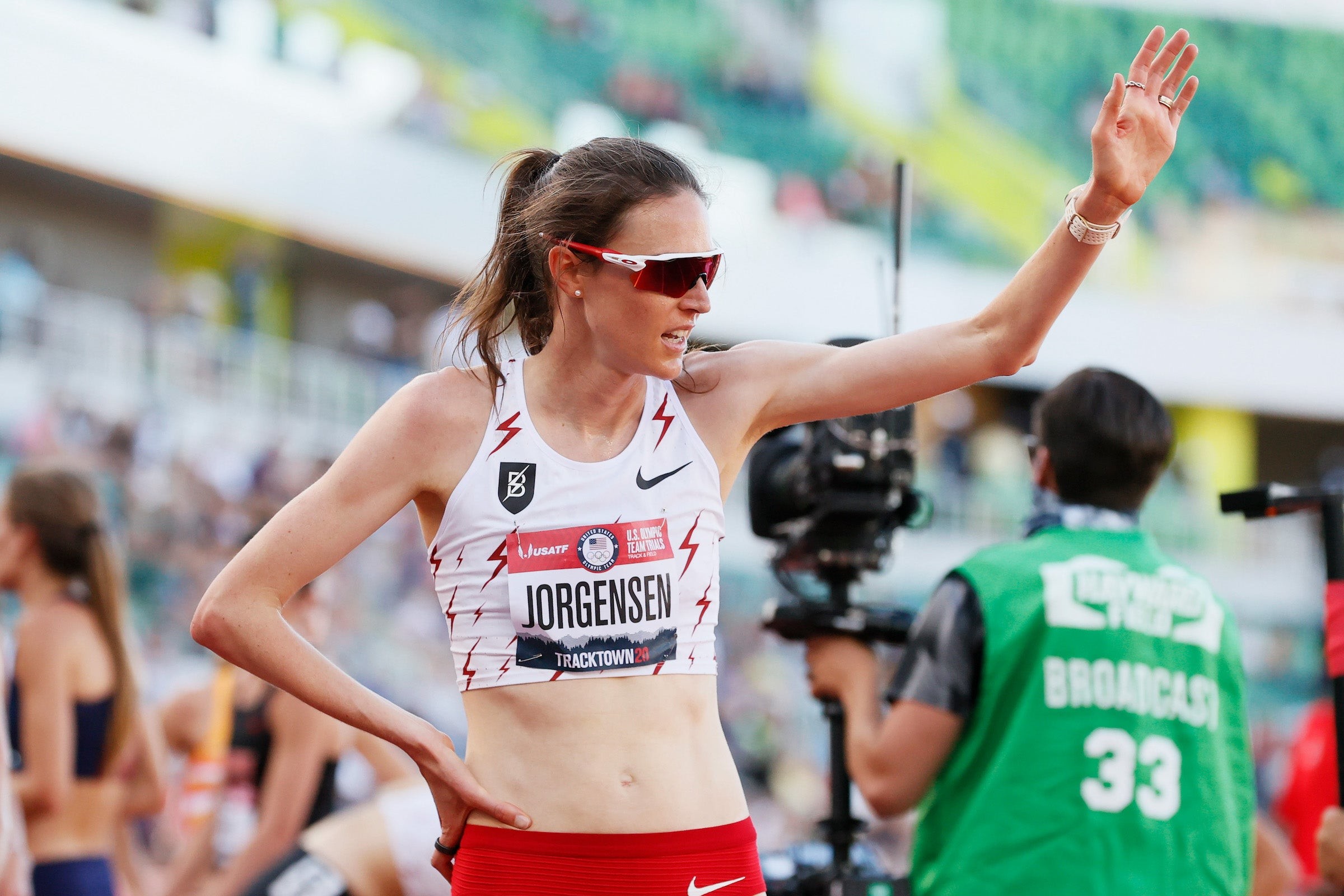
Jorgensen won the Olympic gold at the Rio Games in 2016 in triathlon, and announced a year later she would shift to running, with a focus on medaling in the marathon. Due to extended recovery after heel surgery to repair Haglund’s deformity in May 2019, she didn’t end up competing in the Olympic marathon trials last year—in early 2020, she decided to focus on the track.
“My goals in the marathon aren’t changing. My timeline is,” she said at the time.
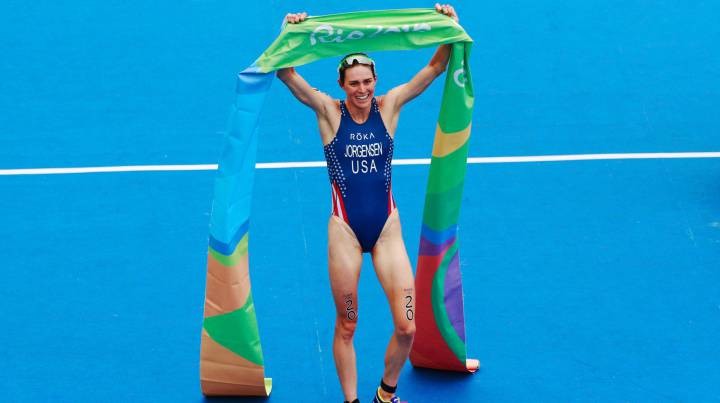
At the recent U.S. Olympic Track & Field Trials in Eugene, Oregon, Jorgensen competed in the final of the women’s 5,000m, finishing ninth in 15:50.62. (Two of her BTC teammates, Elise Cranny and Karissa Schweizer, finished first and second.) Jorgensen also lined up for the women’s 10,000m final, but pulled out sometime after recording a time of 26:50.07 at the 8000-meter mark.
“Today I had the best of intentions,” she wrote on Instagram following the race. “I got myself in good position the first mile (something I rarely do). I didn’t focus on splits, I just ran what I needed to stay in contention until I couldn’t.”
Searching for the Right Place to Live
Lemieux says that Bend, Oregon, Boulder, Colorado, and Bentonville, Arkansas are currently on their short list, and a visit to Asheville, North Carolina is next. “Really our criteria was: Can I mountain bike from the door? Can [Gwen] run outside 11, 11 and a half months of the year? And does it have good schools, and a family feel, and a small town vibe,” he says.
“We’re looking for a place that’s good for marathon training, but we also want this place to be somewhere where we could stay forever,” Jorgensen says.
Growing Their Family
At 35, Jorgensen is considering getting testing done to determine her “maternal age” and how many eggs she has left.
Jorgensen and Lemieux are parents to one son, Stanley. Jorgensen had a difficult labor experience that she says has made her reluctant to consider pregnancy again: “I also remember when I had Stanley and just saying, I can never come back to sport after this again. And just that I can never have more than one more child, just because of the experience I went through.” She mentioned that her pelvic floor therapist has told her her next experience will be great, but that they’re also open to adoption.
Goals for the Future
Unlike in the past, where Jorgensen publicly announced specific running goals for the future, she’s more broadly wanting to return to focus on the marathon. “Bobby was saying things that I just thought were outlandish, and I love that he has that belief in me,” she says. The couple admit that the decision on where to live is rushed, partly because Jorgensen wants to be settled for fall marathon training, though she didn’t specifically say which marathon she’s training for.
(07/21/2021) ⚡AMPby Women´s Running
February's Marugame Half plans to go ahead with reduced field size and no international competitors
On July 19 the organizers of the Kagawa Marugame International Half Marathon made the decision to move forward with the event's 75th edition, postponed one year to next Feb. 5-6 due to the coronavirus pandemic, with a field reduced in size by 30%. Conditions the organizers established for the event to take place included there being no state of emergency declared for Kagawa prefecture at that time.
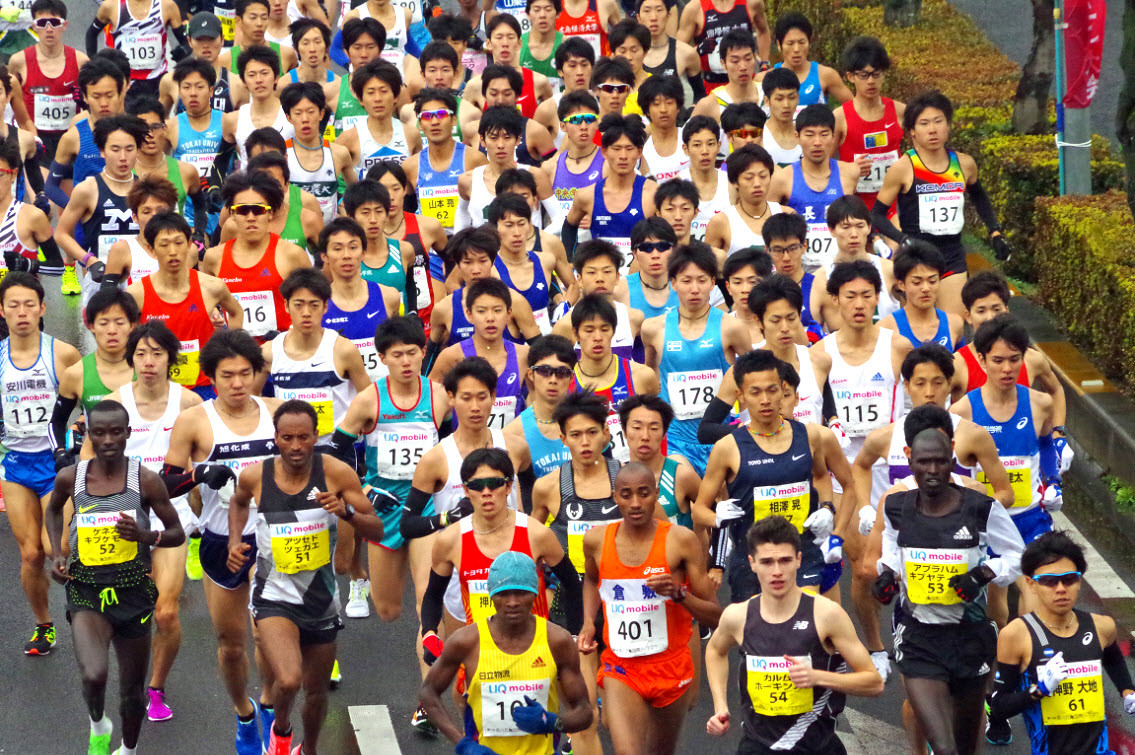
At another meeting the same day at Marugame city hall, the committee met to discuss guidelines for implementing the event. Along with an obligation to meet the JAAF's pandemic road race guidelines, the organizers and city took into account the prefectural government's alert level system, stipulating that conditions must be within the 3rd through 6th level of the prefecture's six-level risk categorization. The organizers also limited participation to residents of Japan.
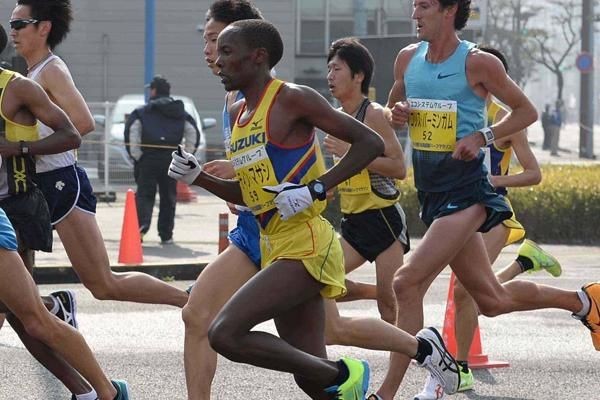
The field will be limited to 7,000 runners, a reduction of 30% from its usual size, with the 3 km and elementary school ekiden races also reduced in capacity by 30%. Entry fees for the half marathon have been raised by 2/3 from 6,000 to 10,000 yen, with fees for the other divisions also raised. Entries will be open from Oct. 12 to Nov. 19, with no last-minute registration the day before the race like in past years. Finishers' certificates will only be available via online download.
The organizers also made plans to establish a 15-member medical advisory committee to develop plans for effective coronavirus countermeasures, and to make a determination one to two months before race date whether it will be feasible to actually stage the races. Organizers also have yet to finalize plans for refunds in the event of cancelation or further field size reduction, and will be likely to deduct expenses from entry fees prior to any refunds being made.
(07/21/2021) ⚡AMPby Brett Larner
Kagawa Marugame Half Marathon
The Kagawa Marugame Half Marathon is an annual road running competition which takes place in early February in Marugame, Japan. It currently holds IAAF Silver Label Road Race status and the professional races attract over 1000 entries each year, and hosted by the Sankei Shimbun, Sankei Sports, Okayama Broadcasting, BS Fuji. The race in Marugame was first held in 1947...
more...When is Laura Muir in action at Tokyo Olympics
Is this the year that Laura Muir ends her wait for a global medal?
The European 1500m champion is yet to step on the podium at either the World Championships or Olympics but will again be in the mix in Tokyo.
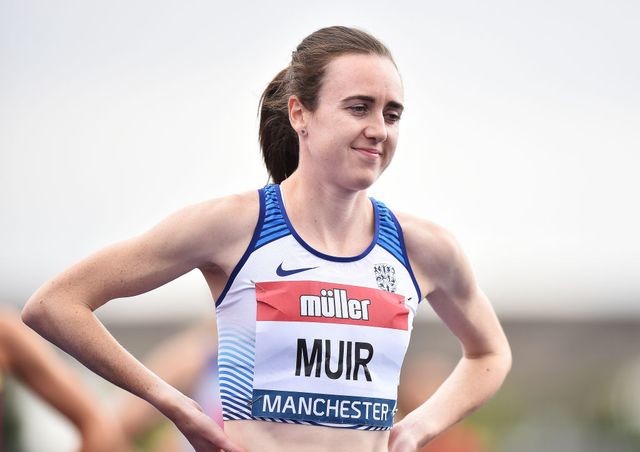
Despite running the second-fastest 800m by a British woman earlier this month she has decided not to double up in Japan.
What events is Laura Muir competing in?
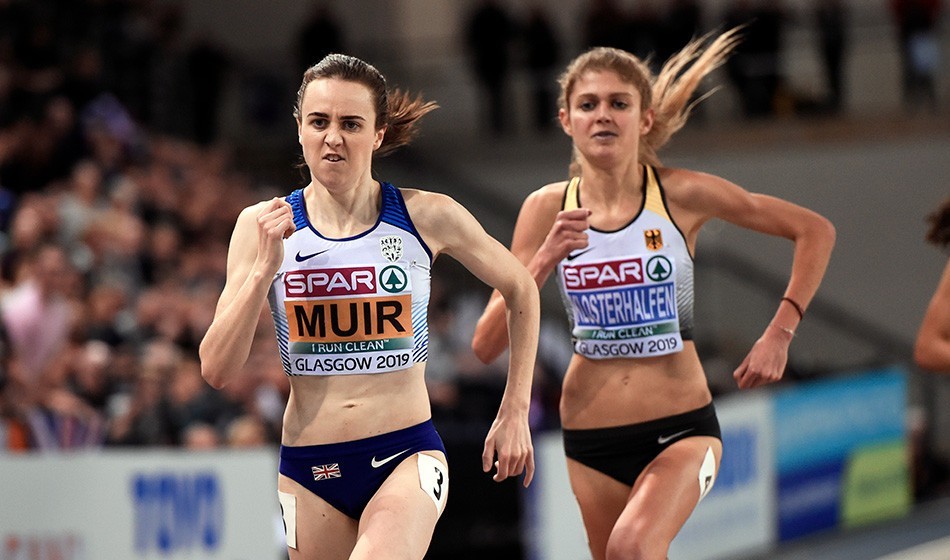
Muir is focusing solely on her favoured event - the 1500m.
When is Laura Muir in action?
All times BST
Monday, August 2
Women’s 1500m heats - 1.35am-1.51am
Wednesday, August 4
Women’s 1500m semi-finals - 11am-11.12am
Friday, August 6
Women’s 1500m final - 1.50pm.
(07/21/2021) ⚡AMPby Evening Standard
Which is best? Active vs. passive recovery
The importance of recovery for runners. After all, you can’t expect to continue running well if you don’t give your body the time to rest and adapt to your workouts.
But is which type of recovery is better? Active or passive? As with most things, there are benefits and room in your training for both.

Active vs. passive recovery
First, what exactly is the difference between active and passive recovery? Passive recovery refers to complete rest, and you can think of a full rest day like a good night’s sleep. On days like this, you want to avoid doing anything too strenuous, such as doing heavy yard work, helping a friend move or going on a big hike. In comparison, active recovery is like taking a short nap. It involves doing easy to moderate-intensity activity, like a short, easy run, walking, cross-training, yoga, hiking, or any activity that gets your blood flowing but isn’t too taxing.

Both have benefits
While we often think of rest as meaning little-to-no activity, rest after a hard workout can also mean recovery through movement, which is where active recovery provides a lot of benefits. Doing light, low-impact activity after a hard run can promote blood circulation to your muscles to help them repair and prevent soreness. Enjoying some light movement can also help clear your head, allowing your mind to recover from your workout as well. This way, you’ll be both physically and mentally ready to tackle your next hard session when the time comes.
Cycling is a popular active recovery activity among runners because it’s a similar motion to running but with less impact on your joints. Hiking can also be beneficial, because walking on an incline can strengthen the little stabilizer muscles around your feet and ankles. Doing bodyweight exercises like core work, air squats, lunges and calf raises can also boost circulation while helping to build strength as well, and yoga can be a great way to relieve tension and stretch tight areas in your body. More experienced runners can use easy jogging as an active recovery strategy, but they should be sure to keep the pace slow to allow proper recovery.
While there may be plenty of benefits that come with active recovery, this doesn’t mean that passive recovery, or full rest, doesn’t have a place in your training plan. Particularly for runners who are training many days per week (five or six), having a scheduled rest day is important to prevent over-training and burnout. On top of that, there is nothing wrong with having an unplanned rest day, either. Some days, whether you have a workout or an active recovery session planned, your body may be asking you for an extra full rest day. It could be that you’re feeling more sore or tired than usual, or it could be that your workout the day before didn’t go well. However your body is communicating it to you, you should listen to it. Pushing your body when it really needs rest will only lead to injuries and burnout, and won’t help your performance.
The bottom line
Both active and passive recovery is important for runners and should be a part of your training plan. It is up to you to listen to your body to know which type of recovery it needs and to prioritize rest so you can continue to run well.
(07/21/2021) ⚡AMPby Brittany Hambleton
Olympics Face Cancellation As COVID Cases Rise
The opening ceremony for the Tokyo Olympics is just three days away, but there's a chance that the Games could be canceled altogether — and that's coming from the organizing committee's chief.
Tokyo is under its fourth state of emergency until Aug. 22, and 71 people in the Olympics Village have tested positive for COVID-19 so far.
Committee chief Toshiro Muto said it will "continue discussions" about canceling if there is a spike in cases. IOC president Thomas Bach, however, said canceling was never an option.
The Olympics are already expecting an estimated $25 billion bill.
Delaying the games for a year cost organizers $3 billion. The total insurance coverage for the games is estimated to be around $2.5 billion.
Roughly 60 Japanese companies spent $3 billion for 2020 sponsorship rights — and another $200 million for contract extensions when the games were delayed, according to Reuters.
Toyota, which became a global Olympics sponsor in a nearly $1 billion deal, pulled Olympic-related ads from Japanese TV on Monday.
Before banning spectators, Japan expected ticket revenue to reach $815 million.
The biggest loser from a cancellation could be NBC, which agreed to a $7.75 billion media rights deal with the IOC in 2014 that runs through 2032. The network expects the Games to drive a 30% jump in Peacock users.
(07/20/2021) ⚡AMPby Front Office Sports
Tokyo 2020 Olympic Games
Fifty-six years after having organized the Olympic Games, the Japanese capital will be hosting a Summer edition for the second time, originally scheduled from July 24 to August 9, 2020, the games were postponed due to coronavirus outbreak, the postponed Tokyo Olympics will be held from July 23 to August 8 in 2021, according to the International Olympic Committee decision. ...
more...Dan King, 62, sets new US masters records
Dan King, 62, of Boulder recently set new U.S. masters one mile records on both the road and track. On July 11, 2021, he ran 5:00* at the Lincoln Mile (Lincoln, Neb.) to break the previous record of 5:03 set in 2014 by Tom McCormack.
Then, one week later, on July 18 he ran 4:51.45 at the Sunset Tour / American Track League in San Juan Capistrano. Nolan Shaheed held the previous record of 4:53.01 set in 2012.

King has been a competitive runners since high school and was a track and cross country runner at the University of Colorado. He has previously set multiple masters running records.
*pending ratification by USATF
(07/20/2021) ⚡AMPby Colorado Runner
The chief of the Games has stated that a last-minute cancelation of the Olympics remains an option
When the Tokyo 2020 Olympics were originally postponed, organizers were hopeful that by 2021 the COVID-19 pandemic would be well in our rearview mirror. As the virus continued to affect countries around the world, the Olympics became the centrepiece of a global debate: should the Games be canceled? Organizers have been adamant that the Games will go forward as planned, and months of planning have gone into putting rules and protocols in place to prevent them from becoming a super-spreader event. As athletes and officials have begun arriving in the Olympic Village, it appears as though the fears held by many are coming true, and the first cases of COVID-19 in the Village have officially been reported.
The first case was confirmed on Saturday (July 17). The affected individual was not an athlete, but an official connected to the Games. According to Inside the Games, they had not tested positive upon arrival in the Tokyo airport, but a test taken during the screening process at the Village returned the positive result. The official is now in a 14-day quarantine.

“We are making sure to do everything possible to ensure that there is no COVID-19 outbreak,” Tokyo 2020 President Seiko Hashimoto said. “We are sparing no efforts. We are doing everything we can to prevent any outbreaks.”
Hashimoto added that should there be an outbreak, they will have a plan in place to contain it. Still, this case comes as a significant concern to organizers and the International Olympic Committee (IOC), who have promised the Olympic Village will be the safest place in the city. As of Saturday, there had been 14 more positive cases connected with the Games since July 1 for a total of 44 during that period, although those cases did not occur in the athletes’ Village. Four of them were reportedly from “Games connected personnel”, while seven others came from contractors working on the Olympics and two more from members of the foreign media.

Unfortunately, the positive results have not stopped there. As athletes have begun arriving at the Village ahead of the first day of the Games this Friday, 10 more positive tests were reported on Sunday, including two South African soccer players and one other athlete, who tested positive upon arrival at the Tokyo airport. This brings the total number of positive cases associated with the Games up to 55 since July 1.
Several teams from other countries have now been forced into isolation due to issues with COVID-19, including members of the Athletics (track and field) team from the U.K. Six athletes and two staff members have been forced into isolation after a passenger on their flight to Japan tested positive, and they were identified as close contacts.
“This was identified through Tokyo 2020’s reporting service and the group have since started a period of self-isolation in their rooms at the BOA’s preparation camp, in line with Tokyo 2020’s Playbook protocols,” the British Olympic Association (BOA) said. “The group all tested negative at the airport and have continued to test negative upon arrival into the country. They are under the supervision of the Team GB medical team, led by chief medical officer Dr. Niall Elliott.”
These positive tests are alarming and call into question how issues surrounding the virus will affect the athletes’ ability to prepare for competition, even those who don’t produce a negative test. The IOC has stated that at least 85 per cent of the athletes and staff who will be staying in the Village have been vaccinated, but as more athletes continue to arrive in Tokyo, the risks for spreading the virus will only get higher. As of the Tuesday, the total positive case count has reached 65, and the chief of the Games has reportedly not ruled out a last-minute cancelation should the situation continue to worsen.
(07/20/2021) ⚡AMPby Brittany Hambleton
Tokyo 2020 Olympic Games
Fifty-six years after having organized the Olympic Games, the Japanese capital will be hosting a Summer edition for the second time, originally scheduled from July 24 to August 9, 2020, the games were postponed due to coronavirus outbreak, the postponed Tokyo Olympics will be held from July 23 to August 8 in 2021, according to the International Olympic Committee decision. ...
more...Improving your balance will give you a smoother, stronger stride to help you run faster
You may not have realized it, but running requires a lot of balance. In fact, the reason babies can’t really run until they’re about two years old is that they lack the balance to do so. When you run, you spend all your time either in the air or on one foot, and it takes a lot of balance to remain upright and not fall over mid-stride. For this reason, if you want to have a smoother, more powerful stride (and subsequently run faster), it’s important you work on this vital skill.
The problem is, in most Western countries, we run in fancy shoes that provide a tonne of stability, often on smooth, paved surfaces. The more stability we give ourselves through supports like shoes, the less balance we need to avoid falling over, and the smooth, flat surface don’t do much to challenge our balance, either.
If you’re wondering why balance is important when we have shoes to provide us with so much stability, the answer is performance. When you’re running, you spend your energy on two main things: forward propulsion and staying upright. The greater percentage of energy you spend moving forward, the faster you’ll go and the longer you’ll be able to run. To do this, you have to decrease the amount of energy you’re spending trying to stay upright. How do you do that? By training your balance.
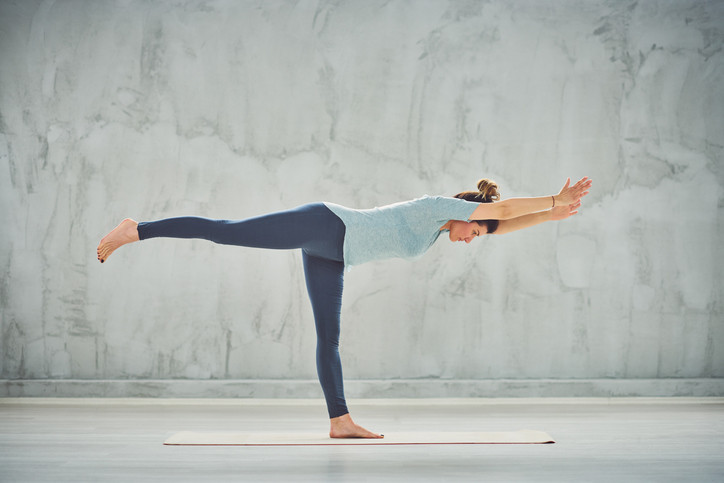
How to improve your balance
One easy way to improve your balance is to get off the smooth, paved surfaces and hit the trails. The varied terrain you encounter on a trail run will challenge all the little muscles and ligaments in your feet and ankles that help you stay on your feet.
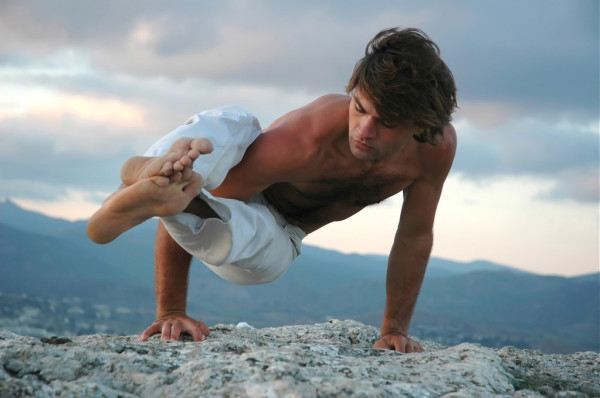
Another way to improve your balance is to incorporate single-leg exercises, like lunges and single-leg squats, calf raises, deadlifts and hip bridges into your strength training routine. If you’re doing these with just your body weight, try doing them without shoes on to challenge your balance even more, and if you’re doing them with weights, put on a pair of shoes that don’t provide a tonne of stability, like some casual tennis shoes. Finally, core exercises like planks will help you get stronger so you can stay upright while you run, and help you to better adjust to changing terrain beneath your feet when you’re running, which is particularly important when you’re running on trails.
The bottom line
Training your balance will help improve your running form so you can concentrate more energy into moving forward, which will make you a faster, smoother runner. If you want help learning how to improve your balance, talk to a certified strength and conditioning coach or personal trainer who can give you exercises suited to your ability level.
(07/20/2021) ⚡AMPby Brittany Hambleton
All about the marathon at the Tokyo Olympics
While the men’s marathon has been a staple of the Olympics since the first modern Games in 1896, women were not allowed to run the 26.2-mile race until the 1984 Summer Games, which were held in Los Angeles. Now both the men’s and women’s races are among the most anticipated events on the Olympic calendar.
When is the Olympic marathon?
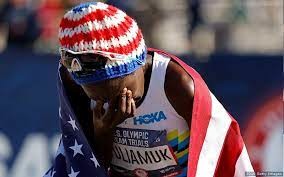
The women’s race is scheduled for Aug. 7, and the men will run on Aug. 8, the final day of Olympic competition.
Where will the Olympic marathon take place?
While the bulk of the Olympic competition takes place in Tokyo, the marathon races will be staged in Sapporo, which is located 500 miles north of the host city. Local Olympic organizers were eager to keep the race in Tokyo, but the International Olympic Committee pushed to relocate both marathons and the racewalking events in October 2019 due to concerns about high temperatures in Tokyo.
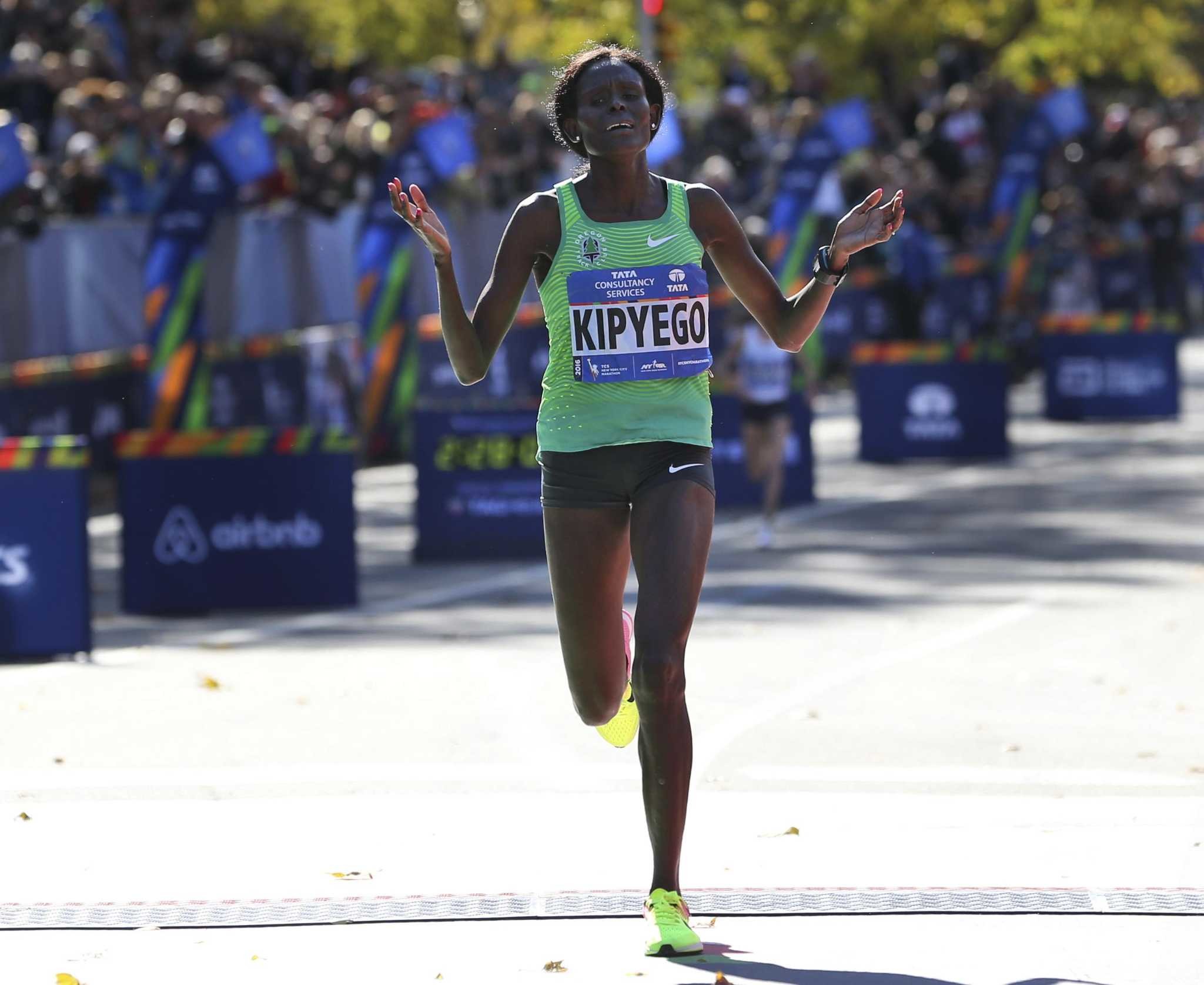
Who will represent the United States in marathon?
The United States staged its Olympic trials in February 2020, so the top American runners have had nearly one and a half years to prepare for the Sapporo course.
Galen Rupp, 35, was the top men’s qualifier, posting a first-place time of 2 hours 9 minutes 20 seconds at trials and earning a spot in his fourth Olympic Games. Rupp won silver in the men’s 10,000 meters at the 2012 Games before tackling the marathon four years later. He took bronze in the 2016 Olympic marathon with a time of 2:10:05, even though it was only the second time in his life that he tackled a 26.2-mile course.
He’ll be joined in Tokyo by fellow Americans Jake Riley and Abdi Abdirahman. Riley, 32, was 42 seconds behind Rupp at trials and was also the top American finisher at the 2019 Chicago Marathon. The Somali-born Abdirahman will be competing in his fifth Olympics and at 44 years old will be the oldest American runner to ever compete in a Summer Games.
Kenyan-born Aliphine Tuliamuk won the women’s marathon trials with a time of 2:27:23, and will be making her Olympic debut at age 32. Before the Tokyo Games were postponed due to covid-19, Tuliamuk had planned on starting a family immediately following the 2020 Olympics. The year-long delay changed her timeline and she gave birth to her daughter, Zoe, in January.
She’ll be joined at trials by Molly Seidel, who finished the trials just eight seconds behind Tuliamuk, and Sally Kipyego. The 27-year old Seidel will be making her Olympic debut. She was also the second American woman finisher at the 2020 London Marathon.
Kipyego, 35, is a decorated long-distance runner who will be competing in her second Olympics. Running for her native Kenya in 2012, she took silver in the 10,000-meter race.
(07/20/2021) ⚡AMPby Rick Maese
Tokyo 2020 Olympic Games
Fifty-six years after having organized the Olympic Games, the Japanese capital will be hosting a Summer edition for the second time, originally scheduled from July 24 to August 9, 2020, the games were postponed due to coronavirus outbreak, the postponed Tokyo Olympics will be held from July 23 to August 8 in 2021, according to the International Olympic Committee decision. ...
more...Long-distance running legend Paula Radcliffe was devastated when her daughter was diagnosed with a rare tumor last year
Paula Radcliffe experienced the full range of highs and lows during her glittering running career. From smashing world records on the streets of the capital, winning the London Marathon three times, to sitting forlornly on the roadside in Athens with her Olympic dream in tatters, she tasted it all.
But nothing could have prepared her for the moment last year when a doctor broke the news that Isla, her 14-year-old daughter, had a tumor growing on one of her ovaries.

“After Isla had undergone a battery of hospital tests, I hoped it would still be something benign even though we had been sent to the oncology department,” recalls Paula.
“But I was given the diagnosis that nobody wants to hear when the doctor said Isla had cancer. The doctor had asked Isla to sit in the waiting room before telling me what it was.

“I burst into tears but had to stop crying and pull myself together before Isla came back into the room a few minutes later. The doctor then explained the diagnosis to Isla.”
It was a shattering blow for Paula, 47, and husband and former coach Gary Lough, who live with Isla and their 10-year-old son Raphael, in Monaco.
Small signs that something might be amiss with Isla’s health had begun a few months earlier.
“In March last year Isla started her period, which was a little more painful than I remember, but we didn’t really think anything of it,” says Paula.
“But by July Isla said she was getting out of breath when having underwater swimming races with Raph in the pool.
“She also didn’t want to go on their trampoline as it gave her a pain in her bladder. After the diagnosis we realized this was because the tumor was bouncing on it.”
By late August, Isla was suffering unexplained bleeding between periods. Paula knew something was wrong so made an appointment with a paediatrician. The next day, at a hospital in nearby Nice, Isla underwent an ultrasound scan and other tests. When the results came in the family were devastated.
Isla had a malignant germ cell tumor, which grows in the cells that form the eggs in the ovary. They are rare and affect roughly one in 200,000 women. In men they can develop in the testicle where the sperm is formed.
“It was hard to take in as everything had happened so fast,” says Paula.
“But the care was phenomenal. A week later, Isla was starting chemo.”
For Isla, having a clear diagnosis was helpful. “A lot of the time leading up to the diagnosis I didn’t feel right, but I didn’t expect it to be cancer,” says Isla. “I thought it would be something like an allergy or an intolerance.
“I didn’t take it in that we were going to a cancer department, and only realized that afterwards. When I went back into the doctor’s room after being examined, mum was crying – although she had been crying a lot the day before that. Then the doctor started to explain it was cancer and I think I was just in a state of shock.”
Because of ongoing Covid restrictions, it was decided Paula would be mostly with Isla at the hospital while Gary took care of Raphael.
“We made a decision which was best for our family,” explains Paula. “I probably cope better with stress and I don’t think he could have seen his little girl going through all this in hospital on a daily basis. But he could still come in every day and cheer her up.”
When Gary visited, Paula would either spend time with Raphael or go for a short run, which she still does most days. “When we were over the initial shock and the medical team had explained everything, having that sporting background helped,” says Paula. “We had a treatment plan – like all the training plans I have followed over the years, and it was something we could stick to and see things improving.”
The prognosis was good with a high chance of it being successfully cured with surgery, and in Isla’s case, chemotherapy too, which started in September, just as she was starting a new school term. The drugs were delivered intravenously five days in a row, taking seven hours each time.
(07/20/2021) ⚡AMPby Adrian Monti
Jamaican Usain Bolt slams unfair, laughable advances in spike technology
Usain Bolt has said advances in spike technology that could help wipe out his world records are laughable and that the new shoes also give an unfair advantage over any athletes not wearing them.
After athletes ripped through the record books in distance running with carbon-plated, thick-soled shoes, the technology has now moved into sprint spikes, where -- although there is less time in a race for the advantage to make an impact -- it is still enough to make a difference.
"When I was told about it I couldn't believe that this is what we have gone to, you know what I mean, that we are really adjusting the spikes to a level where it's now giving athletes an advantage to run even faster," Bolt told Reuters in an interview from Kingston.
The 100m and 200m world record holder competed in Puma spikes throughout his career.
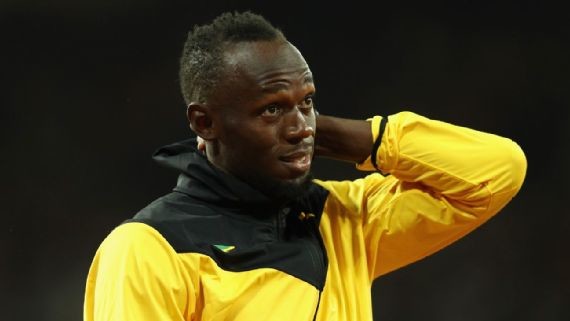
"It's weird and unfair for a lot of athletes because I know that in the past they [shoe companies] actually tried and the governing body said 'No, you can't change the spikes,' so to know that now they are actually doing it, it's laughable," the eight-time Olympic Champion added.
American Trayvon Bromell is favourite to take Bolt's 100m title in Tokyo. He is the fastest in the world over the distance this year with 9.77 secs, but the 2015 world 100m bronze medallist is less convinced about the impact of the shoes.
"I don't think there's a lot of data to show that they're having such a big improvement," Bromell, who runs for New Balance, told reporters last week.
"I know we [New Balance] are constantly building onto what we have to make the perfect spike, but for me personally as a runner I still feel like it's not enough data to really show."
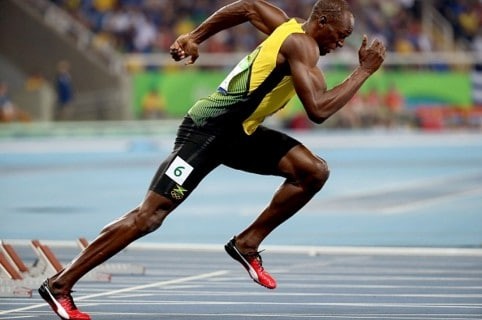
While other companies now have similar shoe models, Nike looks set to dominate and is priding itself on being a leader in the technology.
"We're just smarter about how we engineer and assemble them," Nike said in an email to Reuters.
The company added that it works to keep its athletes on the cutting edge while staying within the rules.
Weighing in on developments in shoe technology, World Athletics said: "The current regulations [July 2020] were designed to give certainty to athletes preparing for the postponed Tokyo 2020 Olympic Games, to preserve the integrity of elite competition and to limit technological development to the current level until after the Olympic Games in Tokyo, across all events."
It said a working group on shoes aimed to set parameters to achieve a balance between innovation, competitive advantage and availability of the products.
Performing in the Nike Air Zoom Maxfly, Jamaican two-time Olympic gold medallist Shelly-Ann Fraser-Pryce clocked the fastest 100m time in 33 years on June 5 in Kingston with a career-best 10.63 seconds.
Only American world record holder Florence Griffith-Joyner has gone faster, with 10.49 seconds in Indianapolis in 1988.
But Fraser-Pryce was unwilling to discount the work she has done to become the fastest woman alive, even as she trains and competes in the spike.
"You can give the spikes to somebody else and they'll probably not do the same things that I've done, so I'm not counting myself out of the hard work me and my coach has put in," the four-time 100m world champion told Reuters.
"Maybe the combination of both -- having good products and good runners combined -- makes for a very good end-product. So for me, I can't single-handedly point to the spikes."
Veteran Jamaican sprint coach Stephen Francis admitted that faster times are being run in Nike's new sprint spikes.
"Based on anecdotal evidence and based on the fact that you have people who never would have run as fast as they are running, I suspect that there may be a point, but there is no scientific basis to make that point," Francis told Reuters from Kingston.
Whatever the advantage, he said, anyone can benefit from Nike's technology based on the rules set by World Athletics.
(07/20/2021) ⚡AMPby Reuters
New Zealand has confirmed a record 211-strong team for Tokyo 2020
The New Zealand Olympic Committee (NZOC) has confirmed a record 211 athletes will represent the nation at delayed Olympic Games here in the Japanese capital.
The team is New Zealand’s largest at the Games, surpassing the 199-athlete delegation that travelled to Rio 2016.
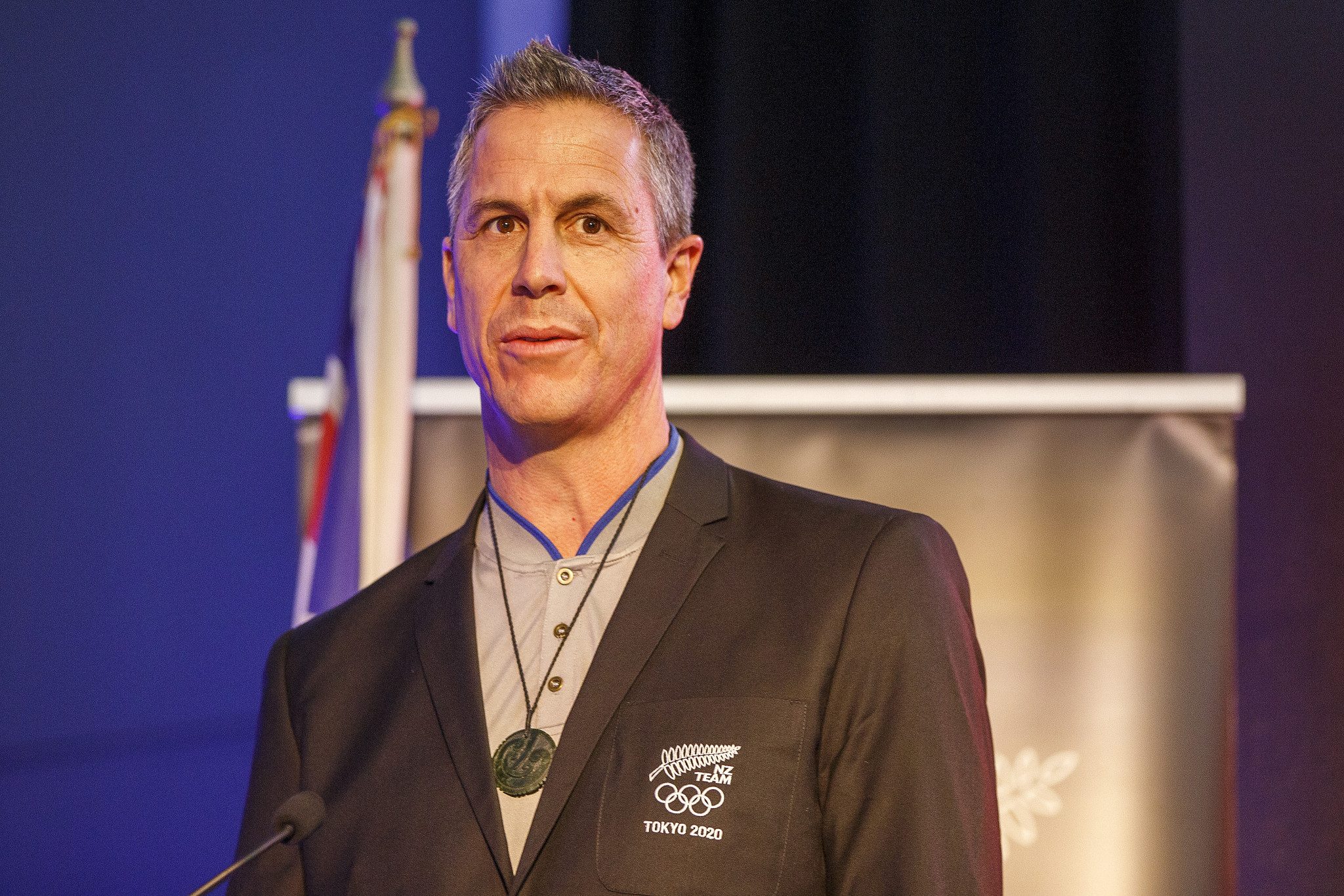
The NZOC revealed that the team includes 110 men and 101 women, with the country having representatives in 22 sports at the Games.
This includes the sports of karate and surfing, due to make their Olympic debuts at Tokyo 2020.
A total of 33 athletes are of MÄori descent.
Most of the New Zealand team will be competing at their first Olympics with 118 having previously never participated at the Games.
The remaining 93 have already been to one or more Games, including two-time Olympic shot put gold medallist Dame Valerie Adams.

Dame Valerie is set to become the second female athlete to represent New Zealand at five Olympic Games, matching windsurfer Barbara Kendall.
Nick Willis, winner of the Beijing 2008 Olympic silver and Rio 2016 bronze in the men’s 1500 metres, will also compete at a fifth Olympic Games.
Swimmer Erika Fairweather is the youngest member of the team aged 17, with equestrian jumping athlete Bruce Goodin the oldest at 51.
Controversial weightlifter Laurel Hubbard features among the delegation and is set to be the first transgender athlete to compete at the Games as their associated gender.
Women’s rugby sevens captain Sarah Hirini and two-time Olympic rowing champion Hamish Bond were confirmed as New Zealand’s flagbearers Opening Ceremony earlier this month.
The Games is largely set to take place behind closed doors due to the COVID-19 pandemic, leading to the Japanese Government introducing tighter restrictions on the host city.
New Zealand’s Chef de Mission Rob Waddell praised the resilience of the Olympic team amid the uncertainty caused by the COVID-19 pandemic, which led to a one-year postponement of the Games last year.
"This Olympic build-up has been extremely challenging and unique," Waddell, an Olympic rowing gold medallist in the single sculls at Sydney 2000, said.
"I’d like to thank all 211 athletes for the grit and determination they’ve shown to make it to these postponed Games.
"We’re extremely proud of the team and the way they’ve handled all the uncertainty.
"It’s now time to focus on wearing the fern and representing New Zealand to the best of our abilities in Tokyo."
Waddell and an advance team arrived here last week.
The advance team are setting up New Zealand’s area in the Athletes’ Village prior to their arrival for competitions.
Participants are required to follow restrictions outlined in playbooks produced by Tokyo 2020 and the International Olympic Committee.
This includes quarantine periods and movements being restricted to activity plan for the first 14 days.
"We’re working really hard to create a strong performance environment in our section of the Village which allows the athletes to perform to their peak," Waddell said.
"We’re setting up our own high-performance gym, kitchen and health areas.
"We also have two shipping containers to offload which contain things like sporting equipment, hand sanitiser and cooling fans.
"We’ve been working really closely with our performance delivery partners High Performance Sport New Zealand to prepare our team for the heat.
"We've had athletes training in heat chambers and holding heat camps in hot and humid locations.
"We've also got specialist ice vests, slushy machines and heat protocols in place."
(07/19/2021) ⚡AMPby Michael Pavitt
Tokyo 2020 Olympic Games
Fifty-six years after having organized the Olympic Games, the Japanese capital will be hosting a Summer edition for the second time, originally scheduled from July 24 to August 9, 2020, the games were postponed due to coronavirus outbreak, the postponed Tokyo Olympics will be held from July 23 to August 8 in 2021, according to the International Olympic Committee decision. ...
more...British athletes forced to isolate ahead of Olympics after positive Covid case on flight to Tokyo
Six members of Great Britain’s athletics team for the Tokyo Olympics have been forced into isolation after a passenger on their flight to Japan tested positive for coronavirus.
The six athletes, who have not been identified, and two members of staff have been deemed close contacts of the individual in question, who is not from the Team GB delegation.

The group’s flight arrived in Tokyo on Friday and all eight have since tested negative but are isolating at Team GB’s prep camp. The athletics events in Tokyo are scheduled to begin on July 30.

A statement from the British Olympic Association said: “The BOA can confirm that six athletes and two staff members from the athletics team, who through no fault of their own have been identified as close contacts of an individual – not from the Team GB delegation – who tested positive for COVID-19 following their arrival in Tokyo on 16 July 2021.
“This was identified through Tokyo 2020’s reporting service and the group have since started a period of self-isolation in their rooms at the BOA’s Preparation Camp, in line with Tokyo 2020’s Playbook protocols.
(07/19/2021) ⚡AMP
by Malik Ouzia
Tokyo 2020 Olympic Games
Fifty-six years after having organized the Olympic Games, the Japanese capital will be hosting a Summer edition for the second time, originally scheduled from July 24 to August 9, 2020, the games were postponed due to coronavirus outbreak, the postponed Tokyo Olympics will be held from July 23 to August 8 in 2021, according to the International Olympic Committee decision. ...
more...The best Runner´s diets
For runners, diet is hugely important, not only for nutritional purposes but quite simply because food is fuel for the body. This means that runners will not have the energy they need to perform at their best without the right food and hydration. However, this can make dieting and weight loss quite difficult, as finding the line between overeating and providing your body with the fuel it needs is blurred. Understanding the best diets for runners can help you maintain high-quality performance while still losing weight.
Intermittent Fasting

Intermittent fasting has been one of the most popular diets of recent years, as it promises to both aids in weight loss and other functions necessary for a healthy body. For example, intermittent fasting has benefited metabolic health, cardiovascular function and aid in cell repair.
Many runners are likely to put off intermittent fasting, assuming that it might leave you too hungry to perform well during your run. However, recent studies have found that fasting does not interfere with the body’s ability to perform during a workout but does aid in weight loss. This means that intermittent fasting can be a very good diet for runners. Running while fasted means that the body is forced to burn fat stores rather than food, increasing weight loss processes. Before starting this program, it is useful first to learn more about intermittent fasting to find out how it can benefit you.

Complex Carbohydrates
Carbohydrates are the main source of energy in your food, and this means that it is not realistic for runners to cut out all carbohydrates completely; in fact, this will likely lead to weight loss in the long run. Instead, it is advised that those looking to lose weight should switch to eating only complex carbohydrates.
Complex carbohydrates are unprocessed carbohydrates that contain high levels of nutrients and fiber, which are found naturally. Examples of high-quality complex carbohydrates include:
Sweet potatoes
Brown rice
Whole wheat pasta
Bananas
Lentils
Whole grains
Broccoli
Complex carbohydrates are made up of longer molecule chains than simple carbohydrates. This means that they take longer to break down and become digested, meaning that they keep fueling your body and keep you feeling full for longer.
High Protein Diet
A high protein diet can also be hugely beneficial to runners, helping you to keep fit and avoid potential injuries. Protein is necessary for sustaining many vital bodily functions, including digestion, metabolism, muscle repair, and immune system integrity. When it comes to a high protein diet for runners, the main point of focus should be on the amount of protein you are eating and the time you are consuming it. Research has found that consuming protein in the recovery window can help to speed up glycogen synthesis. Eating protein after your workout can mean that your muscles are at the best state to receive all of the nutrients, they need to repair themselves from the damage caused by running. This means that eating a high protein diet focused on post-workout protein consumption can help to improve running performance and recovery.
(07/19/2021) ⚡AMPby Colorado Runner
The 10 Best Blister Treatment and Prevention Products
Your emergency kit to soothe hot spots, and the gear to keep them from flaring up again.
To put it simply: Dealing with blisters is an actual pain. If you’re reading this, you probably already know that blisters are those red, raised areas that look like bubbles and occur mostly on the feet for us runners. Located on the upper layer of skin, they often fill with fluid and may also hurt or itch.
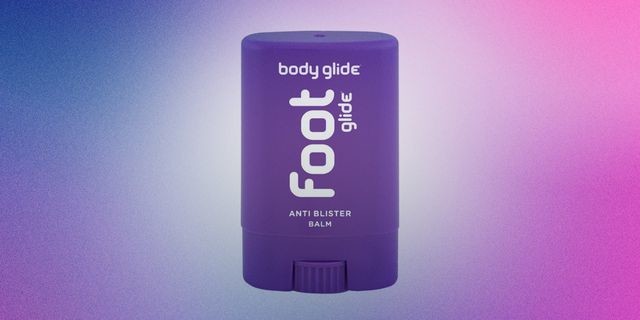
Many runners incur them during races, especially marathons, due to prolonged friction between your skin and sock or shoe. But blisters can pop up at any time, including during training runs. Non-running footwear can be to blame, as well.
While most blisters don’t pose a serious health risk, they shouldn’t be taken lightly. A painful blister can sideline a runner—or worse, get infected, especially if you use an unsanitary needle to pop it. Here’s a complete guide to blisters and our picks for the best products to treat and prevent them.
Common Causes of Blisters
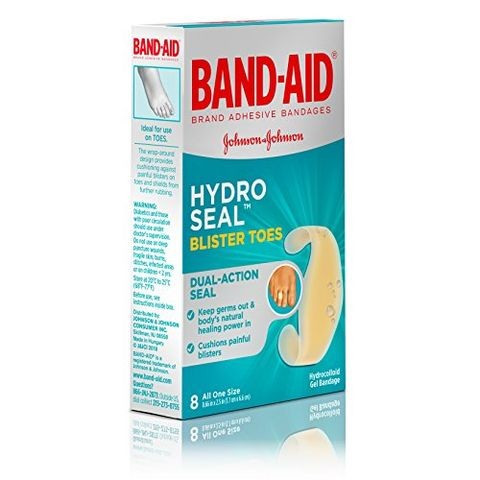
Friction leads to annoying, painful blisters. The culprits are usually our socks, shoes, or both rubbing against our skin. Anything that intensifies rubbing can start a blister, including a faster pace, poor-fitting shoes, and foot abnormalities, such as bunions, heel spurs, and hammertoes. Heat and moisture intensify friction by causing your feet to swell.
beneath the skin that’s being rubbed.
Since moisture is also a factor, races are the perfect breeding ground for blisters: You’re sweating more by running faster and longer, sloshing through water stations, and if the weather is warm, possibly pouring water over your head.
Blister Treatment
If you have a large blister that’s big, nasty, even purple, and it’s affecting how your toes bend, give it a day or two to shrink, says Jordan Metzl, M.D., a sports medicine physician at the Hospital for Special Surgery in New York City and a marathoner. If it doesn’t improve, you might need to have your doctor pop it in the office under sterile conditions so it doesn’t get infected.
If you have a small blister that’s not prohibiting your movement, as tempting as it is to touch it, just leave it alone. “When the skin and the membrane of the skin are compromised by popping the blister, all of the bacteria that live on the skin normally can invade and could cause inflammation or an infection right away,” Metzl says.
You could end up making a very small problem much bigger by puncturing the barrier. You should also leave small blood blisters intact, too. Otherwise, you risk getting bacteria in your bloodstream. Cover it up so the swelling goes down, then try to fix the problem that caused it. Here are some prevention methods to treat small blisters:
Cut a hole the size of the blister in the middle of a piece of moleskin
Place the moleskin over the blister and cover with gauze
Let the blister dry out and heal on its own, or try covering the blister with a waterproof pad
If you absolutely must pop a blister (for example, if you’re traveling and can’t see your doctor), use caution. Metzl suggests cleaning the area and needle with soap and water and following with an antibiotic ointment. Then be sure to clean the area regularly to prevent infection.
One more note: A blister under a nail is best treated by a professional. You never want to deliberately remove the toenail.
Blister Prevention
To stop blisters before they even start to form, Metzl recommends making sure you’re wearing running shoes in the right size. And before you run, coat risky areas with products that dry out your skin, such as baby powder or anti-chafing powder, to minimize the effects of sweating. You can also use a lubricant such as Vaseline or anti-chafing balm to ease pain caused by rubbing.
Shoes that are too small will cause blisters under the toenails or on the tops or tips of the toes. There should be a thumb’s width of space between the toes and the end of the toe box. Pay attention to your socks, too: They should fit without bunching up at your toes or slipping down your heels, which are common blister hot spots.
If you suspect your shoes don’t fit, consult with your local running store to have an expert help you find your size via a virtual or in-person fitting, or look for socks with reinforced heels and toes to help reduce friction.
(07/19/2021) ⚡AMPby Runner’s World
9 Tips To Make Your Body Feel OK When Traveling
If they ever figured out wormholes or teleportation or time travel, I would be the last person to sign up. I can't imagine how I'd feel traveling to another dimension when short plane flights make me feel like such a piece of soggy garbage.
Or that's how I used to feel. Then, over the last few years, I saw how expert traveling runners do it. I asked them about their secrets. And I learned a few things that have helped me feel a bit less like a lazy parasite after travel.

In 2018, Cat Bradley went from Europe to the U.S. to Europe in the week before a top-10 finish at UTMB. A few weeks ago, Zach Ornelas traveled from Michigan to South Africa just a day before a top-10 at the Two Oceans Ultramarathon. So it's definitely possible to do almost any trip and excel physically. From talking to Cat, Zach and many others, I came up with a list of nine things that I have seen among many good travel-runners. The science in this area is not settled, so pick and choose what works for you.
If I'm doing the calculations correctly, that means drinking a swimming pool before touching down in Paris. But after my own struggles racing internationally, I tried approximating that hydrating formula, and I felt significantly better on future trips.
Hydrate Adequately, Especially on Planes
Lauren Fleshman, an amazing athlete, coach, writer, parent and entrepreneur (the EGOT of running), wrote a wonderful article on jetlag and athletes back in 2011. She recommended eight ounces of fluid every 45 minutes on a flight. If I'm doing the calculations correctly, that means drinking a swimming pool before touching down in Paris. But after my own struggles racing internationally, I tried approximating that formula, and I felt significantly better on future trips.
There's no need for a set formula (8 oz every 45 min may be excessive for many people), just don't dehydrate yourself in planes or cars. Plus, the extra bathroom breaks make for a solid excuse to move. I recommend some electrolyte mix in water to possibly support absorption (a complicated sub-question that depends on many variables-see this 2015 article from Nutrition Reviews for details). And make sure you don't overhydrate either, which can have its own nasty health effects. Hydration is hotly debated, with legendary exercise scientist Tim Noakes even publishing a book called Waterlogged that argues that overhydration is a major problem, so find what works for you.
Eat Like a Normal Person
Spending the trip subsisting on Smartfood popcorn and Werther's candies will probably make you feel crappy when you get where you are going. Trust me, I've done some real-world experiments, and I may or may not be typing this with fingers coated in cheese-like powder.
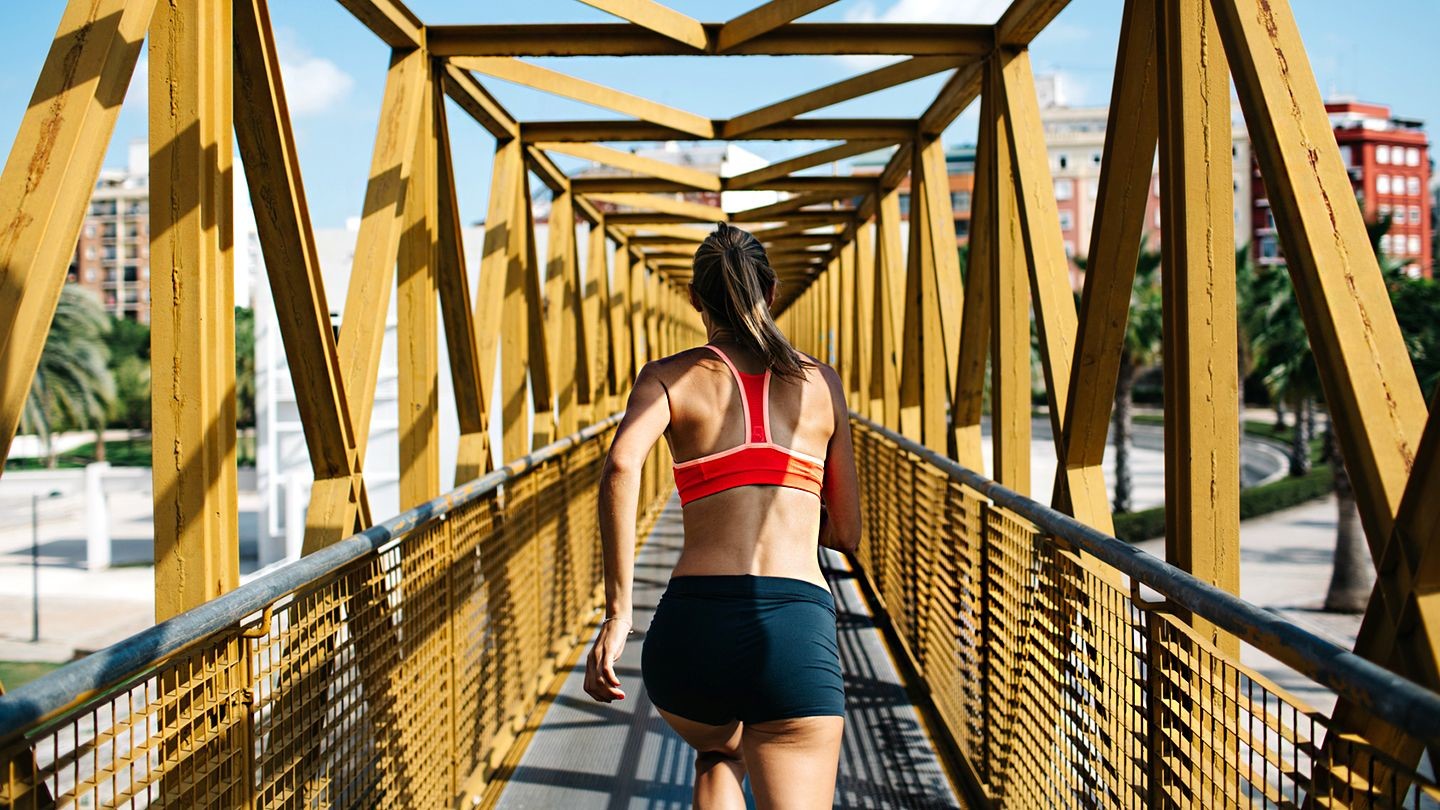
Don't overthink it, just make sure you fuel well. Pack healthy snacks like nuts, fruit and whole-food energy bars, and keep eating. Avoid fake sugars (and gum unless you know it doesn't bother you), too much alcohol and food that makes you feel like crap about yourself. Powdered cheese-like substance feels good in the moment, but note to self 10 servings of it usually isn't the best long-term life decision.
Consider Wearing Compression Tights/Socks on Your Trip
The science behind compression gear during travel is not settled, but there is some evidence that it could help prevent blood clots in susceptible people, and some athletes who travel frequently say that the circulation effects can make long trips go over easier on the body.
I like athletes to consider wearing graduated compression tights or socks if they have a pair, but not to worry about it too much one way or the other. Plus, compression socks are like calf-muscle Spanx.
Move as Much as Is Reasonable
Recommendations vary, but many sources say to move five to 10 minutes every hour. That is pretty difficult unless you want to be the worst seat-mate possible. Could you imagine if everyone on the plane did that? It'd be mass hysteria.
But as much movement as possible is good, even if you aren't playing musical chairs every few minutes. Stand up, do some light squats, maybe some stretching. During drives, walk around the gas station a few times and do some push-ups. There are benefits to circulation, and it's always good for sanity to avoid impersonating a human pretzel for too long.
After Sitting for an Extended Time, Go on a Walk and Do Mobility Work and/or Stretching
When you get where you're going, push back against the stationary inertia and get moving, even if you are really tired. I have seen athletes excel with a couple-mile walk, followed by doing whatever mobility/stretching they usually enjoy. For me, that means a walk followed by some comically poor yoga poses.
Consider Elevating Your Legs (or Using Compression Boots)
There is some evidence that elevating legs (against a wall or similar) can improve circulation and stop pooling of fluid that can happen in legs during travel. My feet usually look like sad little sausages after being on a car or plane, and elevation seems to help them regain some semblance of normal.
If you're really lucky, Normatec boots or similar air-compression methods seem to be really helpful, but that's a luxury that most travelers probably won't have. This bullet point won't make or break the trip, and some of the benefit that I see in athletes might just be taking the time to relax, rather than leg elevation or sexy space boots.
If Your Sleep Schedule Is Off, Still Give Yourself Restful Time
I have heard that for some athletes there is no more frustrating advice given all the time in the running world than "sleep more." I am guilty of saying it too. Sleep is good for recovery, hormones and performance. Never underestimate the power of performance-enhancing snoozles.
But for many athletes, it's not that simple. It is totally normal to suffer from issues with being able to get to sleep or stay asleep. If you're one of the athletes who has sleep struggles, I promise you that you're not alone. So many of the athletes I coach might not be captured in a study on insomnia, but have persistent problems with sleep. Sometimes, it even becomes a source of daily anxiety.
Those problems are especially evident during travel. Jason Schlarb just finished 2nd at the Maxi Ultra Race in France, and on the phone afterward I asked about his travel schedule. Jason would never make an excuse, so I had to press him on his sleep. He estimated that he slept around three hours in the few days before the race, which started at midnight local time.
While the travel made sleep difficult, Jason still gave his body plenty of rest, which let him perform really well anyway. What I like athletes to do is carve out eight to 10 hours at night when they'll be in bed, lying down without any screens or social stimulation. A book is OK (and make sure you always have two-plus amazing books in your bag), but lying there and meditating peacefully is even better. If that results in a solid trip to dreamland, awesome. If it means no sleep, that's OK too. Just try to avoid spirals where worrying about sleep makes the restful time full of anxiety about being awake, rather than mindful relaxation.
I have seen tons of athletes excel off almost no sleep (especially the night before races), so cut yourself slack and let your brain shut off, knowing that it's OK if you get an eight-hour session of gratitude instead. Some athletes swear by melatonin to help reset their natural sleep cycles, but everyone is different, so make sure you don't do anything for the first time before a race.
Use Caffeine Strategically
Caffeine is a blessing and a curse during travel. It can help you feel like a normal, functioning human being. But it can also prevent your body from falling into a new pattern in a new time zone.
There are no set rules that work for everyone, but the best advice I have heard is to stick to your normal schedule for short trips (ideally with no caffeine after the morning), and to consider abstaining entirely before and during long plane trips. Then, a little bit of caffeine as the sun comes up can jump start your system and your bowels (another problem that many athletes struggle with on long trips).
Accept Feeling Like Crap, and Do a Few Fast Strides to Jump-Start Your Body
Even if you do everything right, there's a solid chance your body will feel all wrong. And that feeling is OK. Accept it, embrace it and laugh at it if you can. There is great power to be had in understanding you don't have complete power over how you feel.
I like athletes to do a few strides on their first run after travel to give their neuromuscular and aerobic systems a jump start. Something like 4 to 6 x 20 seconds fast on slight uphills after an easy run will get the heart pumping and often helps athletes feel way better. At the very least, it usually shows them that while they might not feel normal, their bodies are still strong and powerful.
Travel is fun. Running is fun. Mixing the two can sometimes be where fun goes to die. So be patient with your body, giving it the grace and space to adjust. After all, every legendary adventure requires an epic journey.
(07/19/2021) ⚡AMPby Trail Runner Magazine
Chevrier breaks course record at La Montee du Nid d’Aigle
Italy’s Xavier Chevrier and Kenya’s Lucy Murigi took top honours at the highly anticipated La Montee du Nid d’Aigle, the third stage of the WMRA World Cup series, on Saturday (17).
The race hub in the picturesque Saint-Gervais-Les-Bains, in the Haute-Savoie region of France, combined with a tough course and a field of top runners made for a fantastic mountain running race.
Blue skies greeted the runners at the start, with a few whispy clouds higher up in the mountains. Conditions were hot for the runners, particularly on the exposed parts of the course, making the 19.5km uphill-only race particularly relentless.
The route starts at Le Fayet and heads along the river towards St Gervais, and then to La Villette, climbing gradually. It then heads away from the road and into the trees and begins to climb more steeply all the way up to the finish at Refuge du Nid d’Aigle at 2394m.
With deep fields in both the men’s and women’s races, both podiums were wide open. As expected, the flatter first few kilometres of the race were fast and furious and before too long gaps had opened for the men and women.
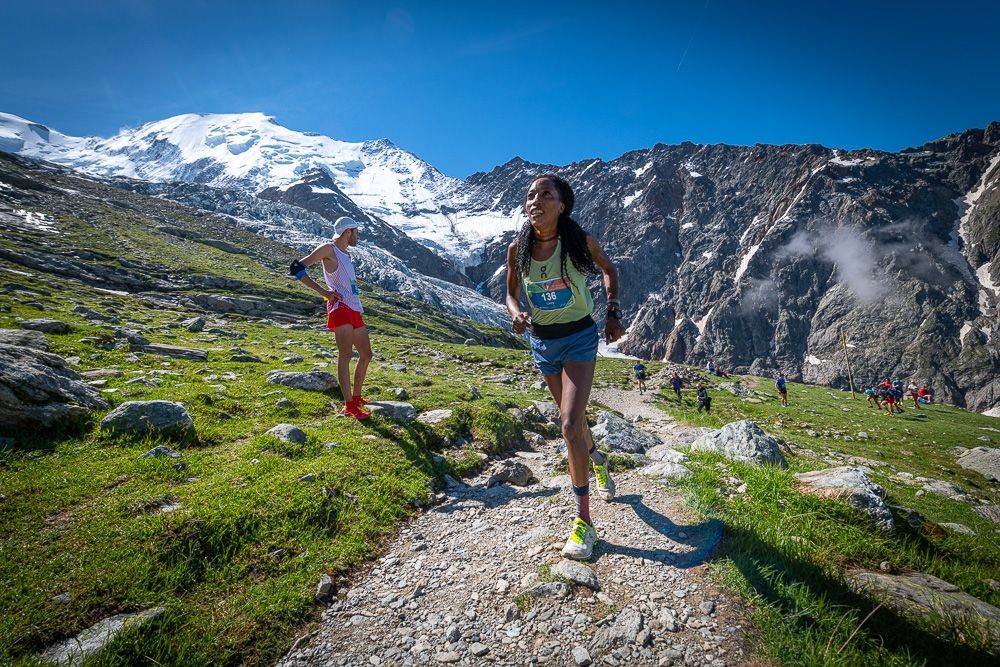
Murigi, who finished third at Grossglockner last weekend, struck out into a lead over French duo Anais Sabrie and Christel Dewalle. Chevrier and Italian teammate Francesco Puppi also made a break for it in the men’s race, but they were hotly pursued by a group including France’s Julien Rancon, Alexandre Fine and Henri Aymonod.
Chevrier and Murigi maintained their leads, though the races remained close. In the closing stages, Chevrier pulled away from Puppi while the chasing runners jostled for third place.
Chevrier went on to win the men’s race in a course record of 1:44:25, followed by Puppi, more than a minute behind (1:45:49). Aymonod completed the all-Italian men’s podium in 1:46:44. Julien Rancon was fourth in 1:48:43 and Remi Lonchampt rounded out the top five in 1:50:18.
Dewalle, who is a 10-time French VK champion and excels on the steeper climbs, chased Murigi hard on the final climb, but couldn’t catch the Kenyan. Murigi won in 2:06:08, just two seconds outside the course record, with Dewalle just 21 seconds behind. Sabrie was a further minute in arrears (2:07:34).
France’s Mathilde Sagnes was fourth in 2:08:37 and Simone Troxler fifth in 2:10:43 with the top five finishing within five minutes of each other.
The next stop on the WMRA World Cup calendar is the Tatra SkyMarathon on 24 July.
(07/18/2021) ⚡AMPExercising Outdoors Doesn’t Boost Your Melanoma Risk—as Long as You Take Precautions
New research suggests you don’t need to hit the treadmill on super sunny days. But you do need sunscreen
Exercising outside doesn’t raise your risk of melanoma, as long as you follow sun-smart strategies, new research suggests.
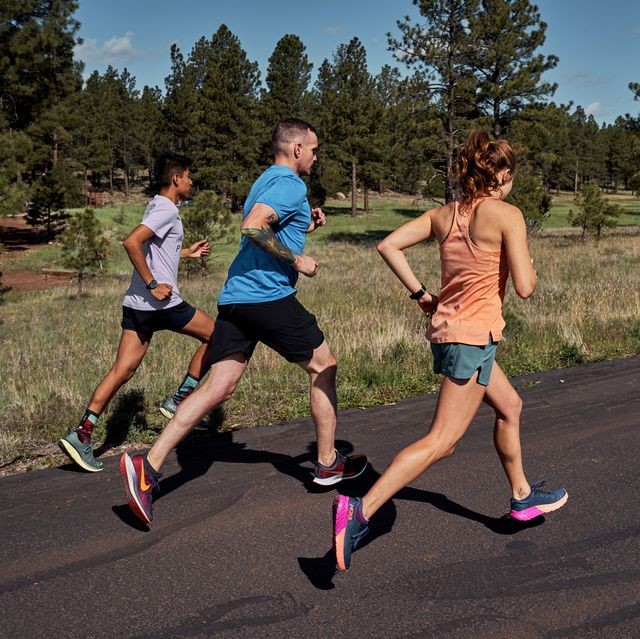
Using sunscreen (a minimum of SPF 15 or 30 is recommended), covering your skin, and taking advantage of shady spots when you can all lower your chances of getting a sunburn—if you get too many sunburns over time, they can lead to melanoma
The long route you’re about to run is all sunshine and no shade. Does that mean you’re putting yourself at higher risk for skin cancer? A recent study in the journal Preventive Medicine suggests you can lace up and get outside without worry—as long as you follow sun-smart strategies.
Norwegian researchers looked at over 150,000 women ages 30 to 75 who participated in a large-scale study on cancer done over nearly 20 years. They examined whether participants who exercised outdoors reported more incidents of melanoma, which is considered the deadliest type of skin cancer. Previous studies have suggested this is the case, in part because those who spend more time outside are at higher risk of sunburn, which is a contributor to skin cancer.
However the researchers found no increased melanoma risk among participants. Particularly surprising, those results held for the arms as well, which tend to be the most exposed during activity, said co-author Flavie Perrier, Ph.D., research fellow in the Institute of Basic Medical Sciences at the University of Oslo.
She told Runner’s World that focusing on Norway is notable here, since the country has the third highest incidence of melanoma in Europe, but the highest mortality rate from the disease. Also, people in Norway tend to have light skin and many enjoy sunbathing in the summer, which both increase melanoma risk.
That means finding ways to lower incidence is especially important for the country, but the results can apply anywhere. She did add that they were unsure if the results would apply to men, since only women were included in the study, but that it was likely the sunburn connection would be relevant for them as well.
“We found that a large proportion of women didn’t get sunburns compared to those who were less active, and this might be due to taking more precautions,” she said.
Previous research suggests that it doesn’t take many sunburns to become problematic. One study, published in the journal Cancer Epidemiology, Biomarkers & Prevention, found women who had at least five “blistering” sunburns before age 20 had an 80 percent increased risk for melanoma.
Sunburn is an inflammatory reaction to the ultraviolet radiation experienced during prolonged sun exposure, according to The Skin Cancer Foundation. For people with less melanin—a pigment that gives skin its color—skin cells become red and swollen, and that damage alters a tumor-suppressing gene so that cells are less able to repair themselves. That can cause cancer to both form and spread.
To protect yourself, experts recommend using a sunscreen with at least a factor of SPF 15—which has been shown to reduce melanoma risk significantly—but the researchers in the recent Norwegian study suggest SPF 30 as a starting point. Also, The Skin Cancer Foundation’s sun protection guide provides useful guidance, such as covering your skin, taking advantage of shady spots when you can, and choosing the right sunscreen.
You won’t find any reef-harming chemicals in this sunscreen. What you will get is a thick, protective barrier of zinc oxide.
(07/18/2021) ⚡AMPFrançois D'haene, Sabrina Stanley win first Hardrock 100 in three years
After two successive cancellations (one due to snowfall and one to COVID), the Hardrock 100 took place in Colorado’s San Juan mountains on Friday, and it was worth the wait. French ultratrail superstar and three-time UTMB winner François D’haene was strong from the start, and powered through to a 21:45:51 finish early Saturday – the fastest time anyone has run the course, counterclockwise or overall (both records were held by Kilian Jornet, who did not run this year).
Defending champion Sabrina Stanley of Silverton, Colo. (where the looped-course race starts and finishes) won the women’s race in 27:21:48 – the second fastest women’s finish ever, and her second time racing Hardrock. Stanley was sixth overall, and was on pace for a course record until approximately mile 80.
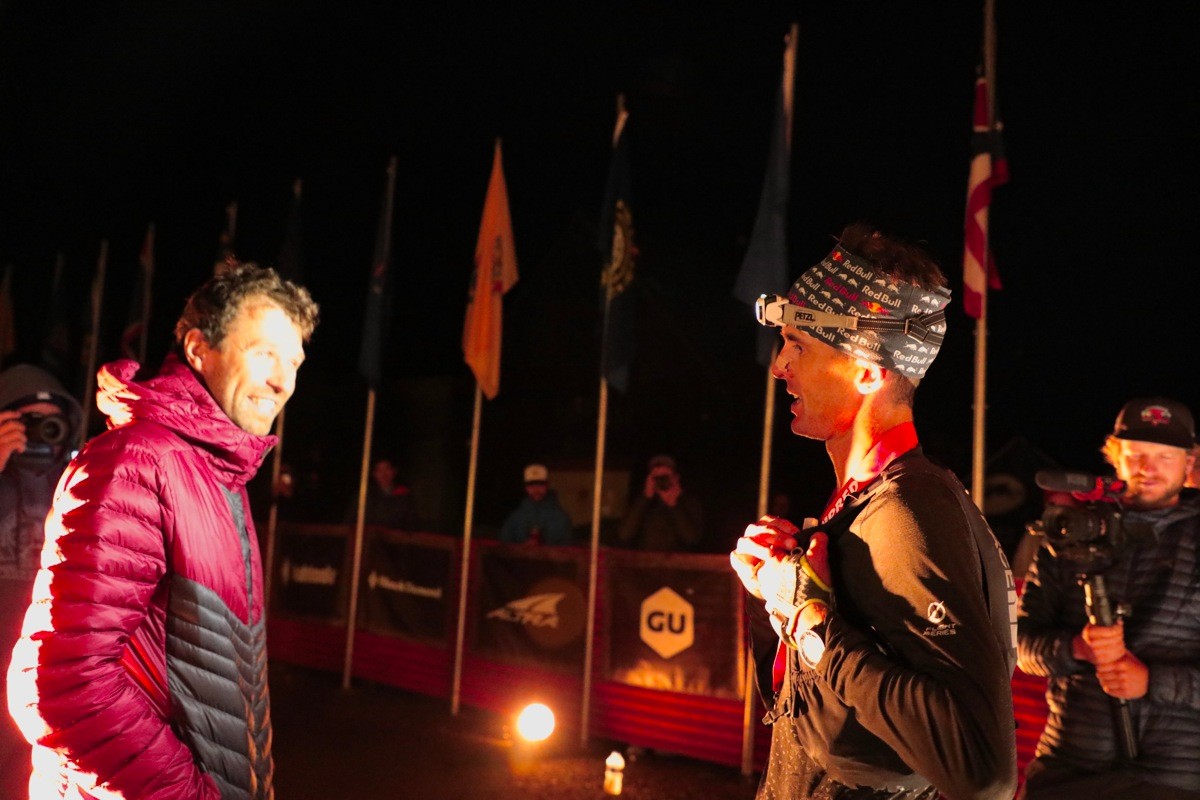
Dylan Bowman of Portland, Ore. took second place, exactly one hour behind D’haene, in 22:45:50. and Ryan Smith of Boulder, Colo. was third, in 23:24:29. All three finished faster than Jornet’s counterclockwise course record of 23:28:00, set in 2015, and D’haene bettered Jornet’s overall record of 22:41:33 from 2014.
Darcy Piceu of Boulder was the second woman to finish, in 32:08:17. Piceu has finished first or second in all eight of her Hardrock finishes. Meghan Hicks of Moab, Utah finished third, in 33:04:59.
D’haene is a three-time UTMB winner (2012, 2014 and 2017), among other titles, and Bowman has twice won the Ultra-Trail Mount Fuji, in 2016 and 2019. Both are Hardrock first-timers. D’haene was paced for the 30-mile section from Grouse to Telluride by Jim Walmsley, who won his third consecutive victory at Western States just three weeks ago and is now training for UTMB.
The second First-timer and favourite Courtney Dauwalter did not finish, dropping out at mile 62. Mike Wardian finished in 26th place, in 36:00:25.
Mario Festival of Calgary, who also dropped out at Ouray, appears to be the only Canadian entry.
Top 10 men
François D’haene 21:45:50
Dylan Bowman 22:45:50
Ryan Smith 23:24:29
Julien Chorier (2011 winner, 2nd in 2014) 25:56:57
Jeff Browning (2018 winner) 26:58:16
Nick Pedatella 28:27:47
Troy Howard 28:33:51
Trevor Fuchs 29:19:42
Kevin Shilling 30:33:20
Mick Jurynec 30:33:20
Top 10 women
Sabrina Stanley 27:21:48
Darcy Piceu 32:08:17
Meghan Hicks 33:04:59
Olga Nevtrinos 36:35:26
Heather Brooks 38:09:00
Betsy Nye 39:36:00
Pam Reed 41:56:00
Barbara Olmer 43:22:00
Marta Fisher 45:21:47
Betsy Kalmeyer 45:47:17 her second time racing Hardrock. Stanley was sixth overall, and was on pace for a course record until approximately mile 80.
(07/18/2021) ⚡AMPby Running Magazine
Mo Farah targets one more race despite stress fracture set-back
Mo Farah’s efforts to qualify for the Tokyo Games ended in frustration with a failed attempt at the Olympic qualifying mark in Manchester last month. Any hope he had of racing again this summer have been thwarted, too, by a stress fracture. But he still hopes to finish his career in a road or track race somewhere.
When asked by Victoria Derbyshire from BBC where he sees his final race being, Farah said: “I think it will be a marathon or half marathon. And I’d like to show one more track event.”
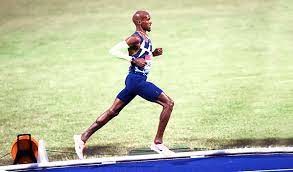
Over 10,000m?
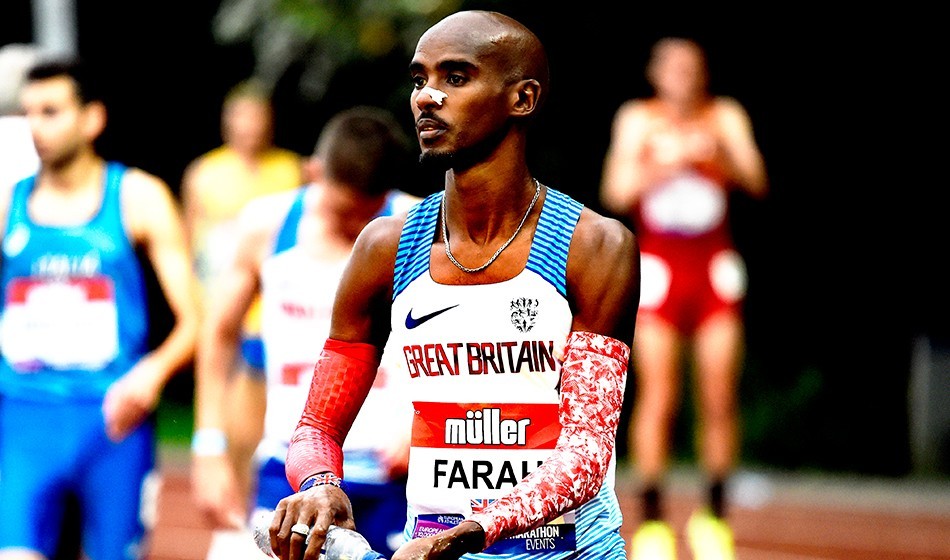
“Somewhere,” he replied, before adding that he could not say whether it might be next year’s World Championships or not.
He added: “You know what goes up must come down at some point, so I know my career will (come down) because that’s just life.
“But at the same time I don’t want it to end like this. I want to keep pushing it. And then when I want to finish, I’ll finish.
“But right now, for the minute, it’s like ‘nah’.”
So how does he want it to finish?
“I want to be out there celebrating with my fans,” he explained. “I want to show people who have supported me through my career from being a young child. And so if I’m going to do one race then I’d like to get everyone out and show the appreciation and show what I can do.”
(07/18/2021) ⚡AMPby Athletics Weekly
Training in Fire Season
I love this place, and fire season reminds me of wedding vows of loving in sickness and in health: during the glorious mountain days with fresh air, wild flowers, and perfect snow, as well as the smoke filled, oppressive and paralyzing days that leave you endlessly scrolling through emergency communication updates.
People often ask how to know when to train during fire season, and thanks to my recent asthma diagnosis and subsequent daily dose of medicine, for the first time, I don’t have a cough that keeps me from doing anything outside when there’s an inkling of smoke in the air.

As athletes, we care tremendously about our lung function and work hard to improve it. We also likely rely on exercise and being outdoors to keep ourselves sane, happy and healthy. So what to do when blue summer skies turn opaque white with wildfire smoke?
Stay tuned for a more lengthy discussion of this topic with toxicologist and Director of Clean Air Methow Liz Walker, also a fellow mountain athlete and good friend.
For now, in brief, Liz recommends the following regarding exercising in wildfire smoke:
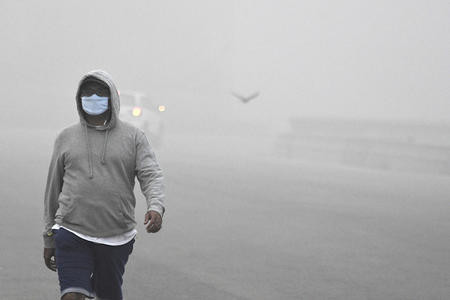
Get to know the AQI or Air Quality Index and where to find it. The pollutant of concern in smoke is PM2.5. Wildfire smoke levels can change rapidly with fire and weather conditions. If you can be flexible on timing and can find cleaner air to exercise in during a long-term smoke event - get there!
· Pay attention to symptoms. As athletes, we know our bodies well. Some people may be sensitive around an AQI of 80, some may not experience anything until 175. While a lack of acute symptoms in no way guarantees that longer term damage isn’t occurring, a headache, coughing, or tight chest is a warning system that your body is not responding well.
The WA Dept of Health recommends everyone limit outdoor activity at an AQI of 150/red/unhealthy. However, that advice was developed for the general public – not for athletes headed outside to breathe heavily for a couple of hours or more. Strenuous, extended outdoor exercise might want to be reconsidered when air is 100-150 in the orange/unhealthy for sensitive groups range.
· A well-fitted N95 mask or respirator can significantly reduce smoke exposure. It will also restrict your breathing and oxygen intake and probably be uncomfortable. If you try exercising in a mask, make sure to change your overall pace and effort accordingly.
Think about the long game. We might have smoke all summer. Every summer. Figuring out a game plan that is adaptive and supports your wellbeing today and your long-term health should be empowering.
(07/18/2021) ⚡AMPIOC president promises safe Olympics
The president of the International Olympic Committee, Thomas Bach, has urged the Japanese public to welcome the Olympics when it starts on July 23 and insisted they will be “safe and secure” despite a positive Covid test at the athletes’ village.
While acknowledging the widespread scepticism in Japan, Bach said that more than 15,000 people had arrived for the Olympics, with 15 testing positive. He also said the Games would be the most restrictive sporting event in the world, thus limiting the possibility of widespread infections.
Toshiro Muto, the chief executive of the Tokyo Olympic organising committee, confirmed on Saturday that a visitor from abroad who is involved in organising the Games had tested positive. He would not reveal the person’s nationality, citing privacy concerns, but said they had been placed in a 14-day quarantine.

The case is a concern to organisers and the IOC, which had promised the village would be the “safest place” in Tokyo, but Bach said it was important to look at the wider picture. At the first IOC press conference of these Games, he said the rate of positive tests was “very low at just 0.1%”.
“It goes without saying that all the people were immediately isolated and they do not [present] any risk to the Japanese people,” he added.
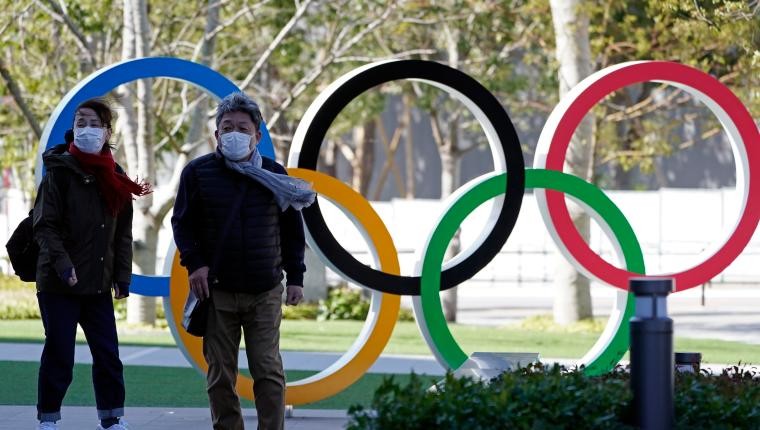
Japan’s public has been lukewarm about the Games after a resurgence in new coronavirus infections and worries that an influx of foreign visitors may help turn it into a super-spreader event, which in turn could put further strain on the country’s already stretched medical system.
But Bach said: “We are very well aware of the scepticism in Japan. My appeal to the Japanese people is to welcome these athletes who are here for their competition of their lives and to acknowledge that is not for any price.
“They have the same interest as the Japanese people in ensuring these Games are safe and secure. And for this they accept and even welcome measures that make these Olympics the most restricted sports event not only in Japan but in the entire world.
“What will make the Games so historic is the demonstration that they can happen in a safe and secure way, even under the circumstances of this pandemic.”
At least five athletes have tested positive for Covid-19 since arriving in Japan for the Games, while the Refugee Olympic Team was forced to delay travelling to Tokyo after one of its delegation also returned a positive test.
However, Bach stressed the chances of Covid significantly affecting the Games was small. “None of the sports events in the world has such strict protocols for anti-Covid like these Olympic Games,” he said. “The Japanese hopefully will also gain confidence in the very rigorous testing and very rigorous immediate action.”
That message was reinforced by the Tokyo 2020 president, Seiko Hashimoto. When asked if she was worried about the Delta variant of Covid spreading, she said: “We are doing everything we can to make sure it is Covid secure.” Yet she admitted some athletes who have not yet travelled to Tokyo “are probably very worried” about the situation
(07/17/2021) ⚡AMPby The Guardian
Tokyo 2020 Olympic Games
Fifty-six years after having organized the Olympic Games, the Japanese capital will be hosting a Summer edition for the second time, originally scheduled from July 24 to August 9, 2020, the games were postponed due to coronavirus outbreak, the postponed Tokyo Olympics will be held from July 23 to August 8 in 2021, according to the International Olympic Committee decision. ...
more...Team Great Britain's Butchart to compete in Tokyo after 'fake' COVID-19 test row
Britain's 5,000 meters runner Andrew Butchart will compete in the Tokyo Olympics after UK Athletics handed him a suspended ban for saying he had changed the date on a COVID-19 test result to return to Britain from a meet before clarifying his remarks.
In a now-deleted episode of The Sunday Plodcast, Butchart had said there was a delay in getting his PCR test result before his flight home from the United States and he had changed the date on an old test as he prepared for check-in, the Times newspaper had reported.
"Everybody has faked PCR tests... to try to go somewhere, because it's just so hard," Butchart was quoted as saying in the podcast. The 29-year-old later told the newspaper that he had "perhaps glorified the situation for the podcast."
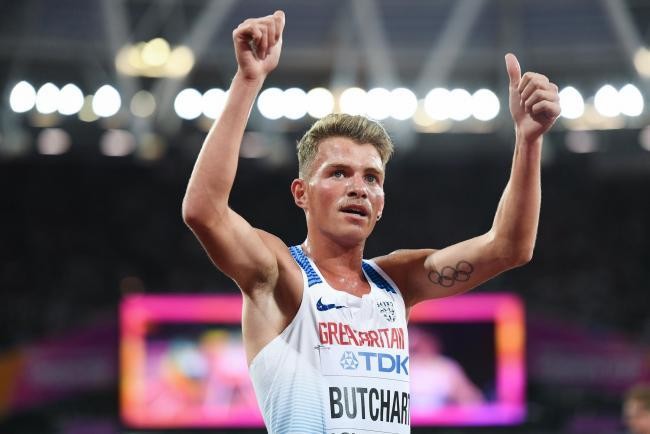
He apologized to Team GB and the Tokyo organisers.
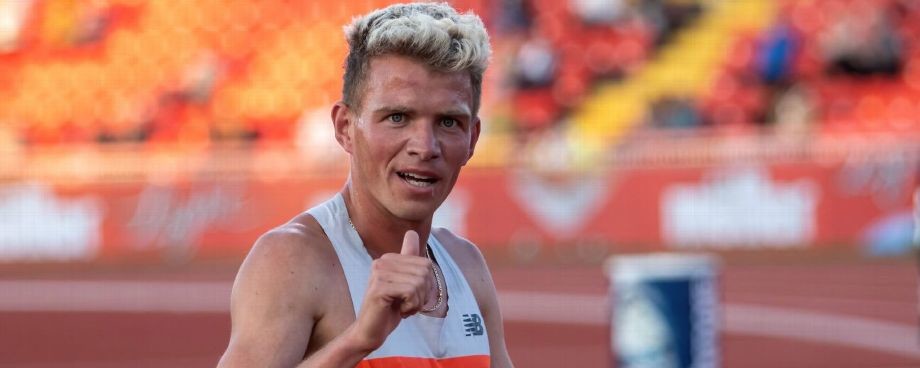
"Following widely publicized comments by Andrew Butchart on a podcast regarding the alleged faking of COVID tests, he was charged with misconduct by UK Athletics for making statements likely to bring athletics into disrepute," UK Athletics said in a statement.
UK Athletics said an independent disciplinary committee had issued Butchart with a 12-month ban from athletics, suspended for a period of two years, and fined him £5,000 pounds. It said he can compete in the Tokyo Games.
It also warned him about his future conduct and asked him to issue a public written apology to the body.
Butchart had told the Times that he never faked the test and it came through on time.
"I used the example of athletes I know having to use previous PCR results to get through check-in but not immigration," he had said. "I haven't done this but know of people who have."
The Tokyo Games, delayed last year because of the COVID-19 pandemic, begin on July 23.
(07/17/2021) ⚡AMPby ESPN
Tokyo 2020 Olympic Games
Fifty-six years after having organized the Olympic Games, the Japanese capital will be hosting a Summer edition for the second time, originally scheduled from July 24 to August 9, 2020, the games were postponed due to coronavirus outbreak, the postponed Tokyo Olympics will be held from July 23 to August 8 in 2021, according to the International Olympic Committee decision. ...
more...Here’s How to Watch Every Track and Field Event During the Tokyo Olympics If You Don’t Have Cable
No cable box or login? No problem. Here’s how you can catch every track and field event from Tokyo.
For track and field fans, the Olympic Games are must-see TV. And this year, with spectators not allowed, television coverage feels more critical than ever.

Fortunately, NBC will air more than 5,500 hours total of live coverage across all sports from the Tokyo Olympics, which start July 23 and go until August 8. That will include qualifying rounds, semifinals, and finals of everything from the 100 meters to the marathon. (Check https://www.nbcolympics.com/schedule for the full schedule.)
With the 13-hour time difference between Tokyo and New York, most track and field coverage begins at either 4 a.m., 6 a.m., or 8 p.m. EDT. While some track and field events will air live on NBC proper, many will be shown on the network’s other channels, including USA and NBCSN—as well as on NBCOlympics.com, the NBC Sports App, or NBCSports.com, after you sign in with your cable or satellite provider login.
So, if you don’t have cable, how are you supposed to watch? We break it down for you.
Stream for free 

If you don’t have a cable login, you’re limited to highlights on those NBC websites and the app. With an increasing number of online streaming services, however, it’s still possible to catch every second of the action on your smart TV, computer, phone, or tablet, even if you don’t have a cable subscription.
And—if you time your sign-ups right—you can even do it for free.
First things first: Make sure you’ve joined NBC’s Peacock service—even if you have cable. Some track and field events—for instance, the men’s and women’s 10,000 meters and finals of the 1500 meters and 100 meters—will stream live there exclusively. It’s free. (For a $4.99 a month Peacock Premium subscription, you can get Olympic basketball and have access to other track events, such as the Diamond League meets, but you don’t need a Premium subscription for Olympic track.)
Live coverage of the remaining track and field events will be spread between NBC, USA, CNBC, and—for the men’s and women’s race walk—NBCSN. So, you can pair Peacock with a streaming service that includes other NBC stations to watch all your favorite athletes.
Track and field events take place during the 10-day period from July 30 to August 8. Because several companies offer seven-day free trials for new customers, it’s possible to string a few promo periods together to cover track and field, or even the entire Games.
A word to the wise: Set yourself a calendar reminder to cancel at the end of the trial period if you don’t want to incur charges. However, none of these services requires a long-term contract, so even if you forget, the most you’re out is a month of subscription fees.
Streaming services
Here are five options—complete with cost, trial period, and how much storage space you get for recording, so you can watch later or revisit key races as many times as you want. Note: In some markets, local NBC affiliates aren’t available on all of these services. So if you don’t already have a way to watch local TV, double-check by entering your ZIP code on the website or contacting customer service before you sign up.
AT&T TV
Price: $69.99/month for the Entertainment package
What you get: 65+ channels and 40,000 on-demand TV shows and movies
DVR storage: 20 hours, or upgrade to unlimited for an additional $10/month
Free trial? No
FuboTV
Price: $64.99/month for the Starter package
What you get: 100+ channels, some TV shows and movies on-demand, and 130+ events, including other track and field favorites like Diamond League and American Track League meets
DVR storage: 250 hours
Free trial? 7 days
Hulu + Live TV
Price: $64.99/month
What you get: 75+ channels, on-demand library with TV and movies, plus Hulu originals (think The Handmaid’s Tale and Little Fires Everywhere)
DVR storage: 50 hours
Free trial? 7 days
Sling Blue
Price: $35/month, plus an extra $6/month for News Extra to include CNBC
What you get: 30+ channels, with some TV shows and movies on-demand
DVR storage: 50 hours, or upgrade to 200 hours for an additional $5/month
Free trial? No, but there’s an intro offer of $10 for your first month
YouTubeTV
Price: $64.99 per month
What you get: 85+ channels, with some TV shows and movies on-demand
DVR storage: Yes, with unlimited space
Free trial? Promo offers are frequently updated, so check back
(07/17/2021) ⚡AMPby Runner’s World
A new generation of champions set to emerge in Tokyo
While some reigning Olympic and world champions might be missing from the Games in Tokyo, the extra year as a result of the postponement in 2020 has allowed a number of new talents to emerge.
For some it means a debut Olympic experience which may not originally have been expected until at least 2024, while for others it is a realistic opportunity to win medals and titles.
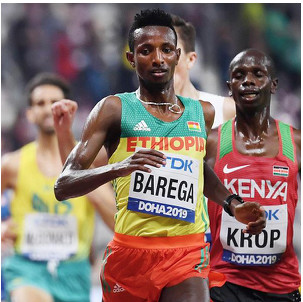

Of the 43 individual events contested at the Rio 2016 Olympics, the winners from just 18 of those will defend their titles in Tokyo.
The likes of world 800m champion Donavan Brazier and Olympic 110m hurdles champion Omar McLeod missed out on being selected for their national team, while other stars, such as world and Olympic triple jump champion Christian Taylor, are currently sidelined with injury.
But while those global champions won't be able to contend for top honours in Tokyo, here are some of the new generation of stars who are set to emerge.
Selemon Barega, 10,000m
After winning world U18 and U20 titles in 2017 and 2016 respectively, Ethiopia’s Barega stepped up to secure senior 5000m silver at the World Athletics Championships in 2019. Still aged just 21, he is now preparing for his debut Olympics, where he will race the 10,000m.
Barega started the season with intent, running an Ethiopian all-comers’ record of 27:58.5 at altitude in Addis Ababa in January. He then went even faster at the Ethiopian Trials in Hengelo in June, clocking 26:49.51 on the same track on which he ran his 26:49.46 PB in 2019. That, together with the speed he demonstrated by running PBs of 3:32.97 for 1500m and 7:26.10 for 3000m during the indoor season, means he is set to be a strong force in Tokyo
Jasmine Camacho-Quinn, 100m hurdles
Medal success in Tokyo would see Camacho-Quinn become the first Puerto Rican woman to secure an Olympic podium place in athletics and this season she has certainly demonstrated her ability to achieve that feat.
The 24-year-old improved her own national 100m hurdles record to 12.32 to move to equal seventh on the world 100m hurdles all-time list in Eugene in April and hasn’t been beaten since. She clocked 12.38 to win at the Wanda Diamond League meeting in Florence and 12.34 for success in Szekesfehervar, meaning she has the three fastest times in the world so far this year. “I'm looking forward to the Olympics this year - it will be like redemption from my fall in 2016,” she said after her Florence run as she reflected on missing out on the final in Rio. “I'm really excited. Training really hard, working really hard, but really looking forward to it.”
Tara Davis, long jump
Davis leapt into the seven-metre club in March, breaking the US collegiate long jump record with 7.14m at the Texas Relays. The longest jump in the world since the 2019 World Athletics Championships final, that mark moved the 22-year-old to fifth on the US all-time list.
The world U20 bronze medallist had also broken the collegiate indoor record with 6.93m at the NCAA Indoor Championships earlier in the year and finished second at the US Olympic Trials, going beyond seven metres again with a best of 7.04m. “I’m shocked still because seven metres as a jumper is the biggest thing ever. Hitting it in the Olympic Trials is unreal,” she said after her performance in Eugene, where she finished second to four-time world gold medallist and 2012 Olympic champion Brittney Reese. “I’m freaking jumping with my idol, Brittney Reese. Being with her and competing with her in 2016 I was so starstruck. I was like, ‘I see her on TV and now I’m jumping with her’.”
Alison Dos Santos, 400m hurdles
After running in the lane next to Karsten Warholm during his world record in Oslo, improving his South American record to 47.38 to finish second, Brazil’s Dos Santos went even quicker to win three days later in Stockholm, taking another 0.04 off that mark.
This season has seen the 21-year-old build on his 2019 breakthrough, having that year improved his PB and the South American U20 record seven times, eventually clocking 48.28 to finish seventh at the World Athletics Championships in Doha. Also a key member of Brazil’s relay team, he ran the fastest split of the mixed 4x400m final at the World Athletics Relays in Silesia, recording a 44.62 anchor leg. “I'm looking forward to the Olympics, and yes, I think I can get a medal,” he said with a smile after his run in Stockholm.
Mondo Duplantis, pole vault
While some may argue that a world record (or two) rules an athlete out from being considered part of a ‘new generation’, pole vault star Duplantis is still aged only 21 and has much more he hopes to accomplish during his career, including winning Olympic gold.
This season he has cleared six metres or higher in four competitions, capped by his 6.10m in Hengelo - a height only he, Renaud Lavillenie and Sergey Bubka have ever achieved. After winning 2019 world silver behind Sam Kendricks - who ended Duplantis’ 23-competition win streak in challenging conditions in Gateshead in May - Duplantis will be looking to go one better in Tokyo. He also believes he can go higher than his 6.18m world record this season and after attempting 6.19m in Oslo, he said: “I really think I can get that record soon. But for now I feel good, a month away from the most important meet of my life. I am in good shape, I am running well on the runway and keeping up the rhythm well.”
JuVaughn Harrison, long jump and high jump
Harrison secured his two Olympic spots in style at the US Trials, soaring over 2.33m and then leaping a PB of 8.47m to improve his own best-ever single-day high jump and long jump double. As a result, he will become the first male athlete to represent the USA in both events at the Olympics since Jim Thorpe in 1912. No other athlete has ever achieved both a 2.30m high jump and 8.40m-plus long jump.
The 22-year-old is no stranger to juggling both events on the same day and in March he cleared 2.30m and jumped 8.45m at the NCAA Indoor Championships. In Tokyo, the high jump final is on the evening of day three and the long jump final is on the morning of day four. He is expecting to rise to the challenge. “It will be harder competition which will make me push harder and jump farther,” he said.
Erriyon Knighton, 200m
Running 19.88 at the age of just 17, Knighton broke not one but two world 200m age-group bests which had previously been held by a certain Usain Bolt. At the US Olympic Trials, the former American football player ran 20.04 in the heats to improve Bolt’s world U18 best before taking 0.16 off that mark in the semifinals to break the world U20 record of 19.93 set by Bolt in 2004. In the final he went quicker still, clocking 19.84 to finish third and become the youngest man to represent the USA in athletics at the Olympics since Jim Ryun in 1964, also in Tokyo.
Racing outside of the USA for the first time, Knighton then placed third at the World Athletics Continental Tour Gold meeting in Szekesfehervar, running 20.03. “It hasn't sunk in, it’ll probably sink in when I get home,” he said after claiming his Olympic place. “I'm happy. I feel it's a really big achievement.”
Nicola McDermott, high jump
As an eight-year-old, McDermott dreamt of becoming a consistent two-metre-plus international high jumper and having already achieved the latter, this year her two-metre aim was accomplished, too. Clearing 2.00m at the Australian Championships in April, the 24-year-old broke Eleanor Patterson’s Oceanian record and then added another centimetre to the mark in Stockholm earlier this month, despite not feeling 100 percent.
McDermott didn’t manage to register a height when she made her World Athletics Championships debut in London and two years later the Commonwealth bronze medallist finished 15th in qualifying. This time, as she makes her Olympic debut, her mind is on medals. “I’m not going to say it’s impossible to get a medal,” she said. “I’ll be aiming and I think 2.01m will maybe get me in the medals so I am aiming and training for that and believing that I can do it.”
Sydney McLaughlin, 400m hurdles
Like Duplantis, McLaughlin is already a world record-breaker having taken the 400m hurdles to another level with her time of 51.90 at the US Olympic Trials. She also was no stranger to making history before that, with world U18 best and world U20 record times among her age-group accomplishments.
Now aged 21, she made her first Olympic team at just 16, finishing fifth in her semifinal nine days after her 17th birthday, and then secured silver at the 2019 World Athletics Championships in Doha, a race won by her compatriot Dalilah Muhammad in a world record of 52.16. It was that mark McLaughlin improved in Eugene. “So many amazing women have come before me and will come after me,” she said after her world record. “I'm excited for what the future holds. I just want to leave my mark and be part of such an amazing sport, because the glory isn't forever.”
Athing Mu, 800m
Mu is another athlete to have risen impressively through the ranks, having stormed into the spotlight in 2019 when as a 16-year-old she ran the second-fastest ever indoor 600m time of 1:23.57. This year she has broken the world U20 indoor 800m record with 1:58.40 and then dominated the two-lap final at the US Olympic Trials, running a world-leading 1:56.07 to improve her own North American U20 record.
The 19-year-old also ran an area U20 record in the 400m with 49.57 to win the NCAA title earlier in the month. “This is my first year coming out here running to my potential,” she said after her trials win. “I wouldn't want to say I'm dominant at it yet. My confidence takes a lot from it. In 2019, I wasn't confident, but I was good enough. Gaining confidence has contributed to my dominance thus far in the 800m. Being good at it, knowing it's my event.”
Great experience
While some reigning global champions may be missing out on Tokyo, there are a number of vastly experienced stars who will be adding another Olympics to their impressive tally of major events. The USA’s Allyson Felix has already won six Olympic gold medals and 13 world titles, while shot put star Valerie Adams has claimed two Olympic and four world titles for New Zealand, with Tokyo being a fifth Olympic Games for both athletes.
Spain’s 51-year-old Jesus Angel Garcia, meanwhile, will compete at his eighth Olympics – the most ever for a track and field athlete. Who knows whether some of this new generation of stars will still be in action come the Olympic Games in 2048!
(07/17/2021) ⚡AMPby World Athletics
Athletes will have to put their own medals on at the Tokyo Games
This summer’s Olympic Games in Tokyo will look much different than what we’re used to. The stands will be empty, only competing athletes will be allowed within Olympic facilities and according to a conference call on Wednesday by International Olympic Committee (IOC) president Thomas Bach, winning athletes will have to place their own medals around their necks to avoid the risk of spreading the coronavirus.
“The medals will not be given around the neck,” said Bach. “They will be presented to the athlete on a tray and then the athlete will take the medal him or herself.” He added that the medals will be placed on the tray only by an individual wearing disinfected gloves, ensuring that no one touches the medal before the athlete who is accepting it.

Regardless of how the medals are presented or what the athletes can and cannot do to celebrate, anyone who ends up on that podium certainly deserves it, and we will be cheering
(07/17/2021) ⚡AMPby Running Magazine
Ever Wonder How Much an Olympics Medal is Worth?
This year, one of the world's largest precious metals wholesale trading firms, Dillon Gage Metals, is sharing secrets behind the globally recognized Olympic medals athletes train so hard to obtain. The value of an Olympic medal is said to be worth quite a bit, and with the major sporting event just around the corner-beginning July 23 through August 8, in Tokyo, Japan-all eyes will be glued to the television wondering who is going home with a precious piece of history.
The design of the Tokyo medals, designed by Junichi Kawanishi, reflects the ideology that athletes must always strive to achieve glory and victory daily. The design incorporates light and brilliance in the shape of polished stones, symbolically mirroring the warm glow of friendship, diversity, and representation, and the athletes' energy and those who continue to uplift them.
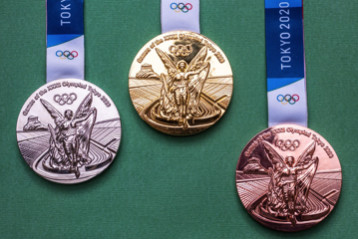
"The value of gold is a curious inquiry we receive all the time, especially around the time of the Olympics," said Terry Hanlon, president of Dillon Gage Metals. 'It's one of the most discernible medals in the world, and it's only natural for individuals to be curious about what it's made of and its true value. Most medals awarded during the sporting event aren't worth much because they aren't solid gold but rather silver with gold plating."
So, the question resides, how much is an Olympic medal actually worth? Every gold medal that athletes receive for their accomplishments is comprised of 99.9 percent silver and 6 grams of plated gold, weighing about 556 grams. Subtracting the gold from the silver brings the medal down to 550 grams in weight, while silver and bronze are a lesser metal weight at 550 grams and 450 grams respectively.
Considering it takes 31.1033 grams to equal a troy ounce, and if the silver is truly pure silver, it takes some simple mathematics to discover the true value of the Olympic medals. Taking these numbers plus the current trade price of silver, approximately $26.00, and utilizing a common equation, the estimated value of gold can be calculated.
The equation includes grams divided by troy ounce, then multiplying by trade price to find the dollar amount. In practical terms to solve for the total dollar amount in silver, use 550g/31 x $26.00 to equal $461.29.
In addition to the previous calculation, then add in 6 grams to account for the gold plating. In today's currency, an ounce of gold is trading approximately for $1,808. Using the same equation to solve the gold composition: 6g/31 x $1,817 = $350.75.
Combined, the gold and silver composition's value for the Tokyo 2020 Olympics gold medal is approximately worth $812.04. And the value for the Tokyo 2020 Olympics silver medal is approximately worth $461.29.
But no matter the actual value of all these medals, to compete on the world stage of the Olympics, one of the most prestigious sports competitions, is truly priceless. Dillon Gage Metals wishes every Olympian luck and sends their support to each nation's competitors during the 2020 Summer Olympics in Tokyo.
(07/17/2021) ⚡AMPHow Hot Is Too Hot to Run?
Runners don't like heat. When the mercury rises, so too do many of us - early in the morning, that is, in an effort to get in our training before the heat sets in. Increasingly it seems, even rising before dawn is a futile effort to beat the heat. But, hot or not, we'll get out in it, sweat, suffer and complain.
Sometimes, however, you have to take more dramatic action. Last weekend, when the Pacific Northwest was swept by a heat wave that produced conditions more commonly associated with Yuma, Arizona, than Eugene, Oregon, the U.S. Olympic Trials were repeatedly rescheduled "for the safety and well-being of athletes, officials and fans."
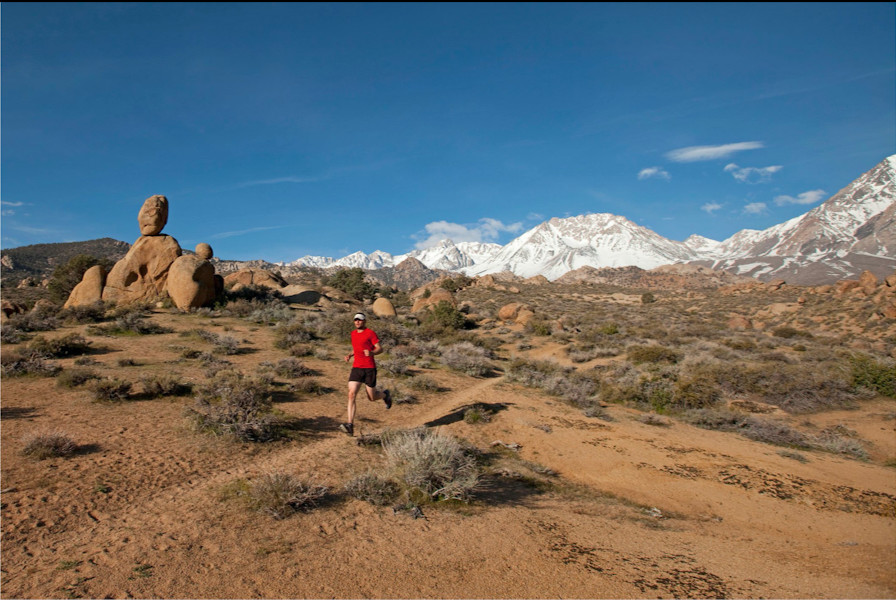
A meet of the magnitude of the Olympic Trials being cancelled raises a question: how hot is too hot? Not just for well-conditioned pros, but for the rest of us?
First, the good news. "If you're well prepared and make adequate adjustments, you can safely exercise most days of the year," says Brett Ely, a 2:38 marathoner and thermal physiologist at Salem State University, Salem, Massachusetts, whose research has focused on the impact of heat stress on exercise performance and health.
Normally, our core temperature is around 98.6. When we exercise, it starts to rise. "People can get up to about 104 in exercise without consequence," she says.
Factors Beyond Fahrenheit
To avoid going over that threshold (or to slow the rate at which you approach it) a lot of factors come into play. One is the rate at which you can shed heat to the environment. This occurs in three ways: radiation away from hot skin, conduction (via cool air flowing across your skin), and evaporative cooling of sweat. "The heat you are creating, you can dissipate," Ely says.
But under hot enough conditions, two things can impede this. One is humidity. "We can't evaporate the sweat, says Chris Chapman, an exercise and environmental physiologist at the University of Oregon, Eugene. "It will just drip off and not provide cooling."
The other is that we can gain heat directly from the environment, adding to that created by our own bodies. Anyone who's ever tried to run in intense sunlight knows this. Not only can the sun itself be startlingly intense, but its heat can bounce back at you from sun-warmed surfaces.
Another way you can gain heat from the environment is if the air itself is super-hot. One of the surprises Pacific Northwesterners got during the recent heat wave (which peaked out at 116 in Portland) is that above about 110, even in bone-dry humidity, a breeze is not your friend. Instead, the airflow may impart more heat to your skin via conduction than it removes via enhanced evaporation. Under these types of conditions, Chapman says, "[even] if you use a fan to cool yourself, you're just increasing body temperature by blowing hot air on yourself."
Wet Bulb, Steamy Runners
None of this is new. Back in the 1950s the U.S. Marine Corps combined it into something now known as the wet bulb globe temperature (WBGT), says Samuel Cheuvront, an exercise physiologist with entrinsic bioscience in Norwood, Massachusetts, who previously spent nearly 20 years working with the Army Thermal and Mountain Medicine Division, in Natick, Massachusetts.
The WBGT is the index that, according to NBC's telecast of the Olympic Trials, USATF used in its decision to postpone the final session of the Trials from its scheduled start time of about 3:45 pm to 8:30 pm. (USATF didn't respond to a phone call and an email from PodiumRunner seeking to confirm this.)
WBGT combines three measures of temperature. One is simply the air temperature. Another is a measure of evaporative cooling (related to relative humidity and air flow). The third is a measure of the intensity not just of sunlight, but of heat bouncing back at you from nearby surfaces (such as the track).
The result is stated as a temperature, but it's a mistake to equate it to the type of "feels like" temperature you might see on the web. Due to the way it's calculated, a WBGT as low as 90F - far lower than the air temperatures recorded on the track in Eugene - is hot.
The American College of Sports Medicine has also used it to recommend cancellation of competition at WBGTs as low as 82F. That's the level the Navy would only put as green flag, though the Navy's flag system is more interested in safe training conditions than in safe conditions for endurance races, inherently more intense than most types of training.
A 2010 study in Medicine & Science in Sports & Exercise put the threshold even lower for large marathons. After studying eight marathons that either had to be canceled or produced large numbers of medical events, that study concluded that such marathons (which have large numbers of participants who would be on the course much longer than the pros) should be canceled if the WBGT at the start is over about 72F.
If it sounds complex, it is. But it could be relevant in the upcoming Olympics. Tokyo is prone to black-flag conditions as I discovered some years ago, when I coached a Navy lieutenant stationed there. She was an elite marathoner, but training was very difficult in the summer because she got a seemingly endless number of black-flag days in succession and wasn't allowed to run outdoors.
There are several ways to get a WGBT in the danger zone, says Cheuvront. The air temperature could, of course, just be Death Valley or Sahara Desert levels of hot. Or it could be not quite so wickedly hot, but with intense-enough sun to push you too high (probably the case in Eugene). Or the temperature could be still lower, but with very high humidity (what my runner encountered in Tokyo).
But it's even more complex than that, he says, because the body takes time to build heat to dangerous levels. That means the black-flag warning zones are set for longer races, such as 10Ks, and marathons. That's undoubtedly why the first events to be rescheduled in Eugene were racewalks and the women's 10K.
"5K races are over pretty quickly," Cheuvront says. The majority of people are finishing in 30 minutes or less.
Shorter races like the 400m, the 200m, and the 100m are over even more quickly. So long as runners aren't already overheated from standing around in the sun before they start, there's not much risk of them developing heat injury in the few seconds of the race.
How Do You Decide When it is Too Hot?
What does this mean for road runners seeking to enjoy the summer (especially after a year of COVID-19 lockdown)?
Clearly, no one can name a number on the thermometer over which you're suicidal to go out for a run. It's not that simple. And measures like the wet bulb that combine factors are confusing and not readily available unless you want to shell out several hundred dollars for a fancy thermometer.
Bottom line, it comes down to paying attention to your own body.
"If someone is well-adapted to heat, they're probably okay listening to their bodies," Ely says. Monitor how you feel: If you get dizzy, lightheaded, or uncomfortably hot, that's the time to stop.
Be careful, however, if you get an unexpected heatwave that you've not prepped for. After a quick increase in temps, Ely says, "you might be better off going for a swim or a walk."
If you run in heat, adjust your pace as needed to maintain similar effort to what you'd feel on a cool day. "You might be 30 seconds to a minute a mile slower," Ely says. If so, don't worry. What you're doing by running slower is reducing the amount of heat your body is producing as you run, allowing you to go longer before you have to quit.
"The harder you're running the more metabolic heat you're generating," Chapman says. "[That] means you're going to reach your capacity for heat tolerance quicker."
You may also need to shorten your run and save longer outings for cooler days.
And, of course, keep hydrated and replace electrolytes, most importantly sodium. "If you sweat a lot, don't skimp on the saltshaker," Ely says.
Finally, realize that if you've spent weeks hiding from heat by running in the cool dawn, you won't instantly become a great heat-runner. Adaptation requires some time. "It takes at least 7 to 14 days," Chapman says.
(07/17/2021) ⚡AMPby Trail Runner Magazine
Why You Should Be Skeptical About Your Wrist-Based Heart Rate
Every week or two, I’ll open an athlete’s training log and it seems like a blood-curdling scream leaps off the page.
“My body is being weird! My heart rate was way too high on this run!”
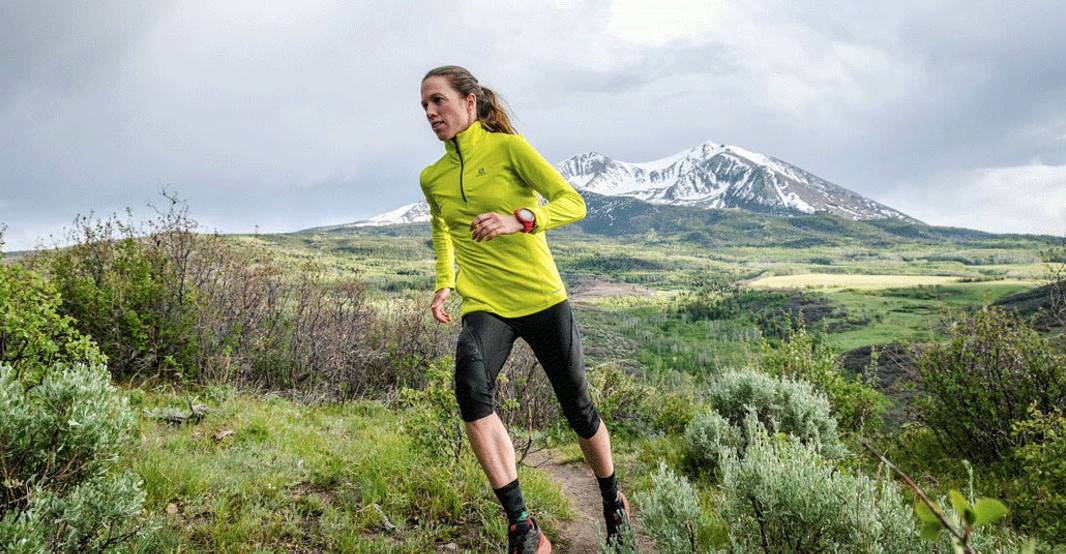
Or . . . "My body is being weird! I couldn’t get my heart rate up on this run!”
As Edgar Allan Poe could tell you, little is more disconcerting than a screwed-up heart beat. And sometimes these athletes’ hearts seem very screwed up, a telltale sign of a major issue. Maybe they sustain 190 heart rate at a moderate effort. Or maybe it peaks at 120 on a sprint. When I first saw these issues a few years ago, worried about arrhythmia or other health crisis, I would ask them to go to the doctor immediately.
But, then, I would look at the data and notice discrepancies. Lots of studies came out that saw discrepancies too. There seemed to be a problem of faulty measurement, rather than faulty hearts. So, now, I have a standard one-question response.
“Are you using a wrist-based optical heart-rate monitor?”
Simply put, for some athletes, wrist-based heart rate is not accurate during intense activity like running, though it varies a ton. And many athletes have no idea. Let’s dig down into some of the data.
Heart-Rate-Measurement Basics
Most wrist-based heart-rate monitors rely on photoplethysmography, a word that I assume is real. Photoplethysmography involves using light to measure blood flow. That’s why your watch may have a bright LED light that shines against your skin. Light refracted off the blood flowing beneath the surface of your skin is fed into algorithms that use it to spit out a heart-rate number.
Chest straps, meanwhile, use sensors on the strap to record signals from the heart beat. This process requires some moisture, which is why you may notice readings that are off when you start a run and haven’t worked up a sweat.
Problems Wrist Monitors Face
The chest strap has the advantage of being a semi-direct measurement of heart rate. A good chest strap will be close to 100% accurate. Which makes sense, because it’s essentially reaching into your chest cavity and recording each beat with a clipboard.
As we’ll see later, many wrist monitors are not as accurate. For some, it could be as simple as not being placed correctly on the wrist, since being too loose generate a faulty reading, and being too tight can impede blood flow.
Other athletes may have physiology that is not as conducive to the technology, possibly due to locations of blood vessels or bodyfat percentage. On top of that, vigorous exercise jostles everything around, like turbulence on an airplane. You might be looking at a beautiful sunset out the window when you hit a rough patch, and now you’re looking at the sky, now the clouds, now the sun and now you’re throwing up in a bag.
Wrist-Monitor Accuracy Data
I currently have 18 windows open to different studies on wrist-based heart rate conducted since the start of 2017, and my computer fan just turned on loudly in protest. If my browser had a heart, it would currently be at VO2 max.
Most of the data from the studies has overlap, even if the conclusions vary. A January 2017 research letter in the Journal of the American Medical Association Cardiology had 50 healthy adults test four different wrist monitors and a chest strap at rest, 2 mph, 3 mph, 4 mph, 5 mph and 6 mph. While the chest strap had a 0.99 correlation with electrocardiograph readings, the wrist monitors varied between 0.83 and 0.91 correlation. That study had a conclusion that we’ll see a lot: “In general, accuracy of wrist-worn monitors was best at rest and diminished with exercise.”
An August 2017 study in the Medicine & Science in Sports & Exercise Journal had even more disheartening findings. Fifty athletes spent time on the treadmill, elliptical and stationary bike, and correlation varied from 0.75 to 0.92. As that study concluded: “Electrode-containing chest monitors should be used when accurate HR measurement is imperative.”
“That sounds pretty good,” someone might say. “It’s not imperative to be exactly right, just close.” That perspective is backed up by the conclusion of some studies. For example, a 2018 study in BMC Sports Science, Medicine, and Rehabilitation came to the conclusion that wrist-based heart rate is “acceptably close” across a broad range of activities. Looking a bit deeper into the data, that study found that during running, the heart rate numbers were within 10 beats per minute of actual heart rate 95% of the time, with around three beats per minute average error. In other words, on a one-hour run, a few minutes will be spent with a heart rate monitor giving a number that is 10+ beats off.
You think that was a lot of studies? Well you ain’t seen nothing yet. A 2018 study in the journal Digital Health found absolute error of 1% to 8% depending on device and intensity level. A 2017 conference paper found that the tested watches accurately measure up to 89% of beats accurately at rest, and less during activity. A 2019 study in the Journal of Sport Sciences found error rates between 2.4% and 13.5%.
Here’s the most fascinating one to me. A 2018 study in the BMJ Open Sport and Exercise Journal found absolute error values of 3.3% to 6.2%, but using a “10% equivalence zone,” concluded that the watches were accurate. You can see why that is a problem for athletes if you think about using the heart-rate monitor to stay below aerobic threshold (AeT). Imagine a hypothetical athlete with an AeT of 150. At 150 heart rate or below, they know they can achieve the desired training stimulus, or excel in an ultra race. A 5% error rate could mean that their heart rate is actually 157 (which would lead to lack of recovery in training or a bonk in racing).
But here’s the big problem—the errors are not consistent. If it was always 5% low or 5% high, we could use that information (you’re probably having flashbacks to the accuracy v. precision distinction from high-school science class). Instead, it’s all over the place, and since 5% is an average, sometimes it might read 190 or something that makes an athlete write a panicked entry in their training log.
It’s kind of like Michael Cohen testimony. First it says one thing, then it says another, so even if it’s right one time, how can you trust it? In this analogy, I’m not sure if I’m CSPAN or Alexandria Ocasio-Cortez.
Put It All Together
When it comes to wrist-based heart rate, it’s not an obvious answer for every athlete. A 2018 commentary in the Journal of Medical Internet Research pointed out that there is no consensus, partially due to lack of uniformity in evaluation (the same data can be used to reach different conclusions based on methodology, as we were talking about with the “10% equivalence zone” above). The gold standard of product testing, D.C. Rainmaker, has found some optical sensors that work well for him (with variation), and his tests are as rigorous as any study protocol. Anecdotally, some athletes can use certain wrist monitors and return with beautiful heart-rate graphs that track effort, while others can use the same watch and do the same workout and return with a garbly mess of incomprehensible noise.
In addition, every watch is different, and some are more accurate than others. The technology is constantly improving, and it’s possible that newer, high-quality watches have overcome some of the technological hurdles uncovered by the studies. If I were a betting person, I’d guess that wrist-based heart rate will be effective relatively soon.
If you want to do some home testing, and you think your watch might be right, do 6 x 1 minute intervals hard with 2 minutes easy recovery on your next run (or similar hard effort). Does your watch return heart-rate peaks that are as stunning as the Matterhorn, lining up with how you feel? That’s good, it probably works. Calibrate it with a chest strap to be sure.
However, if you’re like some of the athletes I have seen, the heart-rate graph will look like it was created by a random-number generator. If that’s you, there’s a good chance your wrist monitor is still accurate at rest and during certain activities, so it can still be useful. But using it for intense running would be like entrusting your timekeeping to one of those broken clocks that is still right twice a day.
(07/17/2021) ⚡AMPby Trail Runner Magazine
ASICS London 10K will return in July
The ASICS London 10K will return to London on Sunday, July 25 this year, in what organisers say is the largest closed road running event since the pandemic began in March 2020.
14,000 registered runners will be able to take part in the event, which is also part of a global study into the effect of movement and running on wellbeing.
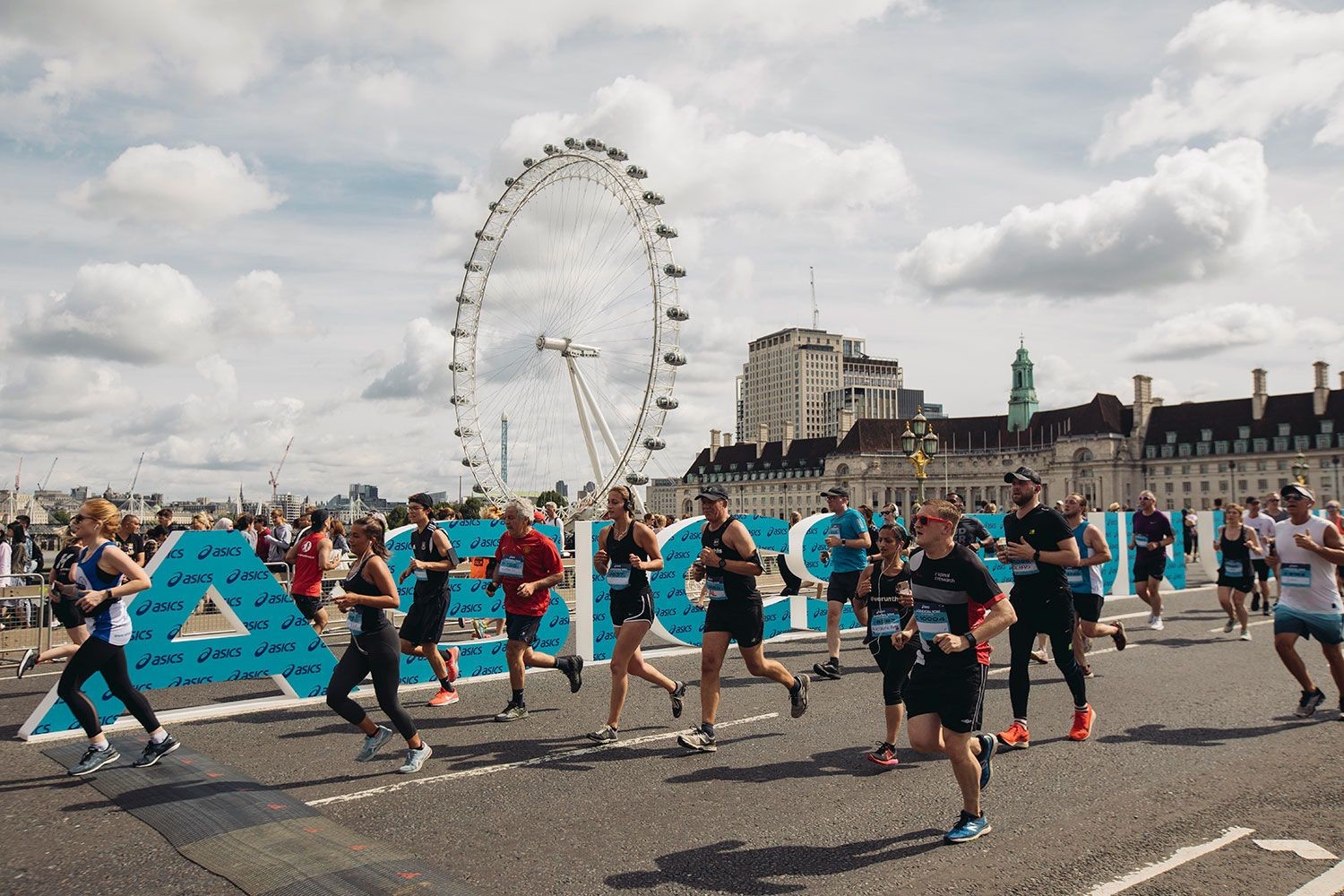
The race will begin in Piccadilly, taking in famous Westminster locations like St James’s Palace, Trafalgar Square, the Victoria Embankment and Big Ben, before finishing in Whitehall, with live bands and DJs en route.The ASICS London 10K will return to London on Sunday, July 25 this year, in what organisers say is the largest closed road running event since the pandemic began in March 2020.
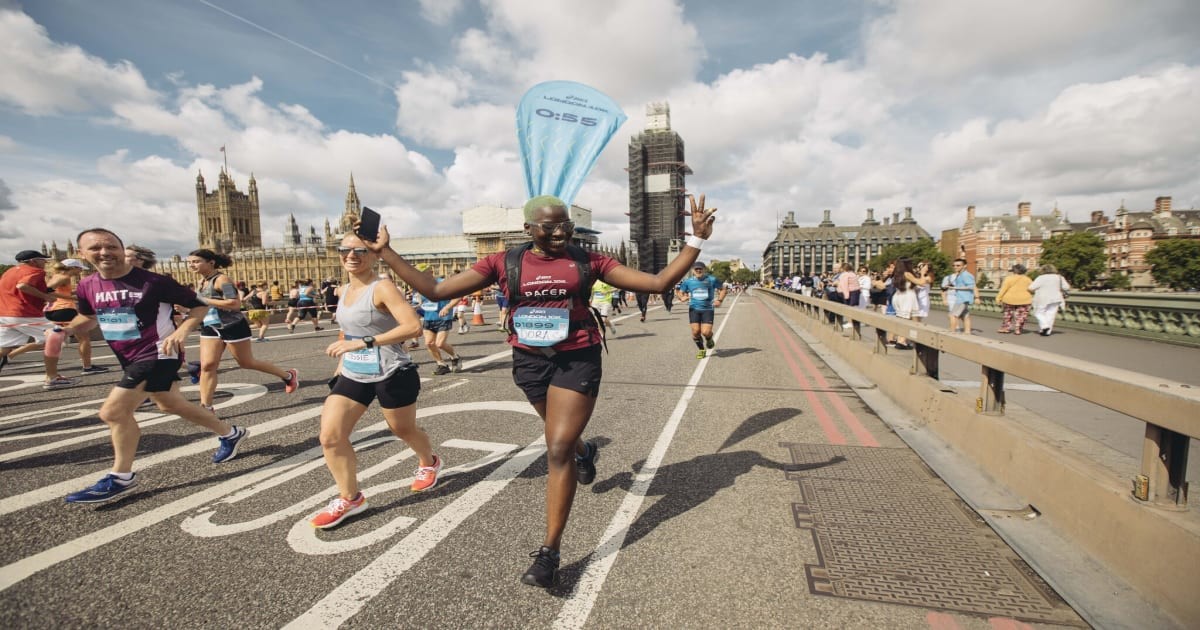
14,000 registered runners will be able to take part in the event, which is also part of a global study into the effect of movement and running on wellbeing.
The race will begin in Piccadilly, taking in famous Westminster locations like St James’s Palace, Trafalgar Square, the Victoria Embankment and Big Ben, before finishing in Whitehall, with live bands and DJs en route.
James Robinson, Managing Director of Limelight Sports Club, which is producing the event, said: ‘It’s been a challenging 16 months, but community and running has played such an integral role with regards to people’s mental and physical health. We can’t wait to see runners back on the start line of the ASICS London 10K on 25th July.’
Everyone taking part in the ASICS London 10K will be invited to take part in a study into the effect of movement on mental wellbeing via the Mind Uplifter, a tool developed by ASICS, movement and mental health expert Dr Brendon Stubbs and technology agency Solarflare Studio. Using facial scanning technology and data collection from athletes themselves, ASICS says the tool can ‘capture the impact of different sports across 10 emotional and cognitive metrics, showing how they impact mood and brain function.’
ASICS recently launched its State of Mind Index, a survey which asked more than 6,000 people across 40 English counties to rate their mental state. The Index, produced in partnership with mental health charity Mind, revealed that London’s current mood is a rather low 59 out of 100, with 76% of respondents admitting to wanting an ‘uplift’.
Dr Stubbs, who lectures at King’s College London, said of the State of Mind Index: ‘At a time where we are turning a corner with a more positive outlook, the nation is still currently apprehensive, and this is reflected in our general mental wellbeing. The nation is clearly in need of an uplift and the summer of sport ahead has the power to give us all the boost we need.’
With tens of thousands of runners due to take part in the race, ASICS has put a number of measures in place to prevent the spread of Covid-19. These include a requirement to complete a health declaration before the event, proof of a negative lateral flow test, allocated arrival times, and an extended open period for the race start line.
(07/16/2021) ⚡AMPby Jacob Moreton
Asics London 10K
When we run together, amazing things happen. We unite in a common aim, we spur each other on, the stuff that divides us falls away and we keep on going. So, this summer we invite runners of all abilities to unite in one of the world's most inclusive and diverse cities to celebrate the things that bringus together. When you...
more...Britain is sending its Âbiggest team to compete in a foreign ÂOlympics, with more women than men for the first time ever
Four of those female athletes will be looking to win gold at three separate games in a row, which has never been achieved by UK women stars.
There will be 201 female athletes and 175 men in Team GB, with another 22 reserves ready to go across 26 sports when the games open next Friday.

It is the first time in the event’s 125-year history that the balance has shifted in the favour of women.
Cyclist Laura Kenny, taekwondo star Jade Jones, rower Helen Glover and equestrian Charlotte Dujardin, are all in line to take home a hat-trick of gongs in Tokyo after winning at London and Rio.

Glover will be the first British rower to compete after becoming a mum, while Kenny – who has also had a baby since Rio – is the UK’s most successful female athlete ever with four golds.
Team GB’s youngest star is skateboarder Sky Brown, who turned 13 on July 12. And at 54, dressage star Carl Hester will be the oldest.
If Hannah Mills scoops a medal in Tokyo, it will make her the most successful female Olympic sailor of all time, after landing silver at London 2012 and gold at Rio 2016.
Proud Team GB chiefs have declared 2021 the “year of the female Olympian”.
They will be hard-pushed to emulate the 67 medals in Rio. But after a grim 18 months of Covid and the disappointment of the Euro 2020 final, any haul will be a huge boost for the UK.
(07/16/2021) ⚡AMPby Jeremy Armstrong
Tokyo 2020 Olympic Games
Fifty-six years after having organized the Olympic Games, the Japanese capital will be hosting a Summer edition for the second time, originally scheduled from July 24 to August 9, 2020, the games were postponed due to coronavirus outbreak, the postponed Tokyo Olympics will be held from July 23 to August 8 in 2021, according to the International Olympic Committee decision. ...
more...Portland Marathon returns October 3
The Portland Marathon is set for October 3 with no foreseen COVID restrictions.
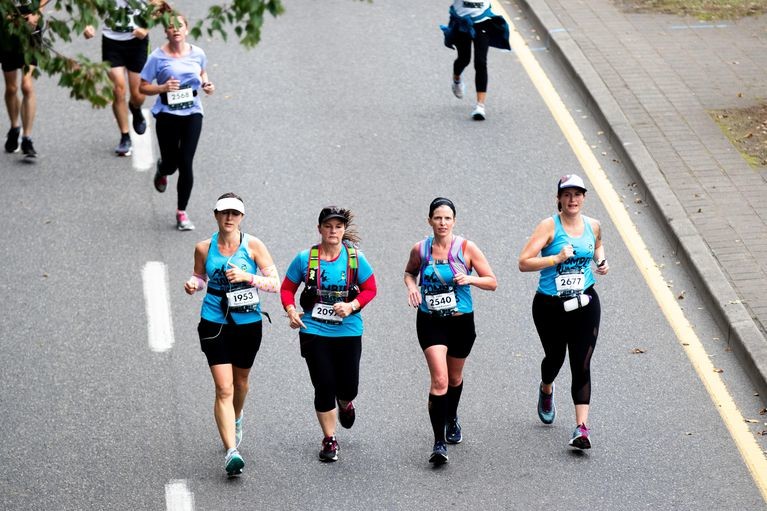
The marathon’s organizers said the race can happen restriction-free after Gov. Brown lifted all COVID-19 restrictions last month.
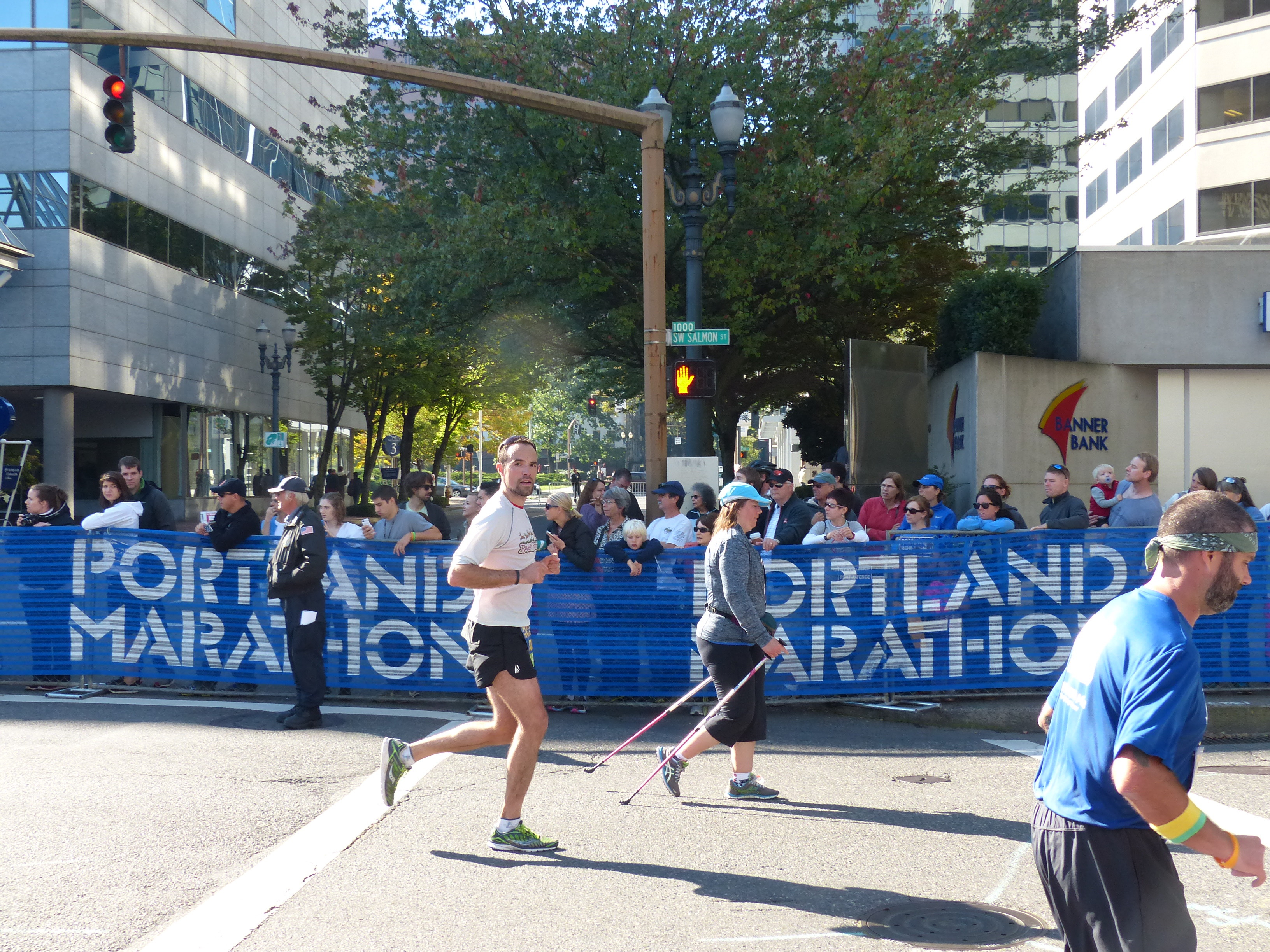
This will be the 49th annual Portland Marathon. The 2020 marathon was canceled due to the pandemic.
This year’s marathon is presented by OHSU Health. Racers can either do the full marathon, 26.2 miles, or a half marathon, 13.1 miles.
(07/16/2021) ⚡AMPby Kohr Harlan
Portland Marathon
Portland is the unrivaled leader of the running world. It is the birthplace of the American distance running movement. It is home to several of the world's largest brands in the active lifestyle industry as well as the most talented athletes in the sport. People get running here. Businesses, schools, non-profits, and kids get excited about it. Add that local...
more...Will Ethiopian-born Dutch distance star Sifan Hassan make history at Tokyo Olympics 2020?
Sifan Hassan is an Ethiopian-born Dutch female long-distance runner. Her plans to compete in 1,500m, 5,000m and 10,000m track races at the Tokyo Olympic Games have created buzz in the running world.
If she is successful in winning gold medals in all three races, it will be unprecedented in the history of Track and Field at the Olympics. No female distance runner has won more gold medals in the 1,500m, 5,000m and 10,000m track races at the same Olympic Games.
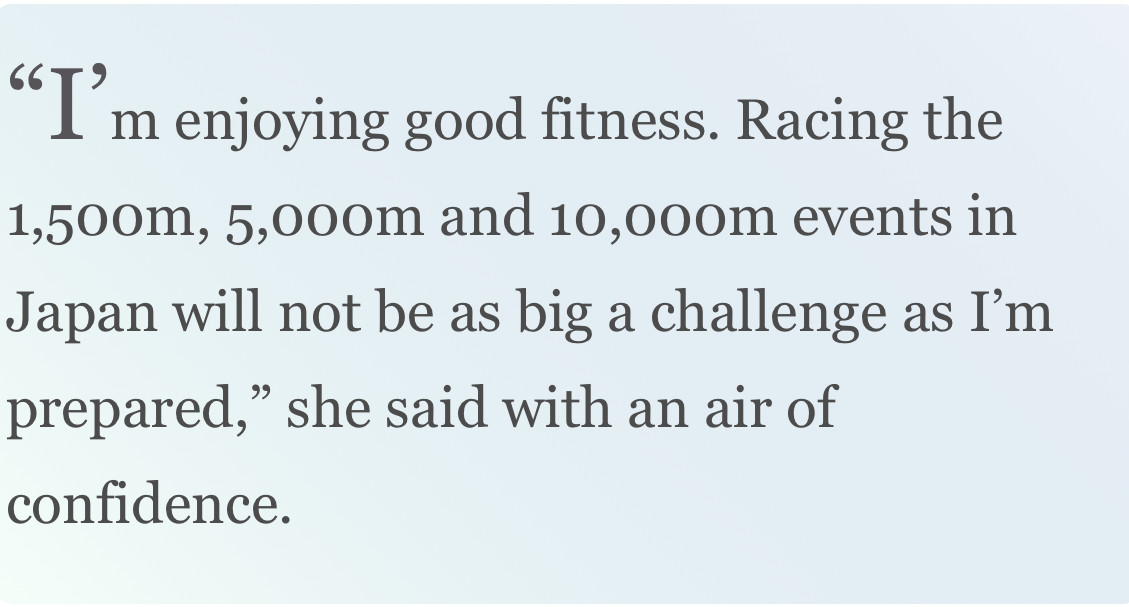
Athletes in the past have attempted the 5,000m and 10,000m double at the Olympics, but the 28-year-old has added a 1,500m event to her menu that is being intensely debated.
At the 2019 Doha World Championships, she made history by winning gold medals in the 1,500m and 10,000m, to become the first female runner to do so.
Why is it tougher to set records in the Olympics
There is a major difference in competing at the Olympics and posting a fast time during one-day international competitions.
During lucrative one-day prize money events across the globe, race organizers have pacemakers to break records. However, elite athletes employ different tactics to win medals at major championships including Olympics.
Therefore, timings are faster in one-day competitions rather than at the Olympics as the main aim is to win medals and not break records.
Since races at the Olympics are sometimes slow in comparison to one-day meetings, the tactical battle could be an advantage for Sifan as she has both the speed and endurance.
At the Tokyo Olympics, the women’s 5,000m preliminary round is scheduled for the evening session on July 30 while the women’s 1,500m heats are slated for a morning session on August 2.
There is enough time between the 5,000m and 1,500m heat for Sifan to recover.
But it could be punishing for the Dutch distance runner as the event progresses. After the 1,500m heat in the morning session, she will be racing the women's 5,000m final in the evening session on August 2.
Sifan's next race, the women’s 1,500m semis will be on August 4. The final is on August 6.
After a good race on August 6 will she recover to compete in the women’s 10,000m final on August 7?
Having shown her prowess over distances ranging from 1,500m to half marathon, Sifan would be one to watch at the Tokyo Olympics.
In the first week of June, Sifan smashed the women’s 10,000m five years old world record in Hengelo, the Netherlands. She clocked 29 minutes 06.82 seconds to better Ethiopia’s Almaz Ayana’s record of 29 minutes 17.45 seconds set at the 2016 Rio Olympics.
Last week (July 9) at the Monaco Diamond League, Sifan clocked 3 minutes 53.60 seconds to finish second behind arch rival Faith Kipyegon of Kenya, whose winning time was 3 minutes 51.07 seconds.
The inspiring story of Sifan Hassan
As a teenager, Sifan had to flee Ethiopia. She was barely 15 and reached the Netherlands as a refugee in 2008. She began running and enrolled herself in a nursing course. She gained Dutch citizenship in 2013.
According to Sifan, the nursing course took a backseat as she became a professional athlete. She will compete in Japan for her adopted country.

by N Singh
Tokyo 2020 Olympic Games
Fifty-six years after having organized the Olympic Games, the Japanese capital will be hosting a Summer edition for the second time, originally scheduled from July 24 to August 9, 2020, the games were postponed due to coronavirus outbreak, the postponed Tokyo Olympics will be held from July 23 to August 8 in 2021, according to the International Olympic Committee decision. ...
more...Here are Reasons why the women's 100m will light up Olympics
Sprint events are one of the highlights at any Olympics.
Tokyo 2020 will be no different, but this year the women's 100m stands out as one of the most hotly-anticipated race of the Games.
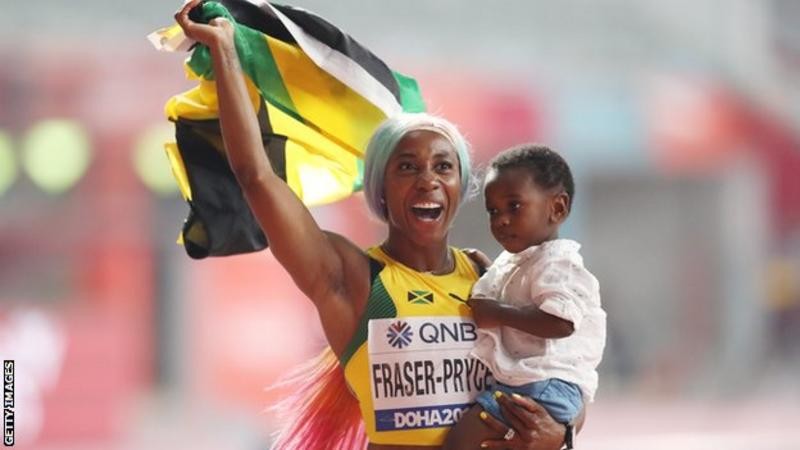
Here are the reasons why the sprint queens will light up Japan's capital and provide one of the standout events of the summer.
From a British perspective, BBC athletics commentator Steve Cram says "we've got a real contender" in Dina Asher-Smith.
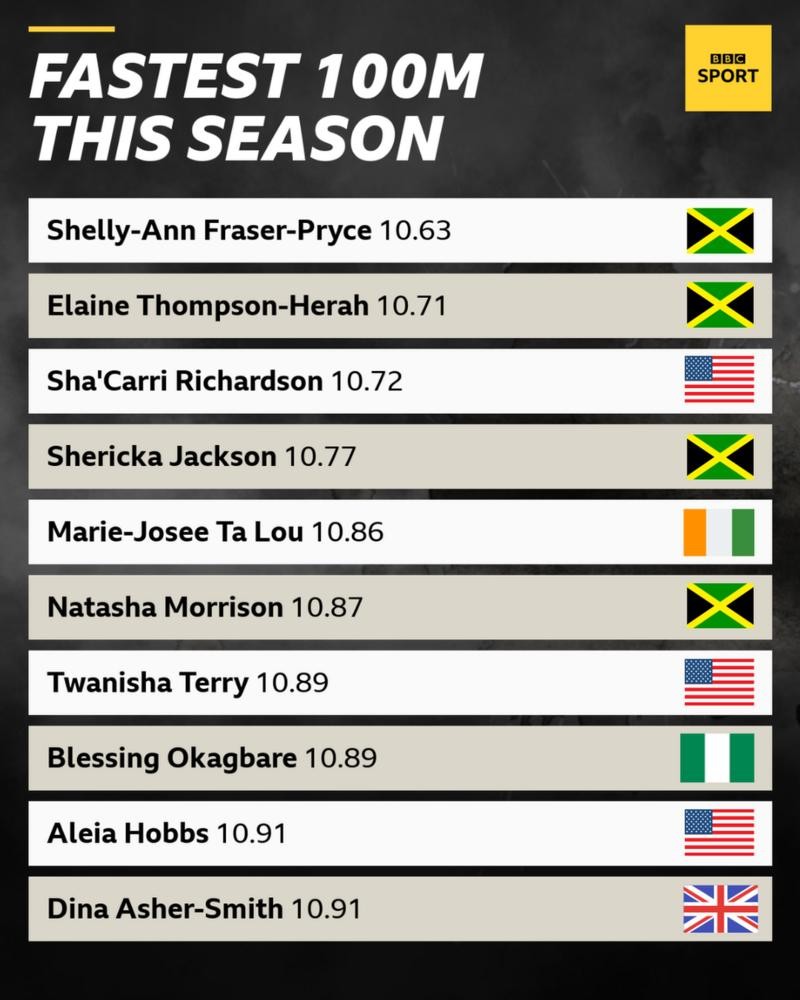
"We haven't always had somebody with a chance of if not winning it, certainly winning a medal," said Cram. "Dina knows that she's going to have to be at her best, but she's in my top three."
GB have not had a woman in an Olympic 100m final since 2008. Jeanette Kwakye, who finished sixth in Beijing, is confident the fastest British woman of all time can win a medal.
"We know, as a 200m world champion, what Dina is capable of, but she's also exciting as a 100m runner. She is going to have to be at her absolute best to challenge for medals," she said.
"What we love about Dina and why we are so confident about her medal chances is that she's a championship performer and a competitor and she knows how to do it."
"We all know Shelly-Ann Fraser-Pryce, we all know Elaine Thompson. Dina is becoming a big name," said the 1984 1,500m Olympic silver medallist.
"On the men's side it is an open race. Anyone who makes the men's 100m final can probably genuinely line up and think .. 'I could maybe win a medal here'. That's nice in some respects but in terms of bringing attention to the event, it's not Bolt and it's not (Justin) Gatlin or even (Yohan) Blake.
"It's missing some of the characters we've got to know over the last 10 years. The women though have got the characters, they've got the well-known people."
Even better, the top contenders are all in the shape of their lives, says former British 100m champion Kwakye."We all know Shelly-Ann Fraser-Pryce, we all know Elaine Thompson. Dina is becoming a big name," said the 1984 1,500m Olympic silver medallist.
"On the men's side it is an open race. Anyone who makes the men's 100m final can probably genuinely line up and think .. 'I could maybe win a medal here'. That's nice in some respects but in terms of bringing attention to the event, it's not Bolt and it's not (Justin) Gatlin or even (Yohan) Blake.
"It's missing some of the characters we've got to know over the last 10 years. The women though have got the characters, they've got the well-known people."
Even better, the top contenders are all in the shape of their lives, says former British 100m champion Kwakye.
(07/16/2021) ⚡AMPby Ellie Thomason
Tokyo 2020 Olympic Games
Fifty-six years after having organized the Olympic Games, the Japanese capital will be hosting a Summer edition for the second time, originally scheduled from July 24 to August 9, 2020, the games were postponed due to coronavirus outbreak, the postponed Tokyo Olympics will be held from July 23 to August 8 in 2021, according to the International Olympic Committee decision. ...
more...London Marathon new date confirmed
The London Marathon has been given the green light to go ahead and it’s been confirmed that the famous run will take place on October 3 in a route across the city.
A record 50,000 people are expected to run the 26.2 mile route after coronavirus has led to postponements.
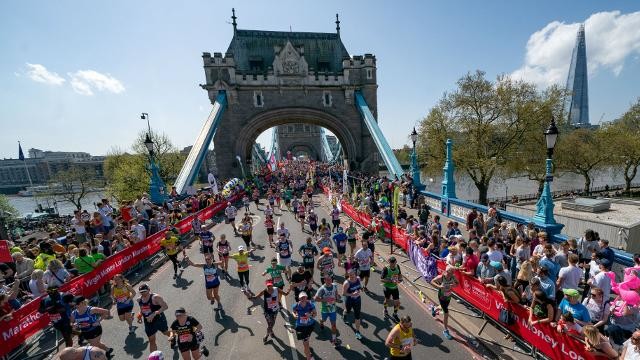
Organizers of mass participation running events have welcomed the news after the government confirmed England would move to Step 4 from July 19, allowing outdoor events to resume.
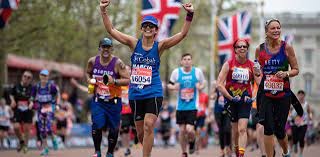
Last year’s Virgin Money London Marathon was postponed from April to October due to the pandemic, and then changed to a virtual event where most participants completed the distance from home.
Hugh Brasher, Event Director of London Marathon Events, said: “It is wonderful to confirm that our great mass participation events are returning across the country.
“The UK’s event organisers have worked together to ensure the safe return of mass participation sports events outdoors by participating in the government’s Events Research Programme and collaborating on a range of protocols that ensure our events will be safe and Covid-secure.”
A total of 37,966 finished the virtual event in 2020 giving it an official Guinness World Records title for the “most users to run a remote marathon in 24 hours”.
(07/16/2021) ⚡AMPby Isabella D'Emilio
TCS London Marathon
The London Marathon was first run on March 29, 1981 and has been held in the spring of every year since 2010. It is sponsored by Virgin Money and was founded by the former Olympic champion and journalist Chris Brasher and Welsh athlete John Disley. It is organized by Hugh Brasher (son of Chris) as Race Director and Nick Bitel...
more...World 1500m champion added to Kenyan Olympic team as 18-year-old dropped
World 1500 meters champion Timothy Cheruiyot, left out of the Kenyan Olympic team after finishing outside the top three qualifying places at last month’s trials, has been added to the squad for Tokyo 2020.
Cheruiyot, pictured limping away from the trials with a hamstring injury, won the Wanda Diamond League meeting in Monaco last Friday (July 9) in a personal best of 3min 28.28sec, the fastest time run since 2015 and seventh best ever.
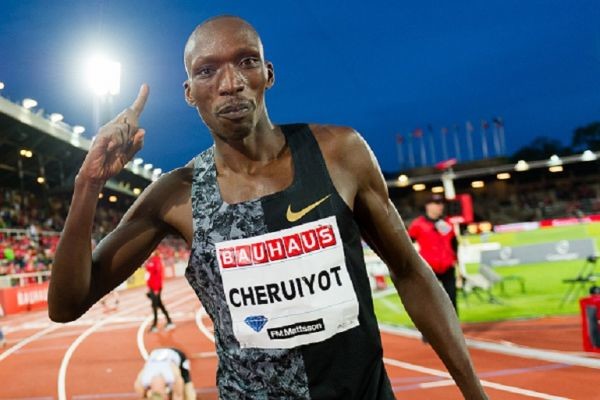
The 25-year-old from Bomet expressed hopes after his win that he would be able try to add the Olympic gold medal to his world title and he is now due to do that against a field that will include his perennial 20-year-old Norwegian rival Jakob Ingebrigtsen, European record holder with 3:28.68.
"I am thrilled to be part of the Kenyan Olympic team," Cheruiyot, now the favourite for gold, told Agence-France Presse.
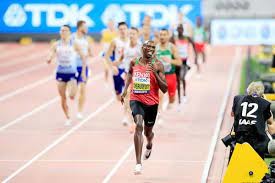
"I am in better shape than I was during the trials and I promise to deliver a medal for Kenya in Tokyo."
Cheruiyot’s addition has been made possible by the ineligibility of the relatively unknown 18-year-old who finished second at the trials, Kamar Etyang.
He has had to be removed from the team because he does not have the minimum number of three out-of-competition tests that Kenyan athletes must fulfil in the 10 months before any major championship following the country’s placement in category A of the World Athletics and World Anti-Doping Agency watchlist.
Kenya's Olympics general team manager Barnaba Korir told The Nation that Athletics Kenya had petitioned the Athletics Integrity Unit (AIU) over the issue of Etyang without success.
"It’s really unfortunate that Etyang had to be dropped due to the AIU rules which require one to be tested three times out of competition," Korir said.
"We have explained this to the athlete and he has understood the situation we are in."
He added that the AIU were unable to make exceptions to the ruling.
"We were in the same situation in 2019 when two athletes Michael Kibet and Daniel Simiu were dropped from the team that was heading to the World Championships [in Doha]," Korir said.
"This is because Kenya is in category A and we need to strictly follow the rules so that we can get out of the woods in future."
Cheruiyot had made it clear after his Monaco victory that he was hopeful of being in the team for Tokyo 2020.
"I missed competition a lot after spending a lot of time in Kenya where I had a few issues like my hamstring injury and after also losing a relative in my family on the day of the Kenyan trials explaining why I missed out on making the team," he said.
"I am therefore happy I am back again after all this.
"Hopefully that will be the deciding performance to make the team for Tokyo.
"My hope now is to be in another Olympics, that is where my mindset is and I will be very happy if I achieve that."
Ingebrigtsen, reportedly unable to train for the preceding fortnight because of a bacterial infection, finished second, with Spain’s Mohamed Katir setting a national record of 3:28.76 in second place.
Three other athletes originally named for the Kenyan team for Tokyo have been dropped - racewalkers Samuel Gathimba and Emily Ngii and 400m hurdler Moitalel Mpoke.
Kenya will send 40 athletes, mainly runners, to Tokyo 2020, which are due to open on July 23 with the athletics programme running from July 30 to August 8.
(07/15/2021) ⚡AMP
by Mike Rowbottom
Tokyo 2020 Olympic Games
Fifty-six years after having organized the Olympic Games, the Japanese capital will be hosting a Summer edition for the second time, originally scheduled from July 24 to August 9, 2020, the games were postponed due to coronavirus outbreak, the postponed Tokyo Olympics will be held from July 23 to August 8 in 2021, according to the International Olympic Committee decision. ...
more...The Nairobi Marathon is to return on October 31 after a two-year absence due to the COVID-19 pandemic
The race is sponsored by Standard Chartered Bank and has been held annually since 2003 - with the exception of 2020.
This year’s physical event will only be open to 2,500 elite runners only, with a remote alternative available for other participants.
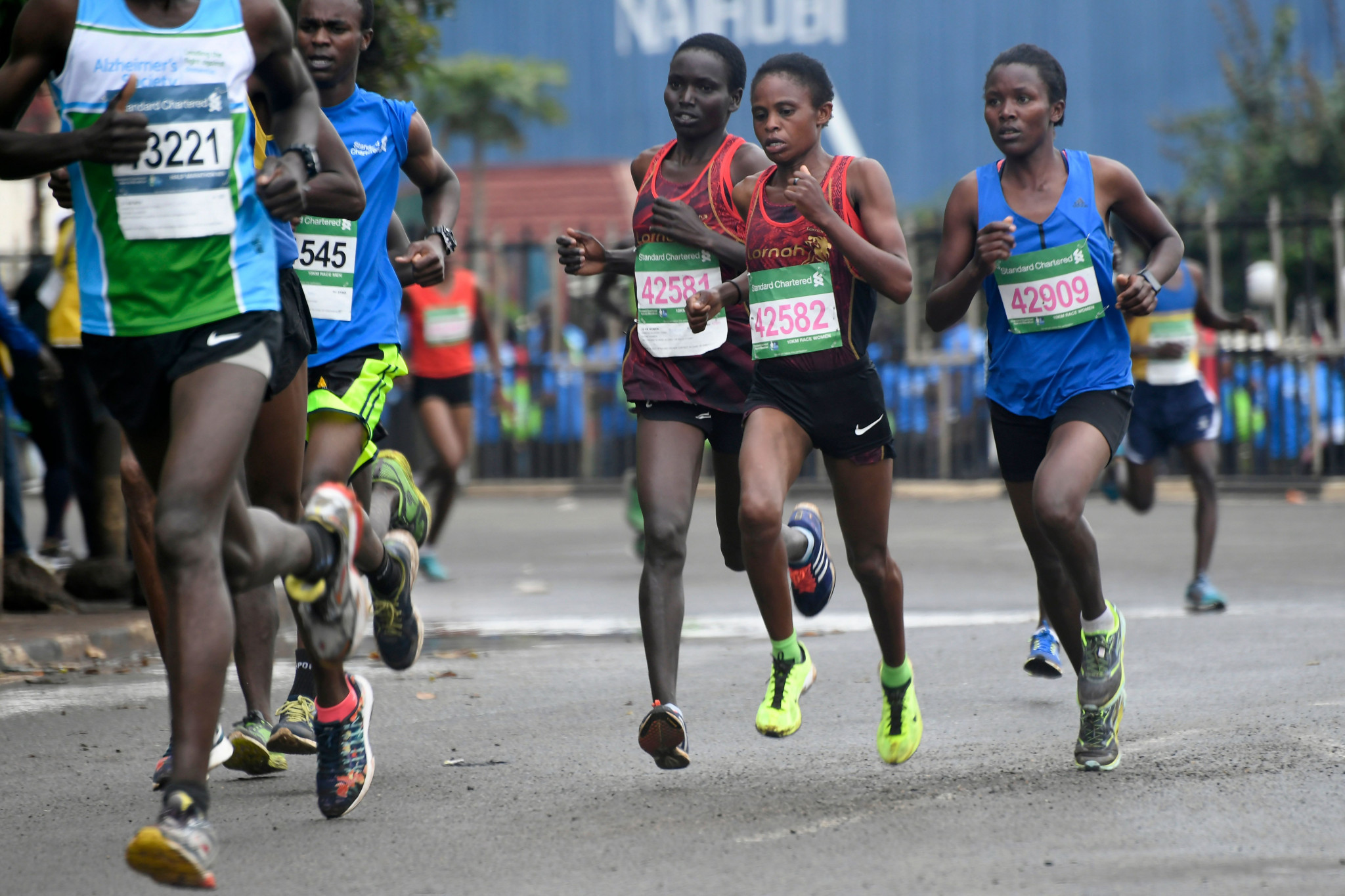
Relay races over 10 kilometres, 21 km and 42km will also be held.
The marathon course will set up on Nairobi’s Southern Bypass, starting and finishing at the Carnivore Gardens and taking in views of Nairobi National Park.
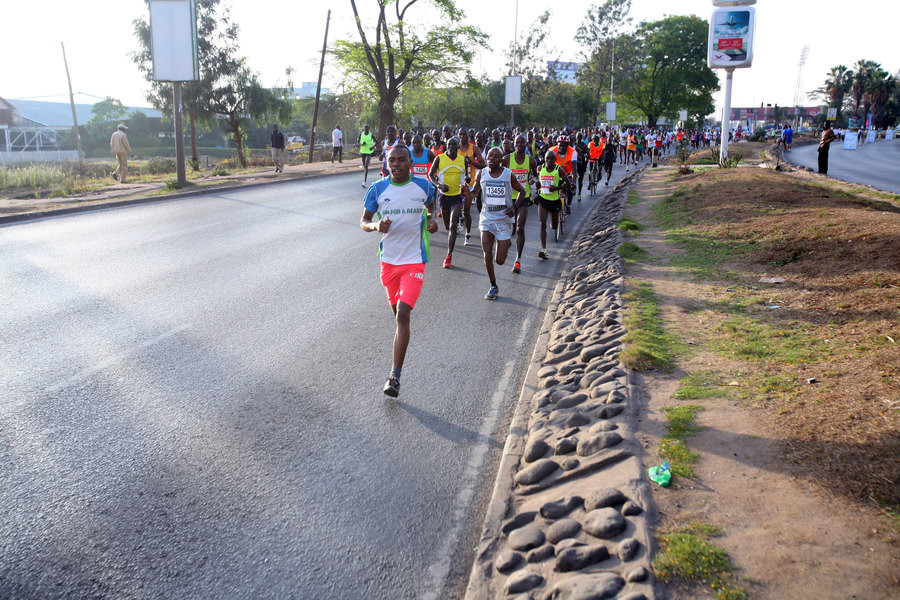
To be invited to the physical marathon, men need to have recorded a time of 2 hours 20min 0sec of better in 2019, while the cut-off time for women will be 2:30:00.
Kenyan athletes will be selected based on Athletics Kenya’s database, training camps and previous marathons in the country.
Athletics Kenya will communicate with other national bodies to determine eligible international athletes.
A series of warm-up races are also scheduled to enable athletes to practice with their fellow runners, trainers and coaches.
The virtual event will run from October 25 to 31, and it is hoped that 13,500 runners will take part.
Participants can choose one of five challenges on the Strava app, 5km or any of the physical race distances.
Times for the virtual event will be recorded through Strava, and runners who complete their challenge will receive a reward.
These prizes include Strava virtual badges, a premium subscription to the app for a year, places at physical warm-up races, shopping vouchers and Liverpool FC merchandise.
As reported by Capital Sports, chief executive of Standard Chartered Kariuki Ngari said during the launch of the events: "Upon cancellation of the marathon last year, we took time to engage with a couple of stakeholders and gained some useful insights for future marathons.
"One of the key things that came up was the adoption of virtual marathons and the emergence of virtual running communities across the world. This has been reflected in our hybrid marathon this year which will allow for virtual participation. We have also considered key issues such as safety and have consequently set up measures to ensure Covid safety protocols are observed during the marathon.
"Last year, a number of elite runners were affected due to the cancellation and we stepped up to offer financial and educational support through the KipKeino Foundation. We look forward to seeing many of them participate in this year's marathon and we will keep working towards ensuring our athletes are well equipped to perform well."
Brimin Kipkorir won the men’s Nairobi Marathon the last time it was held in 2019 with a time of 2:10:43, while Purity Jebichii triumphed in the women’s race in 2:30:34.
(07/15/2021) ⚡AMPby Patrick Burke
NAIROBI MARATHON
Nairobi Marathon is an annual road running competition over the marathon distance held in October in Nairobi, Kenya. First held in 2003, the competition expanded and now includes a half marathon race along with the main race. It was part of "The Greatest Race on Earth", fully sponsored by Standard Chartered Bank....
more...US marathoner Aliphine Tuliamuk infant daughter will be able to join her in Tokyo for the Olympics
U.S. long-distance runner Aliphine Tuliamuk announced Tuesday that her infant daughter was granted a visa and will be allowed to travel with her to Tokyo for the Olympics.
"The last 6 months with you baby Zoe have been the best ones of our lives, your dad and I are so blessed to get to watch you grow and teach you everything we know about this world," Tuliamuk wrote on Instagram. "And now we are beyond excited that you get to come to Japan and cheer on your mama as she goes after her biggest running goals, ZOE’s VISA ARRIVED TODAY!"
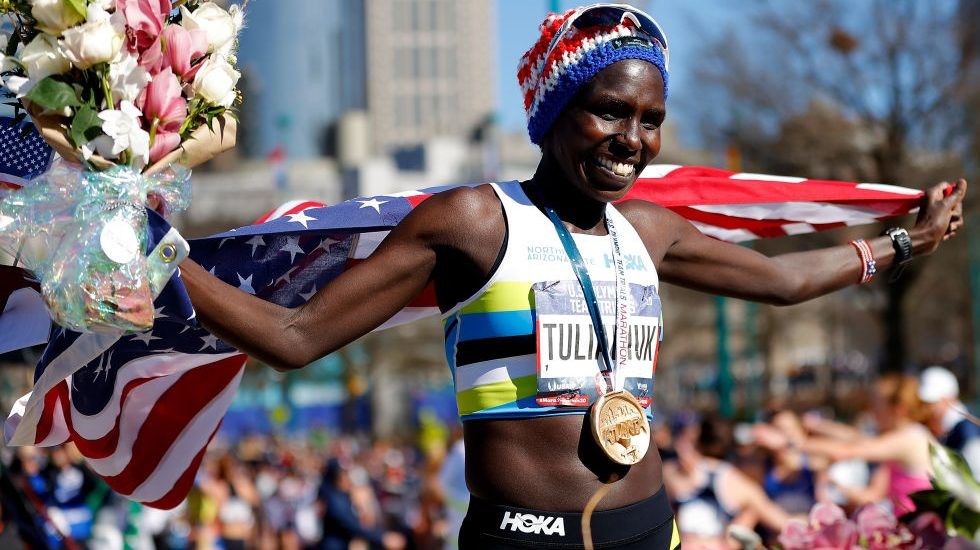
Her elation comes after the IOC's decision to allow Olympians to bring their infants who are still breastfeeding. Originally, all foreign spectators, including family members, were banned from the Olympics due to concerns over COVID-19 in Japan, but the decision was changed in June.
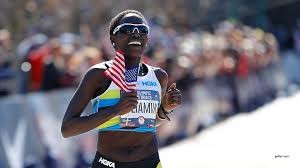
Tuliamuk, 32, won the 2020 Olympic marathon trials and is set to compete in Sapporo (where the marathon will be for the Summer Games) on Aug. 7.
Tuliamuk and several other Olympians who are mothers told The Washington Post in May that they were extremely concerned at the thought of having to make a choice between the Olympics and their children. This thought was especially scary for Tuliamuk, who may have the youngest child of all the U.S. Olympians.
“If I’m going to perform my best, she’s going to have to be there with me—and I hope she will be," Tuliamuk said. "I am still nursing Zoe and cannot imagine her not being with me."
Thankfully, she will not have to make that decision.
Aliphine Chepkerker Tuliamuk is a Kenyan-born American long distance runner. She placed first at the Women's 2020 Olympic Marathon trials in Atlanta, GA on February 29, 2020 with a time of 2:27:23 and will be representing the United States at the 2021 Olympic Games in Tokyo, Japan. She won $80,000.
(07/15/2021) ⚡AMPby Joseph Salvador
Tokyo 2020 Olympic Games
Fifty-six years after having organized the Olympic Games, the Japanese capital will be hosting a Summer edition for the second time, originally scheduled from July 24 to August 9, 2020, the games were postponed due to coronavirus outbreak, the postponed Tokyo Olympics will be held from July 23 to August 8 in 2021, according to the International Olympic Committee decision. ...
more...What Runners Need To Know About Intuitive Eating
Intuitive eating has been found to be associated with a plethora of positive health benefits. Here's how to combine mind-based knowledge and body-based knowledge to make it work for you as a runner.
Intuitive Eating is trending right now. If you are unsure of what this way of eating is all about, it essentially encompasses getting back to how we innately learned to eat (connecting the mind and body) before there were any rules around our food and food choices. The founders, dietitians Evelyn Tribole and Elyse Resch, define intuitive eating as “a self-care eating framework, which integrates instinct, emotion, and rational thought.”
What Are the Benefits of Intuitive Eating?
While Intuitive Eating may seem like a recent concept, it has been around since 1995. And it is a model that has been validated by sufficient research. In fact, over 90 studies to date (this number is steadily increasing as people want to study it more) have been published on intuitive eating and its 10 principles. Much of this research links intuitive eating to positive benefits, such as greater life satisfaction, positive emotional functioning, greater body appreciation and satisfaction, and a greater motivation to exercise when focus is on enjoyment rather than guilt. Heath measures can improve, too, as research points to improved blood pressure, blood lipids and dietary intake.

Intuitive eating is also inversely associated with disordered eating traits and habits, something that has become relevant in the running community. A 2016 study funded by the National Collegiate Athletic Association Sport Science Institute found that intuitive eating practices among retired female athletes helped them to feel liberated in their eating, and for some, alleviated disordered eating practices they previously experienced.
In principle, intuitive eating challenges these rigid principles and all-or-nothing thinking. It is not a diet or food plan, and there is no counting calories, carbs, points or macros involved. Instead, intuitive eating takes away the rules that we see as “normal,” since we have been following them for so long. It is a journey of self-discovery, helping you learn to connect the needs of your body and mind and eat for pleasure and enjoyment (and health, too).
All of this may sound interesting and enticing, but how does it relate to you as a runner?
Intuitive eating and sports nutrition can absolutely work together if there is a fundamental understanding of the two. Here are some key points for understanding how the principles of intuitive eating can apply to running situations.
Feel What Hunger Feels Like

A large framework of intuitive eating is to learn to honor and acknowledge your hunger and fullness. While this may sound fundamental in theory, if you’ve been following subjective rules for long periods of times, hunger cues may be blunted or non-existent. Hunger can manifest in ways other than a growling stomach. For example, learning to link other symptoms, such as headaches, fatigue, lack of concentration, and thinking about food to hunger can be a powerful reminder to eat.
Runners and endurance athletes need to eat more than the regular population (including more carbohydrates and protein), so learning to tune in to these hunger signals from the body can be an important part of adequate fueling for training.
However, You May Also Need to Eat When You’re Not Hungry
Learning to tune in to your hunger and fullness are big parts of intuitive eating, but they aren’t the only parts. Only eating when you are hungry and stopping when you feel full can quickly turn into the hunger-fullness diet.
Intuitive eating acknowledges that there may be instances where we need to eat when we don’t feel hungry, such as after a hard workout or long run. It is quite normal for appetite to be blunted when adrenaline and hormones are high post workout, however, that is not an instance where “listening to our bodies” best serves us.
The window after a run or workout is important for recovery and muscle replenishment to fuel future workouts. This is the rational part of intuitive eating that requires us to override body knowledge, sometimes. In these instances, sipping on a smoothie or protein shake, or even eating something small, is better than nothing and may jumpstart appetite. Even if your body doesn’t “feel” hungry, your mind logically knows that you need to refuel after a workout to stay adequately nourished, keep energy stable, prevent blood sugar dips and keep glycogen replenished for future activity.
Respect Your Body
There is currently more awareness on topics of body image in athletes and how negative body image in the sport is tied to eating disorders and disordered eating. Rather than encouraging comparison or trying to fit into a “standard mold,” intuitive eating takes your genetics and body diversity into account.
We’re not all meant to look the same, and we won’t all be the same shape, height or weight. Just as there are inherent differences in a mastiff and a chihuahua, our body size and shape will vary too. Respect your body for what it can do for you. Can your strong legs enable a push in the final leg of a 5k? Can the extra fat in your midsection help store extra energy to keep you fueled for the longer parts of a marathon?
The important takeaway from this principle is that your worth is not tied to your size, and your size is not directly linked to performance.
Move to Feel the Difference
There is likely something about running that has drawn us into the repetitive motion of the sport – whether it’s exploring new forms of nature on foot, clearing the mind, or the soothing sound of sneakers hitting the pavement. Whatever it is, being clear on your reasons for running can be a grounding exercise in and of itself.
Focus on how it feels to run long or hard, rather than how many calories you’re burning or what foods you get to eat upon finishing.
How do you feel after a run – Energized? Strong? Empowered? Being clear on the benefits outside of size and weight can make running feel more attainable and enjoyable.
Gentle Nutrition (Self Care)
Gentle nutrition is saved for the last principle of intuitive eating because it is important to have the foundation of body-mind knowledge before applying this principle of incorporating nutrition knowledge.
Adequately fueling your body is an act of self-care. Eating foods you like and enjoy is also an act of self-care. There can be a flexible balance between giving yourself permission to enjoy the foods you like and eating nutrient-dense foods to support your training, as well as eating the right foods in and around your training.
For example, while you may really enjoy donuts, you know that they generally leave you feeling sluggish and hungry 30 minutes later. This is a good piece of cerebral knowledge to have. While you don’t have to give donuts up completely, you can use rational thinking drawing on previous experiences to substitute them with a higher-protein option to keep you fuller for longer or pair a donut with Greek yogurt for more satiety.
You could also choose to eat the donut after your workout, rather than before, to limit feeling sluggish or uncomfortable on your run. Neither of these instances view the donut as “bad” or feel the need to restrict it. Instead, acknowledge that the donut is just a food (food is inherently neutral, not good or bad) and can still fit into your lifestyle.
The Bottom Line
In short, intuitive eating is absolutely possible for anyone and everyone, including runners and athletes. Since it combines and connects body and mind knowledge, understanding the basic components of sports nutrition can help guide some of your innate signals to lead to a non-stressful and enjoyable experience with food.
Attempting to incorporate these principles on your own can be challenging and intimidating, but there are several Registered Dietitians who specialize in this work to help you improve your relationship with food, and performance! Another great resource for the intersection of sports nutrition and intuitive eating is The Runner’s Guide to Intuitive Eating.
(07/15/2021) ⚡AMPby Trail Runner Magazine (Sarah Schlichter)
Record-holding British medal Oliver Dustin hope could be banned from Tokyo 2020 Olympic Games after cocaine is found in in-competition sample
A top British runner who broke a record held by World Athletics boss and two-time Olympic champ Sebastian Coe last month has reportedly provided a drugs test sample containing small traces of cocaine, threatening his Tokyo place.
Briefly the holder of the world-leading outdoor 800m time for the year after breaking Coe's record for under-23s, Oliver Dustin booked his place on the British team for Tokyo 2020 with another impressive run in Manchester less than three weeks ago.
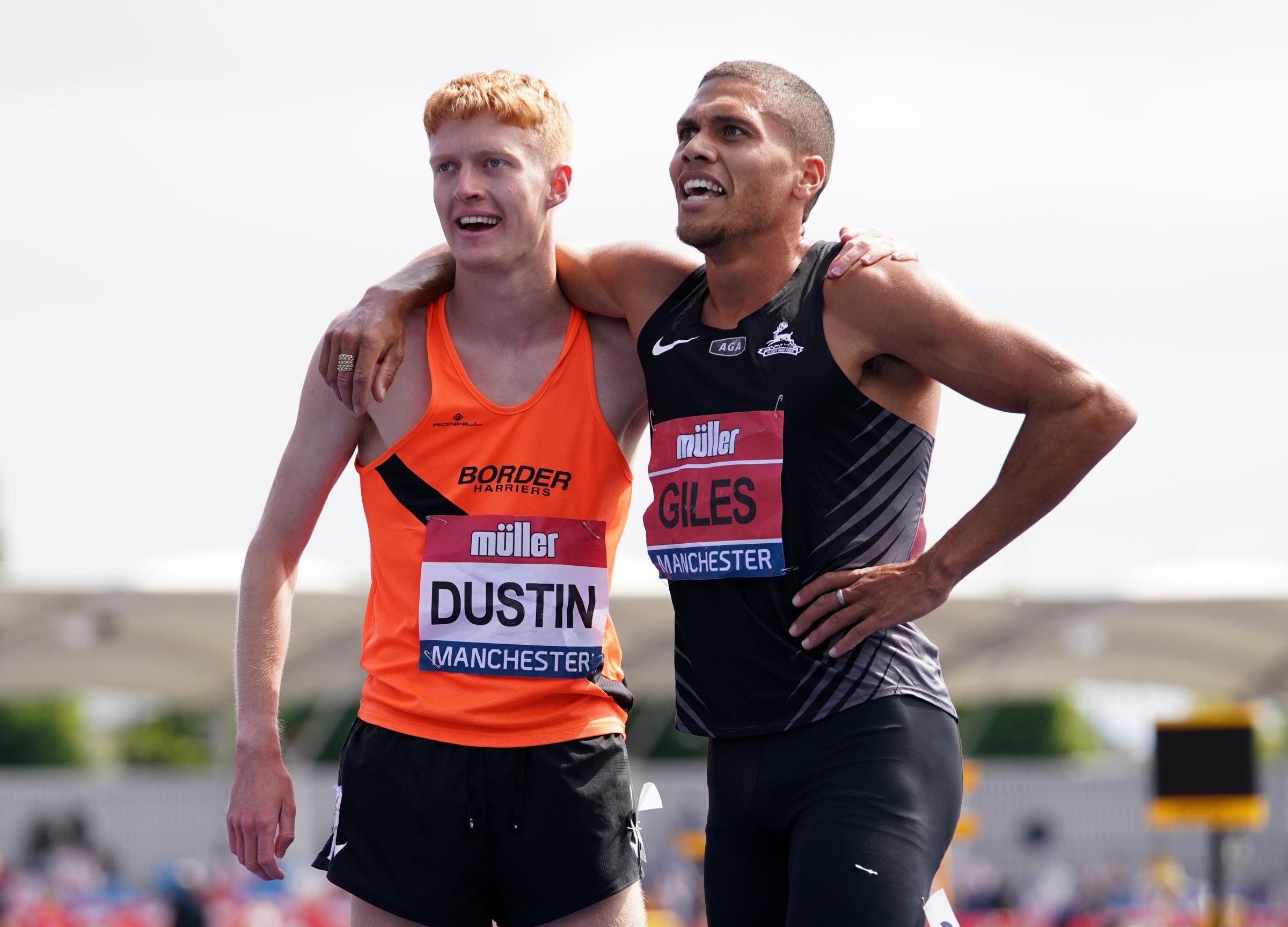
The 20-year-old has not raced since and has consulted lawyers after returning an adverse analytical finding for traces of a cocaine metabolite following an in-competition test in France, according to The Times.
French anti-doping authorities are said to be managing the matter, with a claim that the sample has been contaminated one of the options open to Dustin in what would be a long process, the report said.
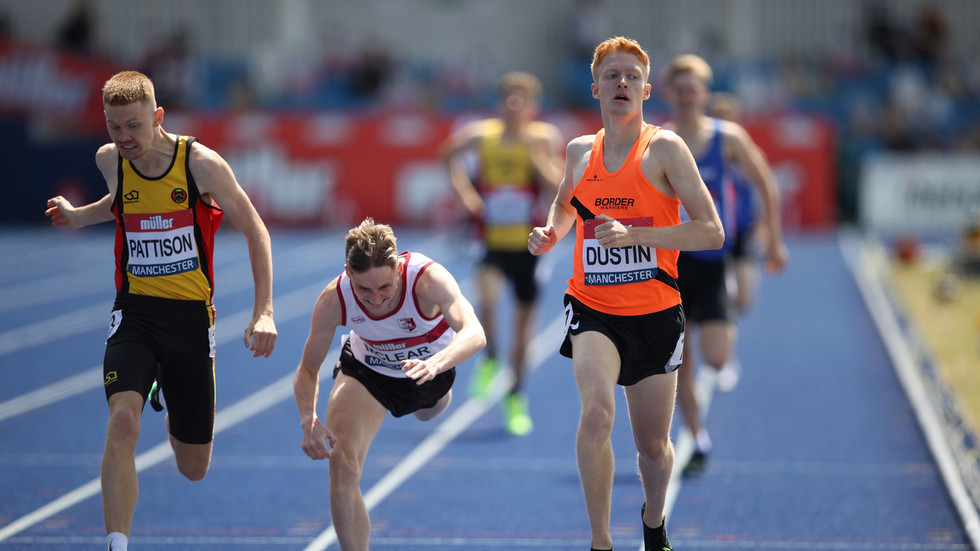
Dustin could still compete at the olympics at the Olympics if he accepts responsibility, can prove the cocaine was ingested out of competition and was then ordered to serve a one-month ban while agreeing to take an education course.
The latest World Anti-Doping Agency (WADA) rules say: “If the athlete can establish that any ingestion or use occurred out-of-competition and was unrelated to sport performance, then the period of ineligibility shall be three months' ineligibility.
“In addition, the period of ineligibility calculated... may be reduced to one month if the athlete or other person satisfactorily completes a Substance of Abuse treatment program approved by the Anti-Doping Organization with Results Management responsibility.”
America's top female sprinter, Sha’Carri Richardson, received a four-week ban earlier this month after testing positive for cannabis, keeping her out of the Olympics because her positive test emerged after she won her country's trials over 100m.
The Times said that UK Athletics had declined to comment, while Dustin’s agent, Stephen Haas, described the news of a positive test as “not factual at this point” and offered no further comment.
Writing after securing his place at the Olympics with a second-placed finish after a thriller in Manchester, the European Athletics U20 Championships gold medalist in 2019 told his thousands of social media followers: "See you in Tokyo.
(07/15/2021) ⚡AMPby Olympics
Union Home Mortgage Cleveland Marathon Announces Return to In-Person Health and Fitness Expo
The Union Home Mortgage Cleveland Marathon announced today that its Health and Fitness Expo will return in person to Cleveland this year.
The expo, presented by University Hospitals, will be held in Hall A of the Huntington Convention Center of Cleveland Oct. 22-23 and will precede the in-person race, which is scheduled for Oct. 23-24 downtown.
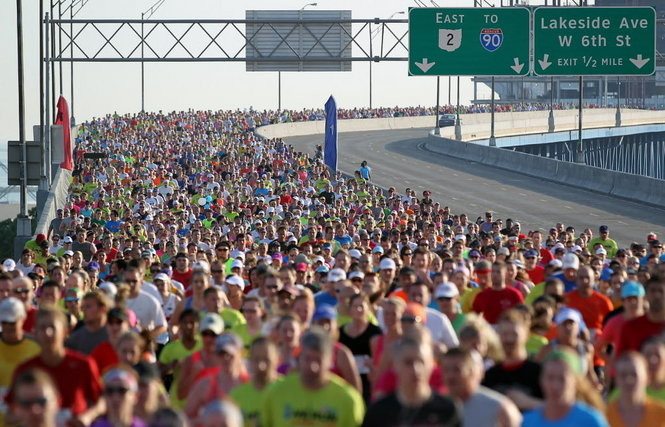
The two-day event is free and open to the public and will feature race information, sponsors, screenings, apparel and other vendors, and more. Hours are 12 to 7 p.m. on Friday, Oct. 22, and 9 a.m. to 6 p.m. on Saturday, Oct. 23. All runners must collect their race materials during these times and show a valid ID.
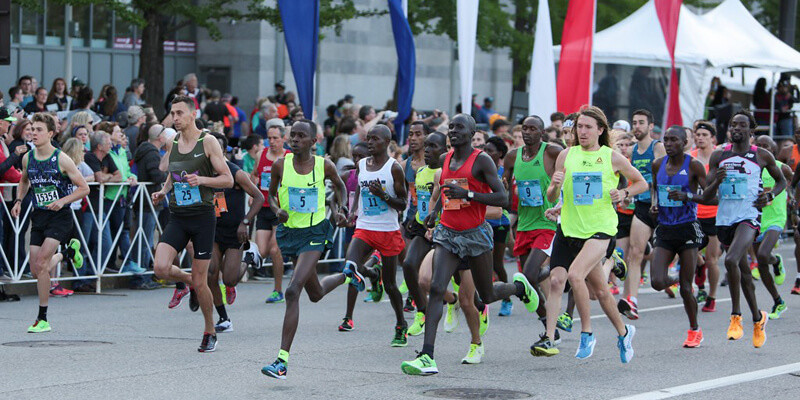
“We are excited to once again host an in-person expo,” said Ralph Staph, Union Home Mortgage Cleveland Marathon Race Director. “This is another step toward returning to normal, and we are proud to be partnering with University Hospitals to host the event. This is an opportunity for all participants and their friends and families to pick up race materials, shop and interact with national and local supporters of the race.”
“We have truly enjoyed the opportunity to partner with the Cleveland Marathon again and celebrate the accomplishments of all the runners. Our goal is to help the participants experience a safe, fun and fulfilling race,” said James Voos, MD, Chairman, Department of Orthopedic Surgery at University Hospitals, and Jack & Mary Herrick Distinguished Chair, Orthopedics and Sports Medicine. “We look forward to helping welcome thousands of runners and volunteers back downtown for this important part of marathon weekend.”
Businesses interested in reserving a booth space should contact the marathon office at info@clevelandmarathon.com. To learn more about the Union Home Mortgage Cleveland Marathon, please visit www.clevelandmarathon.com
(07/15/2021) ⚡AMPby Running USA
Cleveland Marathon
The Cleveland Marathon features a relatively flat and fast course, great volunteer support and a scenic view of downtown Cleveland and its major landmarks. The course has been designed for our athletes to enjoy views of Browns Stadium, the Rock and Roll Hall of Fame, Lake Erie and many other Cleveland highlights. The Cleveland Marathon began in 1978 in an...
more...Elite field for 125th Boston Marathon will include 13 former champions
The field for the 125th Boston Marathon will include 13 former champions with a combined 30 first-place Boston finishes, the Boston Athletic Association announced on Wednesday. The group competing on Oct. 11 includes World Athletics Marathon champions, Paralympic medalists, Abbott World Marathon Majors winners, and Olympians.
Four of the last five women’s open champions are scheduled to run: American Desiree Linden (2018), a two-time Olympian; Kenyan Edna Kiplagat (2017), a two-time World Athletics Marathon Championships gold medalist; Kenyan Caroline Rotich (2015); and Atsede Baysa (2016).
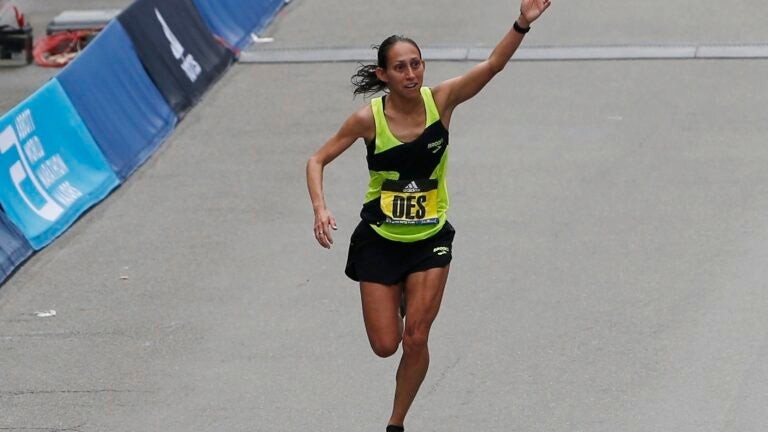
Two-time champion and course record holder Manuela Schär returns to defend her title in the women’s wheelchair race. Schär, a three-time Paralympic medalist from Switzerland, won Boston in 2017 and 2019 and is the only woman to have clocked a sub-1:30 marathon. Also among the wheelchair contenders is five-time Boston champion and 17-time Paralympic medalist Tatyana McFadden, who will race the 400 meters, 800 meters, 1500 meters, 5000 meters, and the marathon at the Tokyo Paralympic Games for Team USA.
The three returning men’s champions have all posted lifetime bests under 2:07:30. They are Kenya’s Geoffrey Kirui (2017), Ethiopia’s Lemi Berhanu (2016), and Yuki Kawauchi (2018), who will attempt to become the first man from Japan since Toshihiko Seiko in 1987 to earn two Boston Marathon titles.
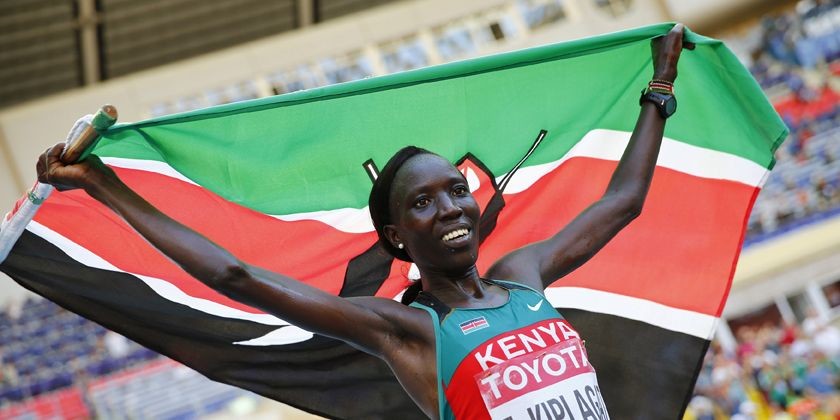
Four men’s wheelchair champions with a combined 16 titles will return, including defending champion Daniel Romanchuk of Illinois. The 2016 and 2021 Paralympian for Team USA made history by winning the 2019 race and Abbott World Marathon Majors Series XII at just 20 years old. Course record holder Marcel Hug of Switzerland, who had four straight wins from 2015-18, is back. Ernst van Dyk of South Africa, the most decorated champion in race history with 10 titles, also will compete, as will 2012 winner and former course record holder Josh Cassidy of Canada.
The race also features restructured prize money awards that will include equal course record bonuses for the open and wheelchair divisions and the introduction of prize money for the inaugural para athletics divisions. Boston will be the first Abbott World Marathon Major event to offer equal $50,000 course record bonuses across open and wheelchair divisions, and the first event to provide a designated prize purse for athletes with upper limb, lower limb, and visual impairments.
“We are delighted to welcome so many champions from such a diverse range of competition back to Boston for the 125th running of the Boston Marathon,” said Tom Grilk, BAA president and CEO. “While October’s race marks a long-awaited return to racing, it will also recognize and celebrate the many world-class athletes competing for an historic prize purse across multiple divisions.”
(07/14/2021) ⚡AMPby Andrew Mahoney
Boston Marathon
Among the nation’s oldest athletic clubs, the B.A.A. was established in 1887, and, in 1896, more than half of the U.S. Olympic Team at the first modern games was composed of B.A.A. club members. The Olympic Games provided the inspiration for the first Boston Marathon, which culminated the B.A.A. Games on April 19, 1897. John J. McDermott emerged from a...
more...World Athletics announced a decision on Wednesday to grant permits to 20 Russian athletes, allowing them to perform at international competitions.
"The World Athletics Doping Review Board has agreed that the applications of 20 Russian athletes have met the exceptional eligibility criteria to compete in international competition as neutral athletes in 2021," World Athletics press office said in a statement.
"A total of 143 Russian athletes have so far been declared eligible to compete as authorized neutral athletes in 2021," the statement reads. "Five applications have been rejected".

"The World Athletics Council approved the reinstatement of the authorized neutral athlete (ANA) program for clean athletes from Russia in March 2021, following the approval of the RusAF Reinstatement Plan," the statement continued.
"There is no cap on the number of Russian athletes, who may compete at international competitions in 2021 (outside of the Olympic Games and other championships), provided they have ANA status," the statement reads.

"The participation of all athletes granted ANA status is still subject to formalities under World Athletics Rules being completed (which could, in some cases, include additional testing) and to acceptance of their entries by individual meeting organizers," the statement added.
On March 18, the World Athletics Council announced a decision to reinstate "the Authorized Neutral Athlete (ANA) program for clean athletes from Russia." On March 31, the World Athletics Council published a list of guidelines on granting the ANA status to Russian track and field athletes this year.
According to a decision of World Athletics published earlier this year, no more than ten athletes would be able to get the ANA status to compete in major sporting events (Olympics, world championships and European U23 championships).
Russian athletes will be competing in Tokyo under the flag and logo of the Russian National Olympic Committee (ROC) instead of the Russian national flag and state emblem. The national anthem of Russia is also barred from use at the Olympics in Japan.
(07/14/2021) ⚡AMPby Russian News Agency
Tokyo 2020 Olympic Games
Fifty-six years after having organized the Olympic Games, the Japanese capital will be hosting a Summer edition for the second time, originally scheduled from July 24 to August 9, 2020, the games were postponed due to coronavirus outbreak, the postponed Tokyo Olympics will be held from July 23 to August 8 in 2021, according to the International Olympic Committee decision. ...
more...Former high school track star Mary Jane Richards, says she was sexually abused by her coach
In a shocking story published by CBC News last month, Ottawa native Mary Jane Richards revealed that her high school coach, Peter Des Brisay, groomed her for years for sex, and that the resulting trauma ended her track career.
Richards was one of the top high school runners in the country during the 1990s. She won the Ontario and Canadian cross-country championships three years in a row, and won almost every big race she entered. Des Brisay was Richards’ homeroom teacher at Ottawa’s Bell High School for four years, starting when she was just 13, as well as being her cross-country coach. Des Brisay, himself an accomplished athlete, took a special interest in her raw talent, and Richards says he became like a father figure.
“I had this really awesome adult who happened to be a really popular teacher and an amazing athlete, an amazing coach, thinking that I was worthy of that attention and special,” she told CBC News.
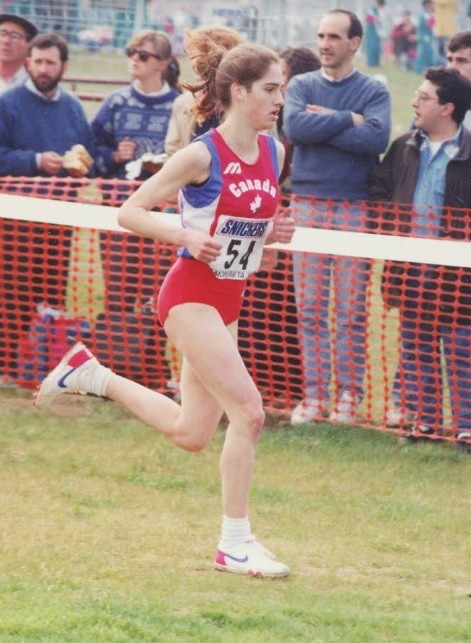
As she got older, the relationship progressed, eventually including “inappropriate massages, explicit emails and sexual intercourse,” Richards says. Now 44, she says what she thought was love was really an abuse of power by someone 15 years older than herself who was in a position of authority. The relationship between Richards and Des Brisay caused some alarm to those around them, including Ray Elrik, another coach who was often at competitions with the pair. On one occasion, he recalls telling Des Brisay “to keep the f–king door open” whenever she was in his room with him.
“Nobody’s allowed [to have] closed doors,” said Richards’ former teammate, Kristen Marvin. “That’s a policy. If ever coaches were in rooms, the door always had to be open.”

Ultimately, Richards chose to come forward in hopes that it will help others who have gone through similar experiences. “I also just want others to know, if they are carrying this alone, there is one more person out there who’s speaking up and talking about their experience,” she said. “It’s really hard, because it’s the most shameful thing that’s ever happened to you.”
Because it happened at such a young age, Richards describes the trauma she experienced as a cornerstone of her personality.
“I would have loved to have not been interfered with,” she added. “I would have loved for my trajectory not to have had a monkey wrench thrown into it. I would just have loved to see how far I could have gone without things changing the way they did.”
(07/14/2021) ⚡AMPby Brittany Hambleton
No barriers for record-breaker Bol
To break a national record once in a career is an amazing achievement. To set 12 of them in one year alone is something else. But that’s exactly what Dutch star Femke Bol has done so far in 2021, during a year in which her specialist event – the 400m hurdles – has been launched to another level.
The 52.37 Bol ran to win at the Wanda Diamond League meeting in Stockholm earlier this month made her the fourth-fastest ever in the history of the women’s 400m hurdles, but such is the strength in the event, she is not the quickest this year. The top spot is of course filled by Sydney McLaughlin thanks to her remarkable world record of 51.90 at the US Olympic Trials, while Bol is one of four women to have gone sub-52.50 this season.
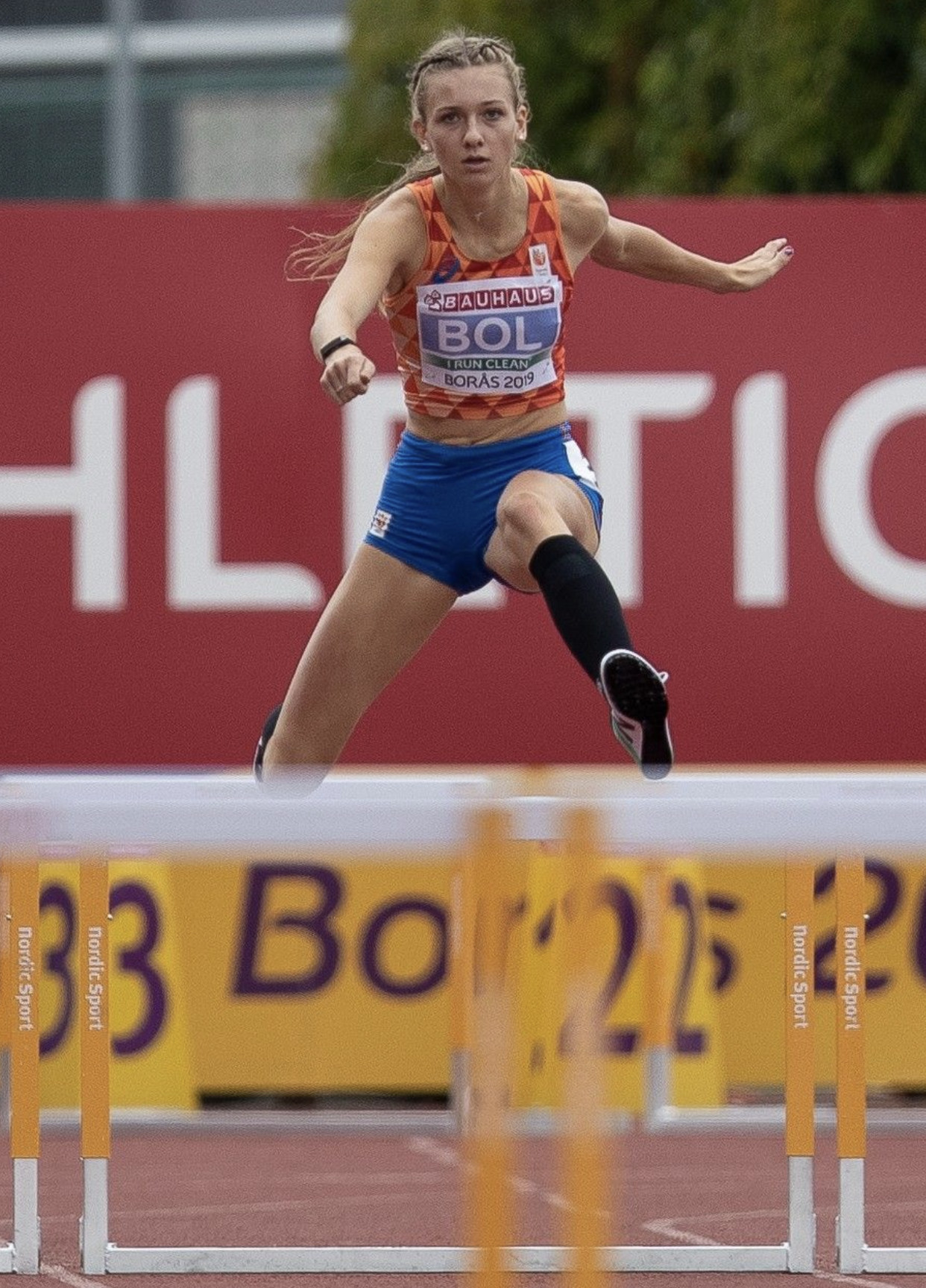
“We have such an amazing field,” Bol said. “I mean, the world record for women and men was broken in one week for both – it’s amazing to see the level of the 400m hurdles keep going up and that with my time I am now second in the world this year, not even first. Of course, you want to be first, but when the level in your event is so high, I think that is the best.”
It certainly makes things exciting, and it is that level of competition which the 21-year-old partly has to thank for her progress. After running 53.33 in Oslo, Bol said she was “curious” to find out what she might be capable of when really being pushed and she didn’t have to wait long to find out. Her 52.37 in Stockholm came just three days later as she narrowly held off the USA’s 2015 world silver medallist Shamier Little, whose PB of 52.39 in that race moved her to fifth on the world all-time list.
“When you have someone that you compete against, it always helps to push each other and I think that’s what makes it so beautiful, when competitors are really going against each other,” Bol had said before her race in Stockholm. “Like at the (US) trials, you see amazing times come from that. It is nice if you can be really competitive in the last metres, when you are full of lactic.”
The next day, after taking almost a second off her PB, a delighted Bol added: “I knew I was running against a really strong field and my coach and I said to each other: ‘Okay, I’m going to show that I can also do it under this pressure and when we push each other’. Shamier was coming so close, and I don’t think I have ever pushed as much in the last few metres. I am extremely happy and also that I did a good dip to win it.
“When I run these times, I am in the mix against the real good girls and I didn’t expect it, to be honest. I hoped I could do 52.9 maybe this year and I felt I was getting close to that, and now I have run one second faster (than her previous PB). It’s not yet making sense in my head!”
Until 2019, Bol’s focus had been on the 400m flat – the event in which she made the semifinals of the 2017 European U20 Championships. But in that first year of taking on the 400m hurdles the communication sciences student won the European U20 title and competed at her first World Athletics Championships, having started her senior international career by forming part of the Dutch team for the 2019 World Athletics Relays in Yokohama. Much has changed since then and she has the benefit of major event experience as she prepares to make her Olympic debut in Tokyo.
“Dafne once said to me: ‘Everywhere you go, it’s a track and you do your 400m hurdles’ and that’s really something I always keep in mind,” Bol revealed. “Okay, I’m at the Olympics, but it’s again just the 400m hurdles I have to do and do my best race. That’s mostly what I think, and having that experience of knowing how to recover between the heats, semis and final.”
So what is her focus during these final few weeks? “Just to keep cool, do my own thing and focus on the things I have to do, to do well at the Olympics,” Bol replied with a smile.
"I couldn't have had a better preparation for Tokyo and I cannot wait now."
(07/14/2021) ⚡AMPJake Wightman aiming to break 38-year-old Scottish record in final Tokyo tune up
The Olympic-bound Scot, who turned 27 on Sunday, will sign off his build-up in the historic Emsley Carr Mile at the Diamond League leg against a largely domestic field that also includes his 1500m rival at the Games, Jake Heyward. But despite two wins in four starts this summer, Wightman admits he’s hunting a fast time for the ideal pre-Games booster ahead of his medal tilt.
“It's weird running this because it could not go well,” he said. “And it would not be a nice way to go into Olympics. But I want to be able to try and run quick because I feel like the rounds in Tokyo, and especially a final, could potentially be quick. And I've not gone fast this year, really. So I want to try and make sure I get a race which prepares me for that.”
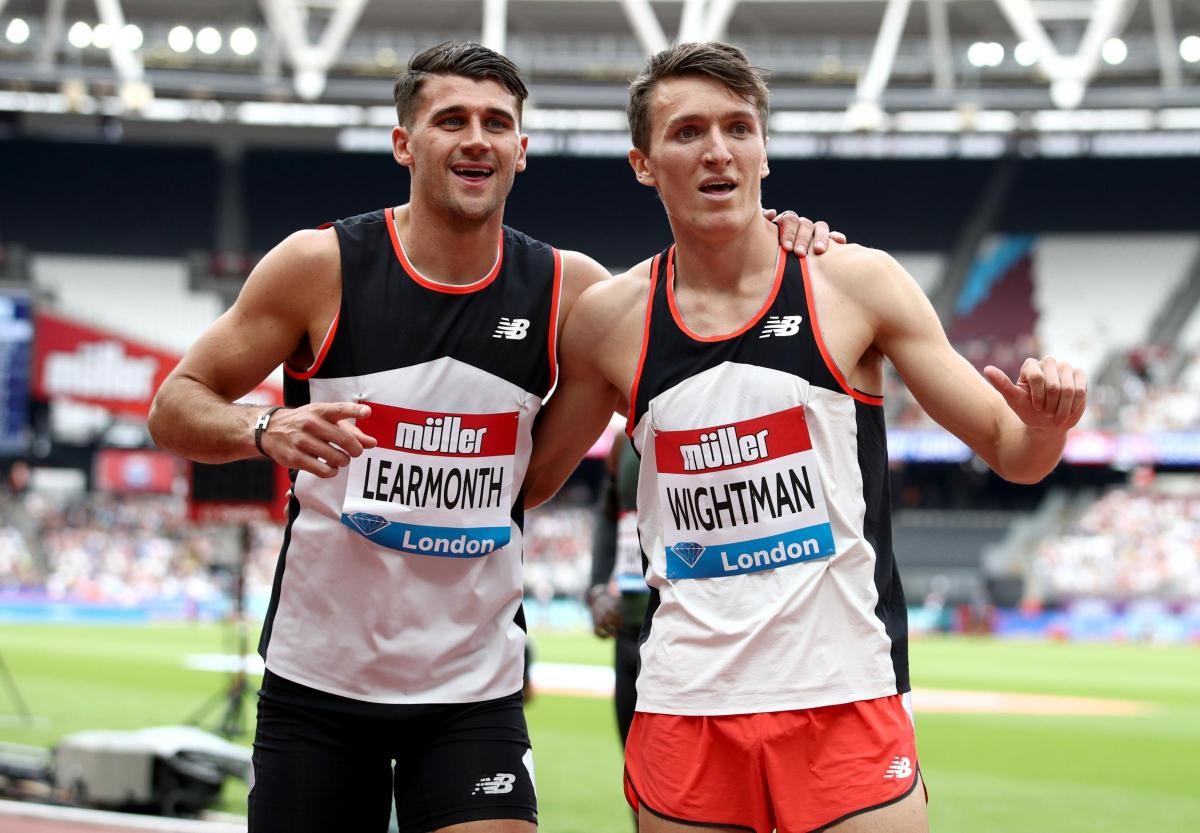
The European medalist will target Graham Williamson’s Scottish mile record of 3:50.64 that has stood for exactly 38 years to the very day.
Andy Butchart is slated to run the 3000m at the Grand Prix despite his Olympic place remaining in limbo just days before he is due to travel to Japan. Nicole Yeargin will get her Diamond League debut in the women’s 400m while Beth Dobbin takes on Rio 2016 gold medallist Elaine Thompson over 200m.

For Wightman and his Edinburgh club-mate Josh Kerr, there remains uncertainty too, with no confirmation still on the fate of world 1500m champion Timothy Cheriuyot, whose omission from the Kenyan team for Tokyo could yet be overturned. But whether or not the fastest man in the world this year is at the Games, opportunity knocks, Wightman insists.
“I don't think that the rest of us are that far behind or going to be discounted,” he said. “We could still be in there. Matt Centrowitz from 2016 is the one person that keeps me going. Thinking that anything can happen in an Olympic final. Because nobody would have said that Centro was going to win that race. If you have a perfect day, you can do anything.”
“Hopefully I get that,” he said. “Steve Cram let me know he has got the stadium record. So that's another incentive, to try and get that.
“I need to try and improve my mile time. I don't really getting the chance to run them too often. And obviously there's a lot of history in the event. So have a time that you can say is sub-3.50 to me is a lot bigger deal than obviously running four minutes, which I did a while ago.”
(07/13/2021) ⚡AMPby The Scotman
Tokyo 2020 Olympic Games
Fifty-six years after having organized the Olympic Games, the Japanese capital will be hosting a Summer edition for the second time, originally scheduled from July 24 to August 9, 2020, the games were postponed due to coronavirus outbreak, the postponed Tokyo Olympics will be held from July 23 to August 8 in 2021, according to the International Olympic Committee decision. ...
more...Sha'Carri Richardson set to return in Diamond League Prefontaine Classic
American sprinter Sha'Carri Richardson will run the 100 and 200 metres in the Diamond League Prefontaine Classic after completing a one-month ban.
Richardson, 21, was a favourite for the 100m at the Tokyo Olympics but tested positive for cannabis at last month's US Track & Field trials.
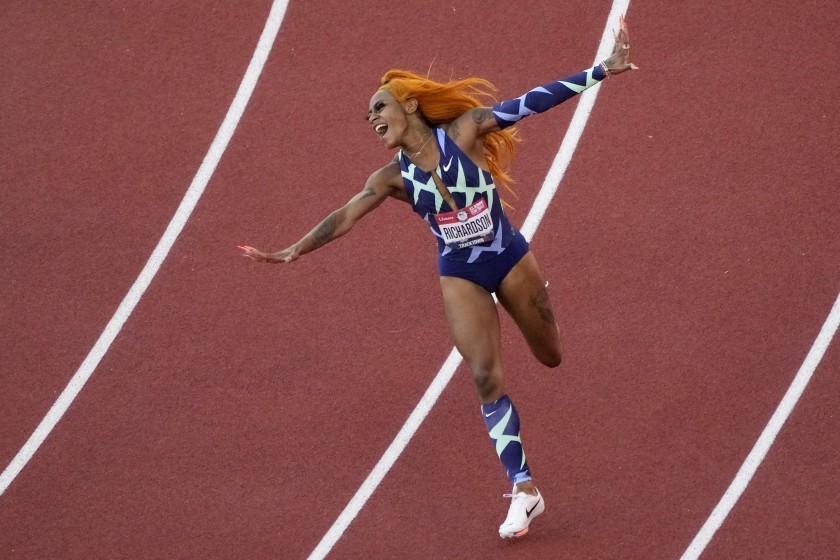
She was prevented from running in the 100m at the Games, and USA Track & Field (USATF) later declined to include her in the relay.
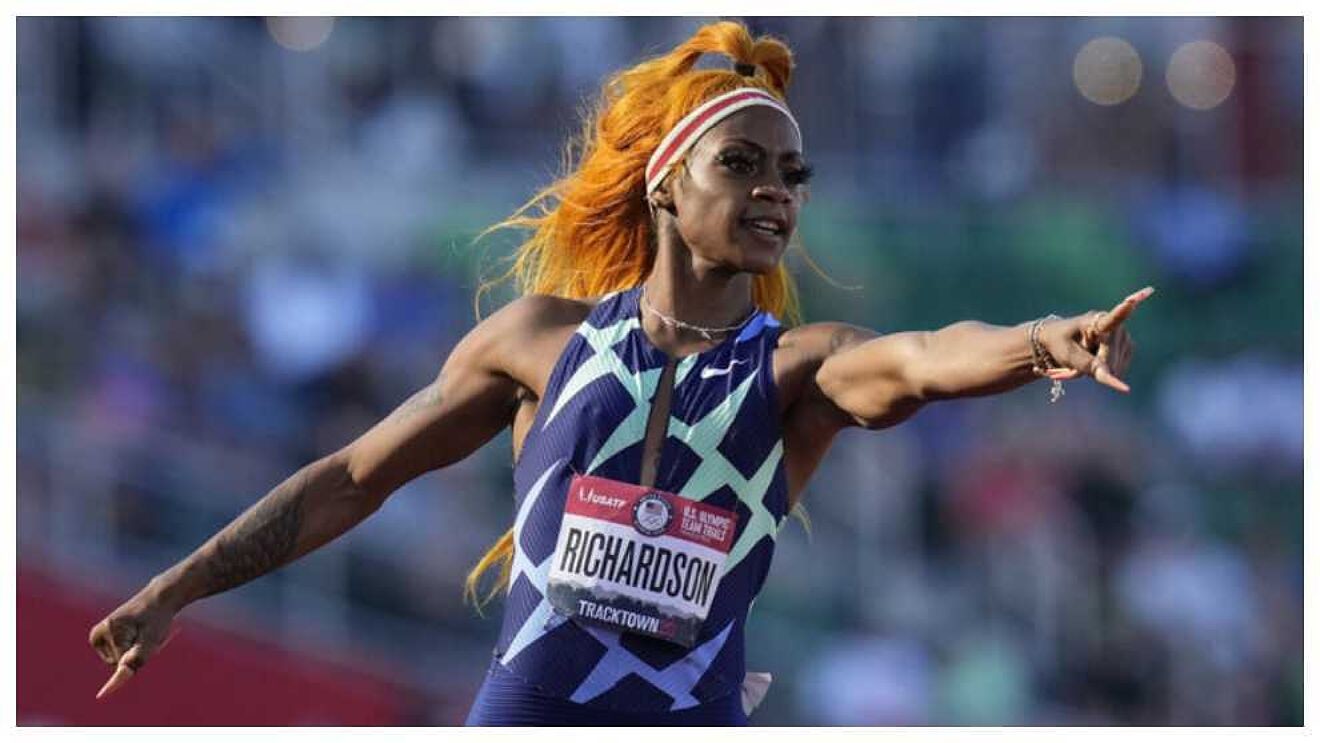
Richardson's ban ends on 28 July.
"I'm looking forward to running fast and putting on a show," she said.
Richardson's ban has reignited fierce debate over the use of cannabis in sport, with the White House reportedly seeking a meeting with the World Anti-Doping Agency (Wada) to discuss rules regarding the banned substance.
The sprinter explained she had taken it as a way of coping after learning about the death of her biological mother, and US anti-doping authorities said in her case if had been a "substance of abuse" rather than for enhancing performance.
The Prefontaine Classic runs from August 20-21 at Eugene's Hayward Field, kicking off the Diamond League's post-Olympic series of events.
(07/12/2021) ⚡AMPby Athletics
With the Tokyo Olympics less than two weeks away Bromell, Thompson-Herah and Vetter headline last Diamond League
With the Tokyo Olympics less than two weeks away, many of the world’s top athletes will get a last chance to test their competitive form when they line up in the Wanda Diamond League meeting in Gateshead, England, on Tuesday (13).
US sprinter Trayvon Bromell, German javelin thrower Johannes Vetter, Jamaican sprint star Elaine Thompson-Herah and British heptathlete Katarina Johnson-Thompson are among the top names entered in the Muller Grand Prix.
Despite the late withdrawals of British world 200m champion Dina Asher-Smith and Dutch middle-distance star Sifan Hassan, the meet features an array of world and Olympic champions and will serve as a crucial tune-up ahead of Tokyo.
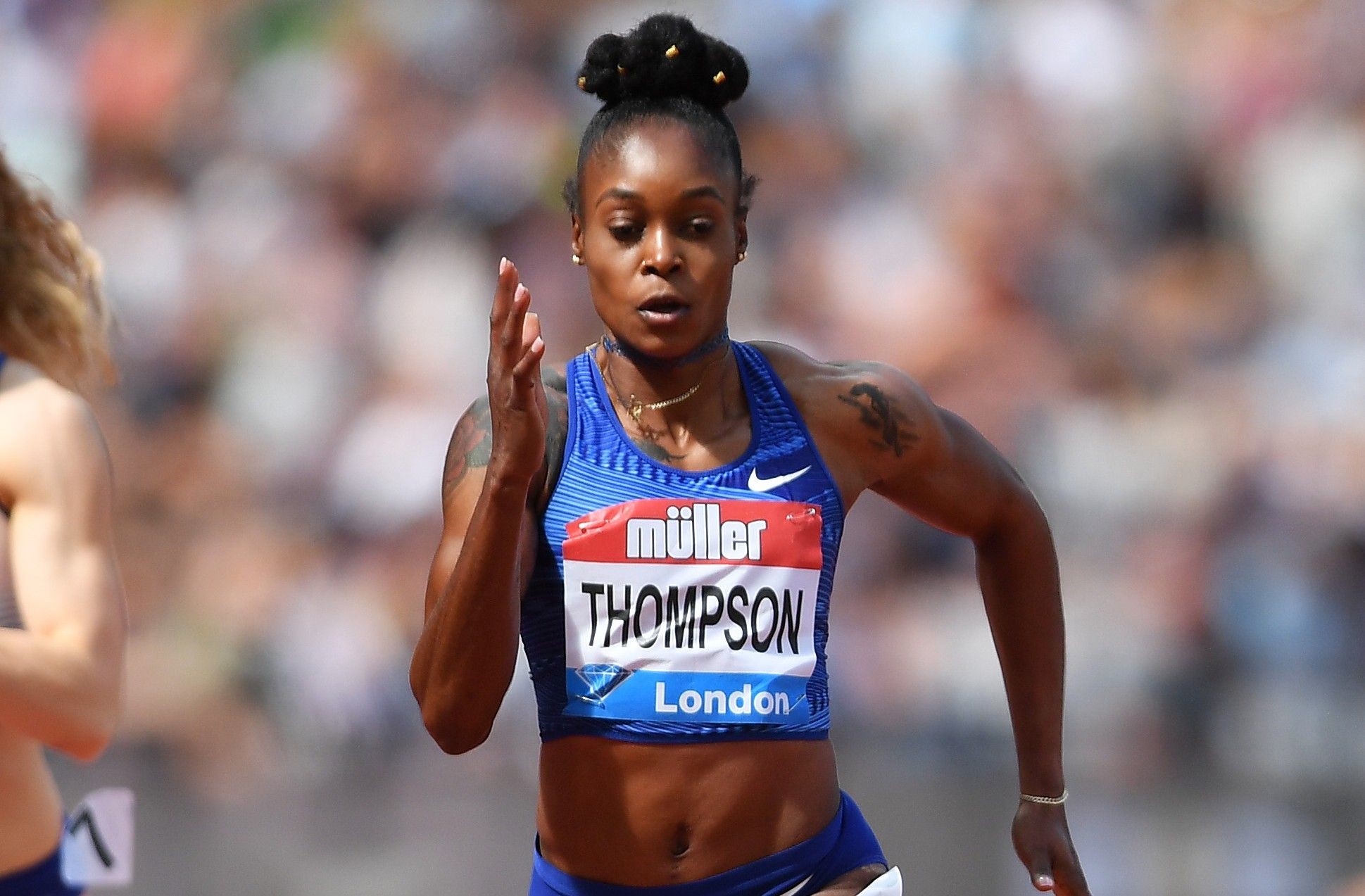
The seventh Diamond League meeting of the season – and second in Gateshead – comes just 10 days before the 23 July opening of the Tokyo Games and 17 days before the start of the Olympic athletics competition on 30 July.
Many athletes are returning to the venue in northeast England for the second time this season. Gateshead hosted the Diamond League opener in May after the meeting was moved from Rabat, Morocco. Tuesday’s meeting was originally scheduled to take place at the Olympic Stadium in London but was switched to Gateshead due to the Covid-19 pandemic.
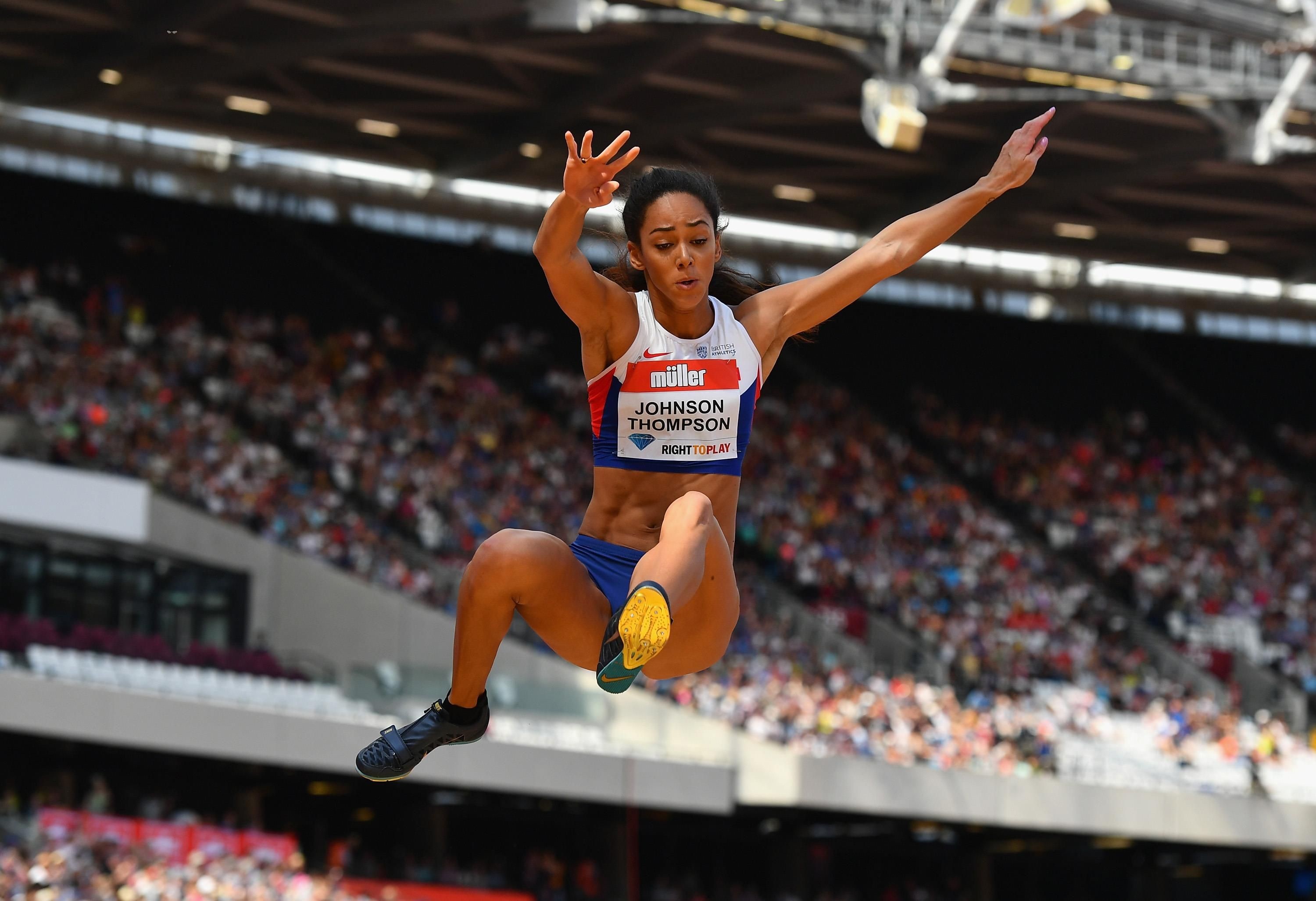
World 100m leader Bromell will be looking to bounce back after a disappointing performance in last Friday’s Herculis EBS Diamond League meeting in Monaco, where he clocked 10.01 and finished fifth in a race won by American teammate Ronnie Baker in 9.91. It was Bromell’s first 100m defeat since 2019, having won four races in 2020 and 10 this year.
Bromell, who ran 9.77 in June for the fastest time in the world this year and won the 100m in 9.80 at the US Olympic Trials in Eugene last month, will be determined to regain the form that made him the favourite for gold in Tokyo.
Bromell will go up against Fred Kerley, who qualified for Tokyo by finishing third in 9.86 at the US trials, and Canada’s Andre De Grasse, the Olympic and world 100m bronze medallist. Isiah Young, who has clocked 9.89 this season, is also in the 100m line-up, along with British sprinters Adam Gemili and Chijindu Ujah.
About 40 members of Team GB’s athletics team for Tokyo – more than half the entire squad – will be in action in Gateshead. Missing, however, will be Asher-Smith, who pulled out citing a tight hamstring. She opted not to take any risks ahead of the Olympics.
“As you all know, I love running in front of a home crowd but I have to make smart decisions for myself and my body ahead of Tokyo,’’ Asher-Smith said in a statement on Twitter. “I’m sorry to those who were hoping to see me run this week but I’m looking forward to making you all proud in a few weeks’ time.”
Asher-Smith had been scheduled to run the 200m in a marquee matchup against Thompson-Herah, the reigning Olympic 100m and 200m champion. The Jamaican will now be the favourite in a field that also includes American Tamara Clark, who finished fourth in the US Olympic Trials in a personal best of 21.98.
Hassan, the women’s world champion at 1500m and 10,000m, also withdrew due to a tight hamstring and preferring not to take any chances before Tokyo, where she looks set to contest the 5000m-10,000m double. Hasan had been scheduled to run the mile, in which she holds the world record of 4:12.33. Winnie Nanyondo of Uganda, who has a season’s best of 4:00.84 in the 1500m, and American Kate Grace, who clocked 1:57.36 for the 800m in Stockholm, now start as favourites.
The men’s mile has past winner Jake Wightman of Britain in the field along with European indoor 800m record-breaker Elliot Giles, who will be running the 800m in Tokyo.
If conditions are good, Vetter could challenge Jan Zelezny’s 25-year-old javelin world record of 98.48m. The German came close last year with a throw of 97.76m and threw 96.29m to win his event at the European Team Championships in May. Vetter has been successful competing in Britain, winning the world title in London in 2017.
Javelin records have been set in the UK before, with Zelezny throwing 95.66m in Sheffield in 1993 and Britain’s Steve Backley setting a mark of 90.98m at London’s Crystal Palace in 1990. Also in the javelin field in Gateshead are world champion Anderson Peters of Grenada and 2012 Olympic gold medallist Keshorn Walcott of Trinidad & Tobago.
Still making her way back to full fitness after an Achilles injury, Johnson-Thompson is entered in the women’s long jump, where she will take on world champion Malaika Mihambo of Germany. In Stockholm, Mihambo produced the best jump of 7.02m in the third round but settled for second place in the new final-three format when her final effort of 6.77m was bettered by the 6.88m of Ivana Spanovic of Serbia.
In the women’s 400m hurdles, 21-year-old Dutch star Femke Bol will resume her rivalry with US athlete Shamier Little for the third time this season.
(07/12/2021) ⚡AMPby World Athletics
The multiple World 3000m steeplechase champion Ezekiel Kemboi says he is satisfied with his accomplishments on the track and wants to transition to marathon races
Multiple world 3000m steeplechase champion and double-Olympic gold medalist Ezekiel Kemboi said he chose to focus on road races because he felt he had nothing left to prove on the track.
The legend, who boasts four world titles to his name, said he is satisfied with his accomplishments on the track during which he won various medals on offer, including gold, silver and bronze.
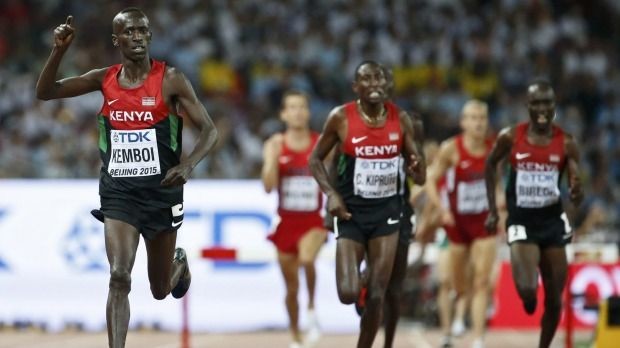
“I won everything, all the medals, and it’s like in politics, you can’t be president and come back to be an MCA,” Kemboi said.
Apart from the four gold won at the eight world championships in which he participated, Kemboi also clinched three silver medals in addition to a gold medal at the 2006 Commonwealth Games in Melbourne, Australia.
His first Olympic gold at the 2004 Olympics in Athens was followed by another at the London Olympics in 2012.
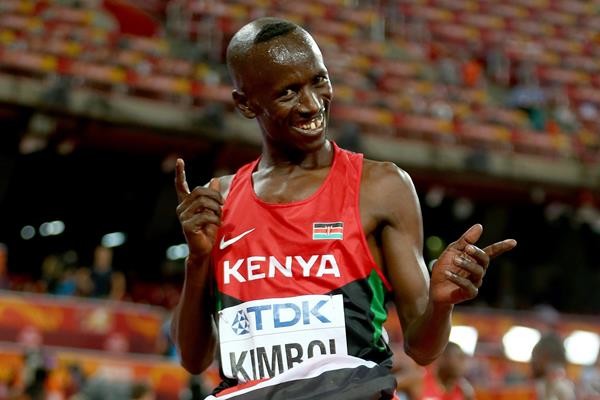
Kemboi reminisces on that win in Athens as the groundwork for what would be a colourful career of which the 2009 World Championships in Berlin stands out.
“The guys in that race were very strong. I remember around five guys who had participated in Diamond league, and I emerged a winner. That was the best race for me,” he said.
During the Rio Olympics in 2016, Kemboi stepped out of the race after being pushed by a fellow athlete.
“Some guy from Eritrea pushed me and I lost momentum, I then stepped on the inner lane and it’s a rule when you step you get disqualified. It was good for me because sometimes it’s good to have ups and downs,” he recalls.
Kemboi willingly gave away his bronze medal to the number four athlete who protested that he had broken some rule.
(07/12/2021) ⚡AMPby Laura Shatuma
Postponed 2021 Hong Kong Marathon set for October with 75 per cent cut in numbers
The twice-postponed 2021 Hong Kong Marathon, due to take place in October, will have its numbers cut by 75 per cent to 18,500, organisers have announced.
The participation numbers within the full, half marathon and 10km events has been reduced from its normal total of 74,000 as part of COVID-19 precautions.
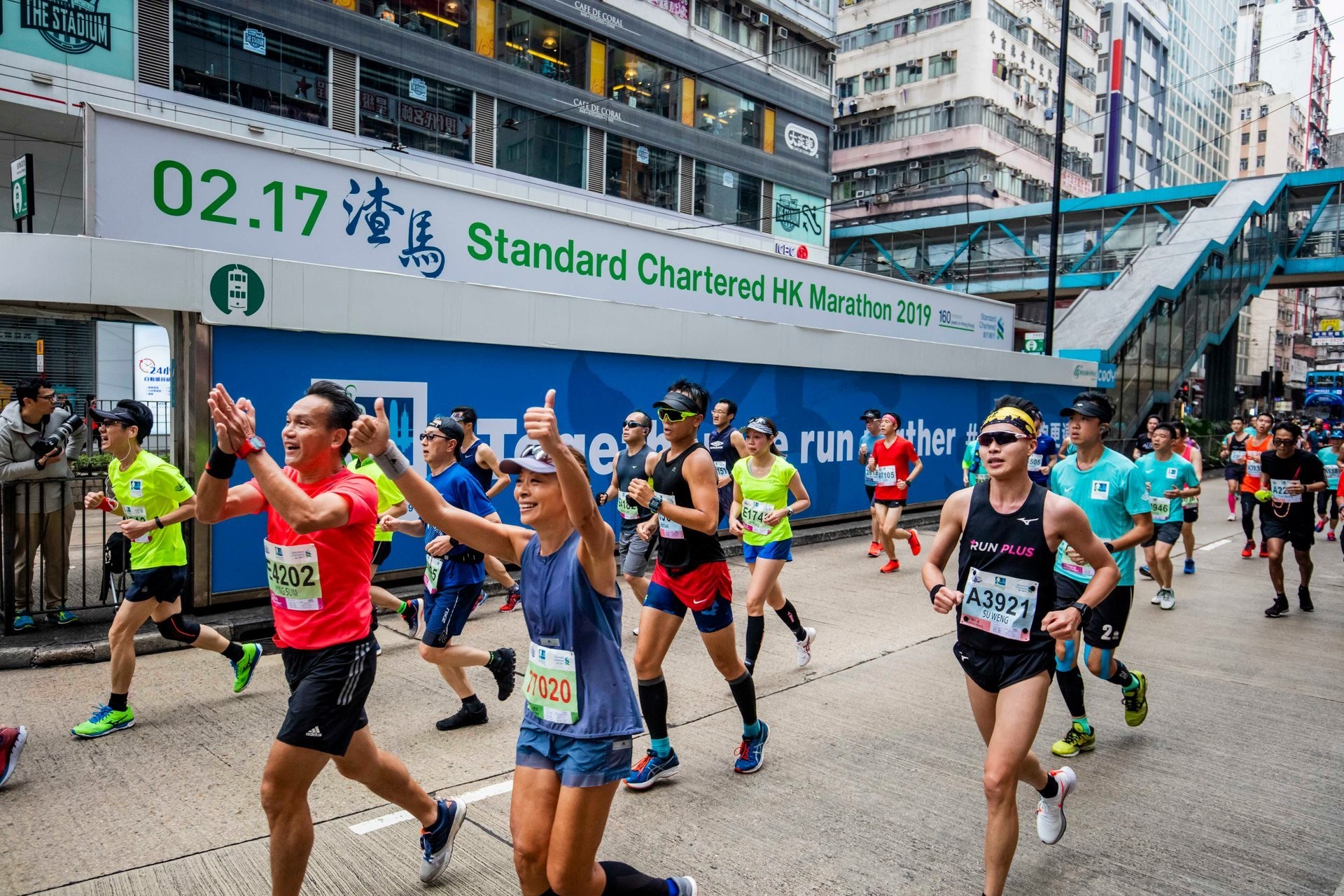
The Hong Kong Association of Athletics Affiliates (HKAAA) said the Home Affairs Bureau had agreed in principle for the postponed event to take place but it still needed a stamp of approval from the government and Centre for Health Protection.
Organisers are seeking approval for the re-shaped event from senior Government and medical experts by August to have time to prepare for the races.
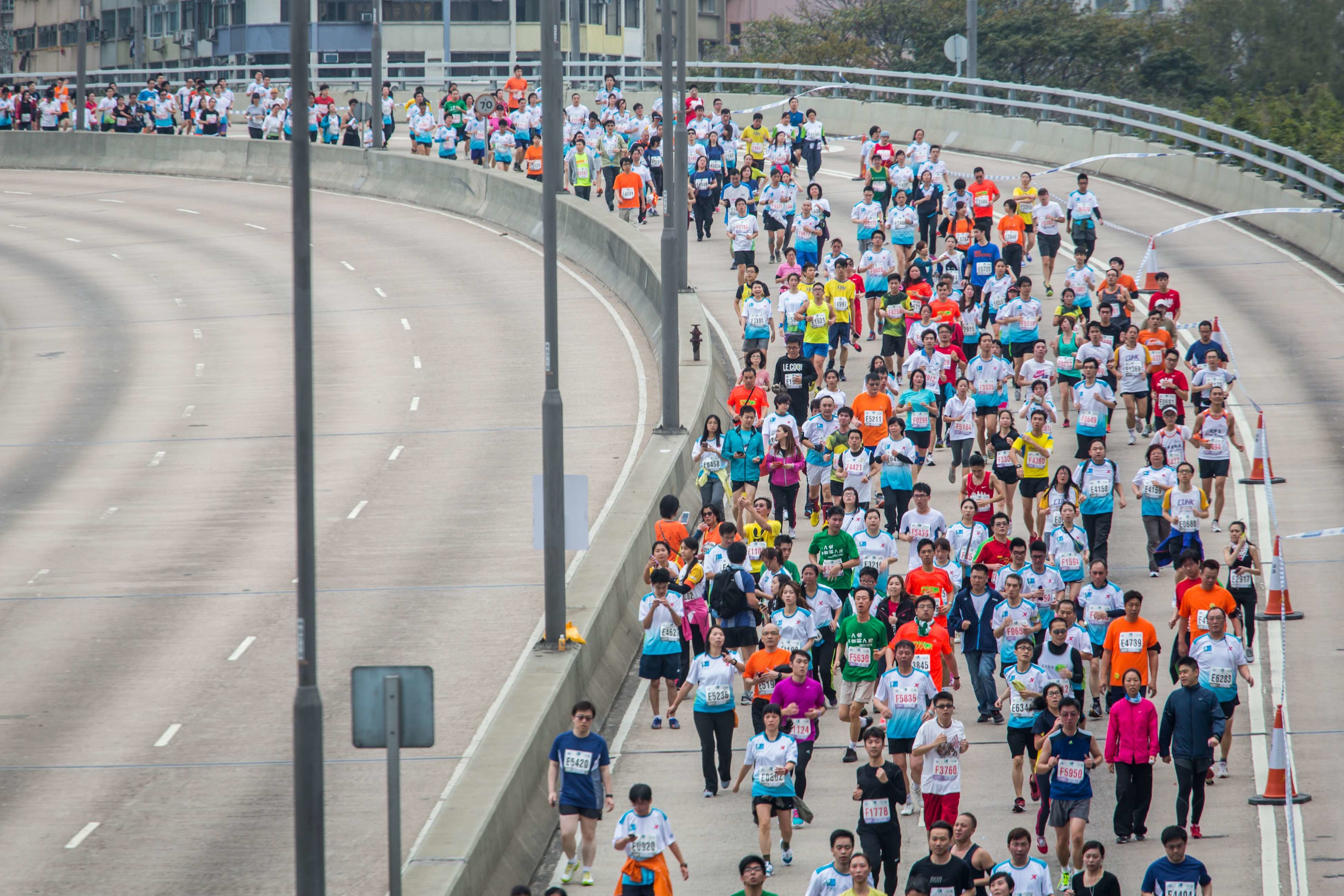
Negotiations for the latest arrangement began in March.
The 2021 race, due to take place on January 24, was postponed to April and then again to October.
The half and full marathons will accommodate 6,500 and 4,000 runners respectively, with the route largely unchanged from previous years.
The 10km race, which will involve 8,000 runners, will start at the Western Tunnel Toll Plaza as opposed to its usual location at the Island Eastern Corridor.
This is to ensure all three races share the same route to minimise the chance of COVID-19 infections.
The roll-out-style starting times remain the same despite the reduced field, with runners going off in batches of 200 to minimise contact.
All participants must be fully vaccinated at least two weeks before the race and must arrive with their masks on before the race, although they can remove them at the start line.
"The Government is eager to bring people back to normal life, and with the recent ease of the pandemic [restrictions], we are quite confident in finding a resolution to pave a way to stage the event his year," said HKAAA chairman Kwan Kee.
World governing body World Athletics said given the pandemic, there was no need to classify the event as gold-label and therefore organisers do not need to meet the "top runner" threshold.
Organisers nonetheless plan to invite elite runners from neighbouring countries who have comparatively lighter Government-imposed quarantine requirements.
They added that a bubble scenario was not feasible in terms of money and manpower.
In case the HKAAA needed to call off the event 14 days in advance, there will be a 50 per cent refund on entry fees - any later and refunds will not be offered, as is the case with many international race events this year.
Organisers have also pencilled in next year’s Standard Chartered Marathon events for February 13, 2022
(07/11/2021) ⚡AMPby Mike Rowbottom
HONG KONG MARATHON
The Hong Kong Marathon, sponsored by Standard Chartered Bank, is an annual marathon race held in January or February in Hong Kong. In addition to the full marathon, a 10 km run and a half marathon are also held. Around 70,000 runners take part each year across all events. High levels of humidity and a difficult course make finishing times...
more...




